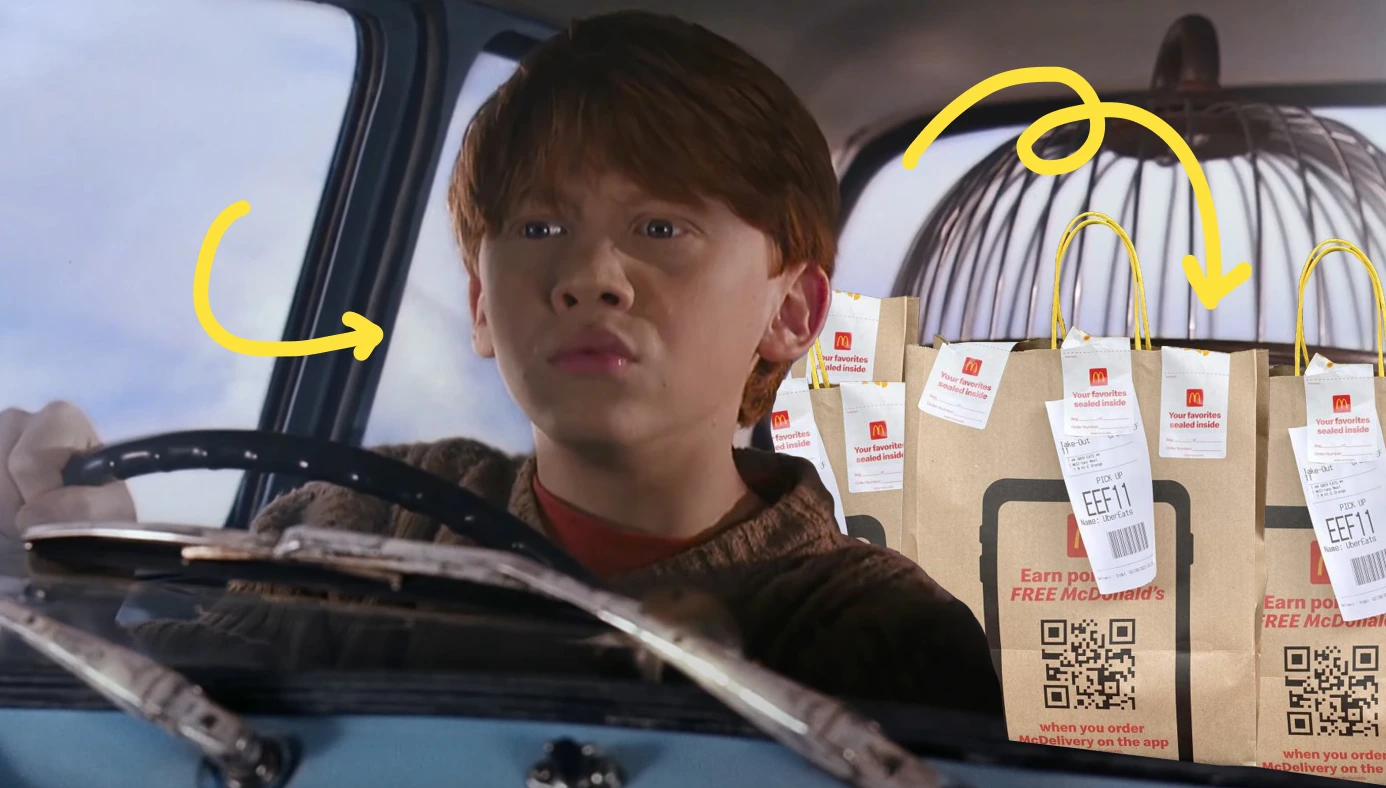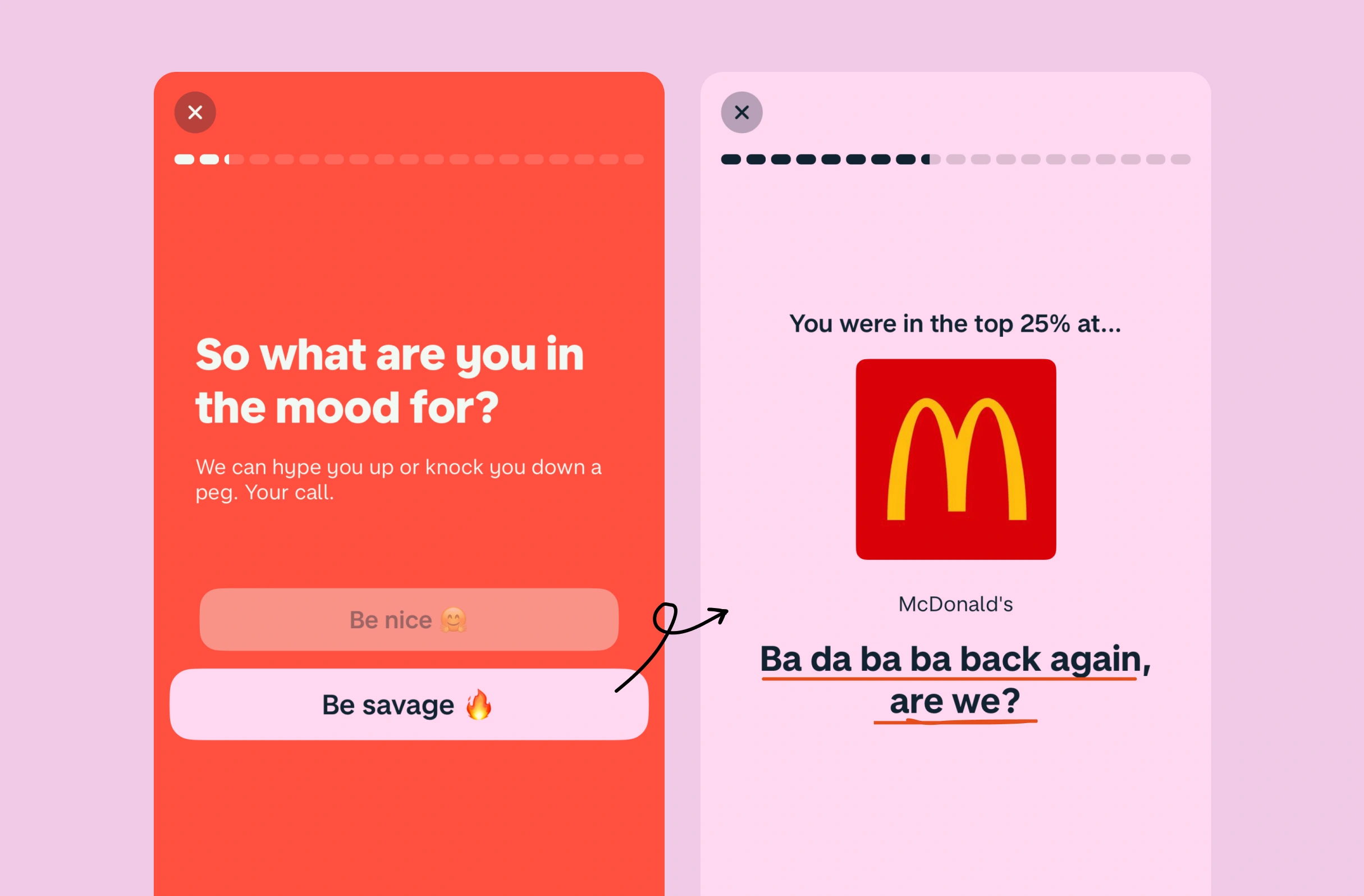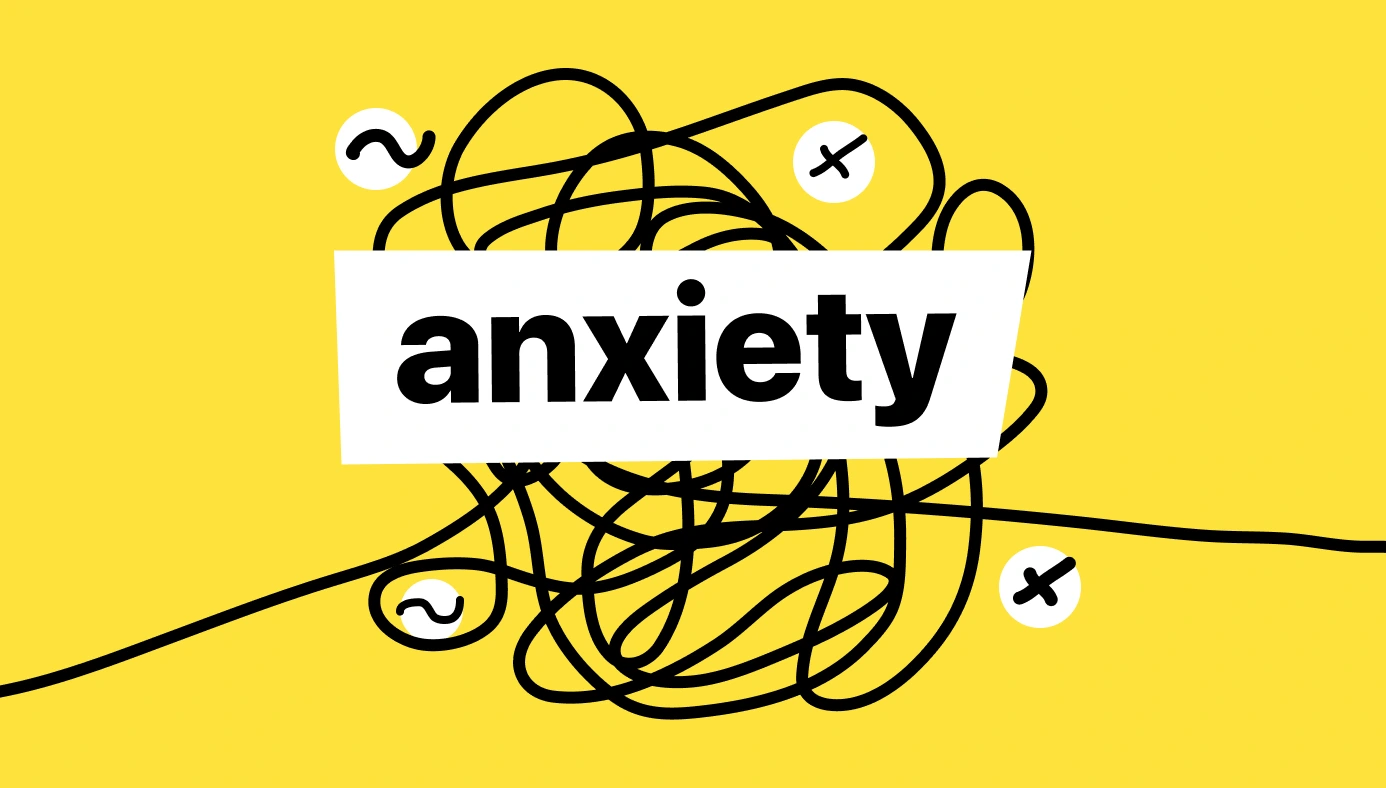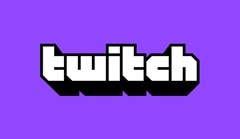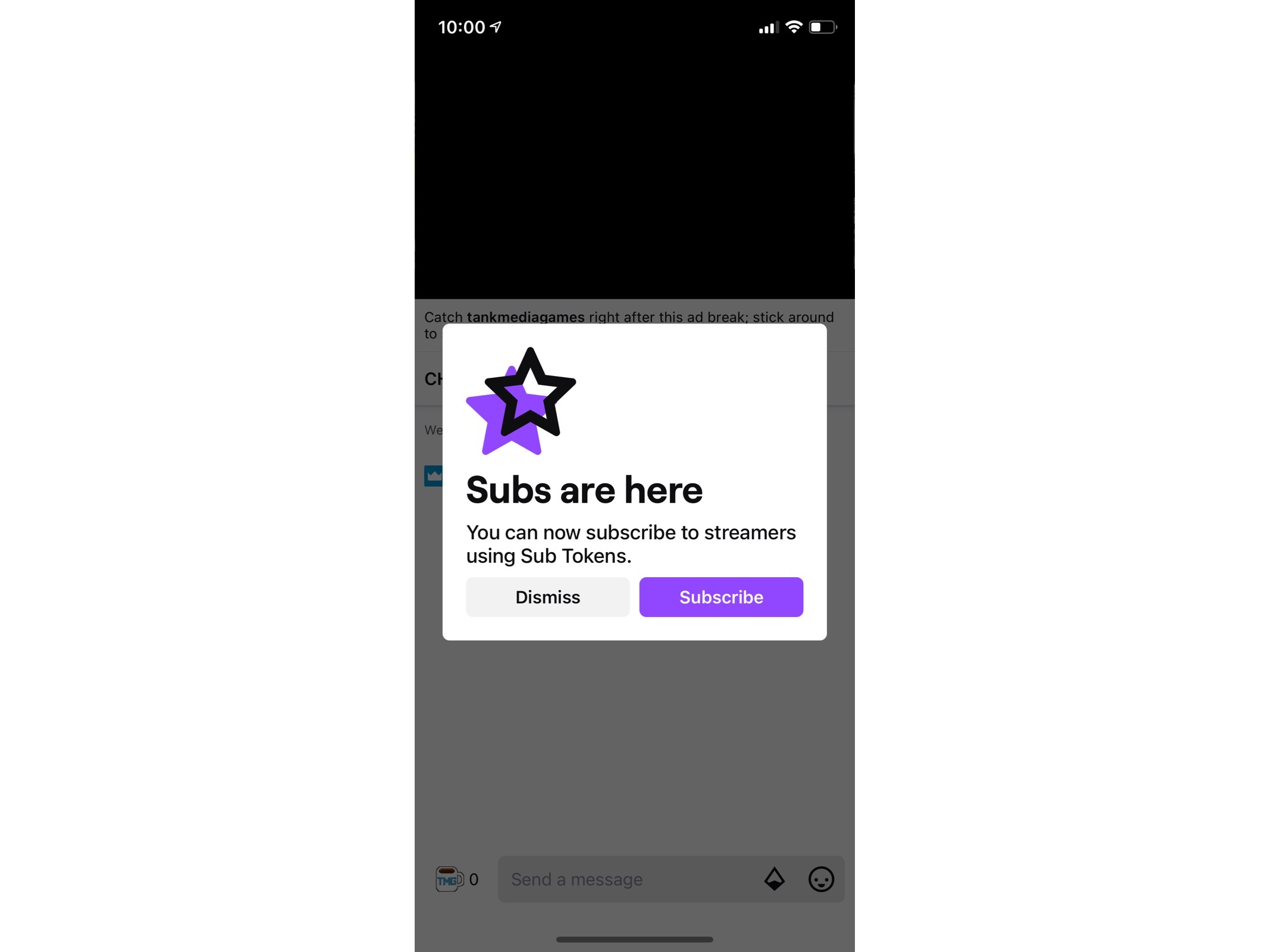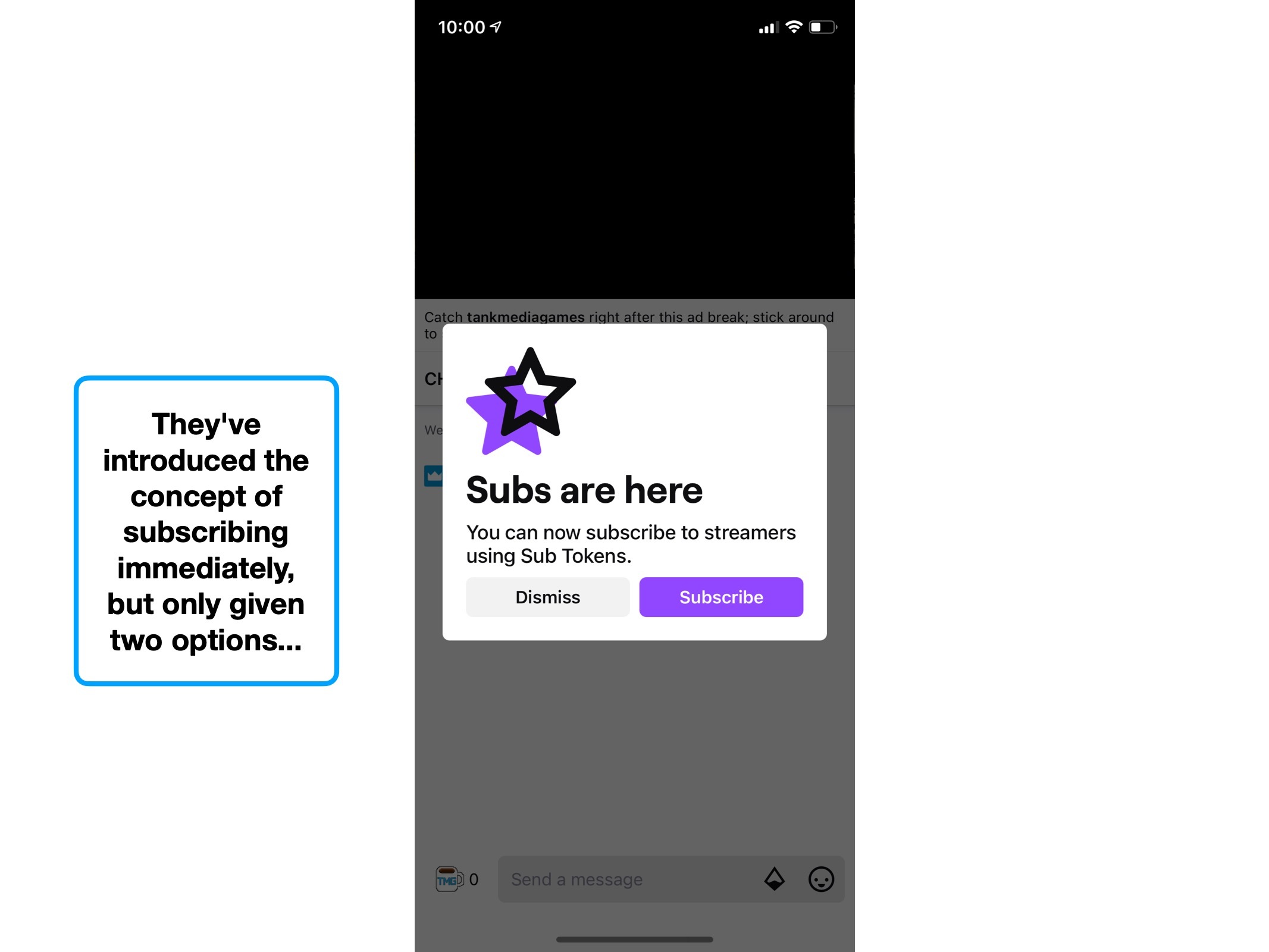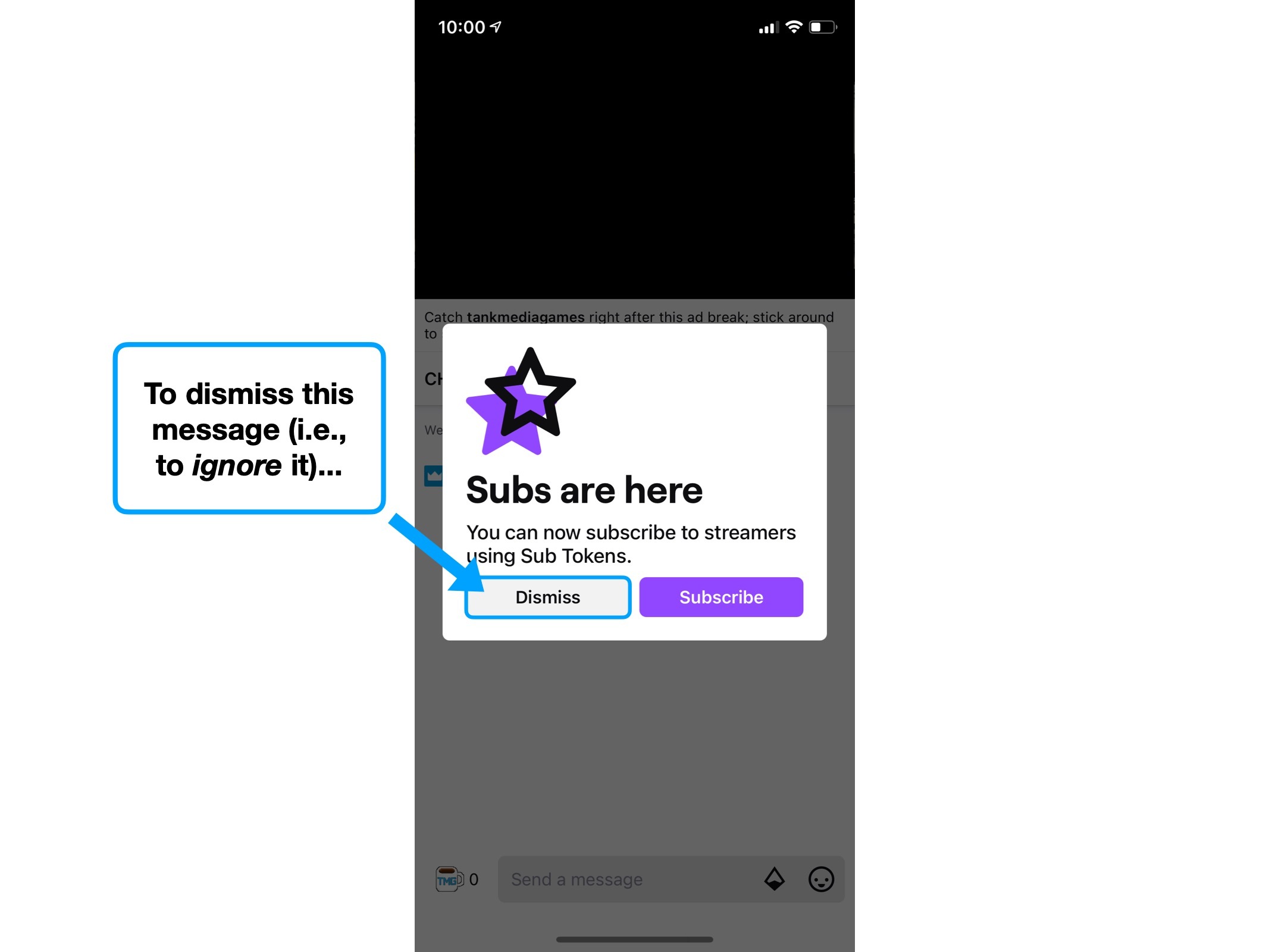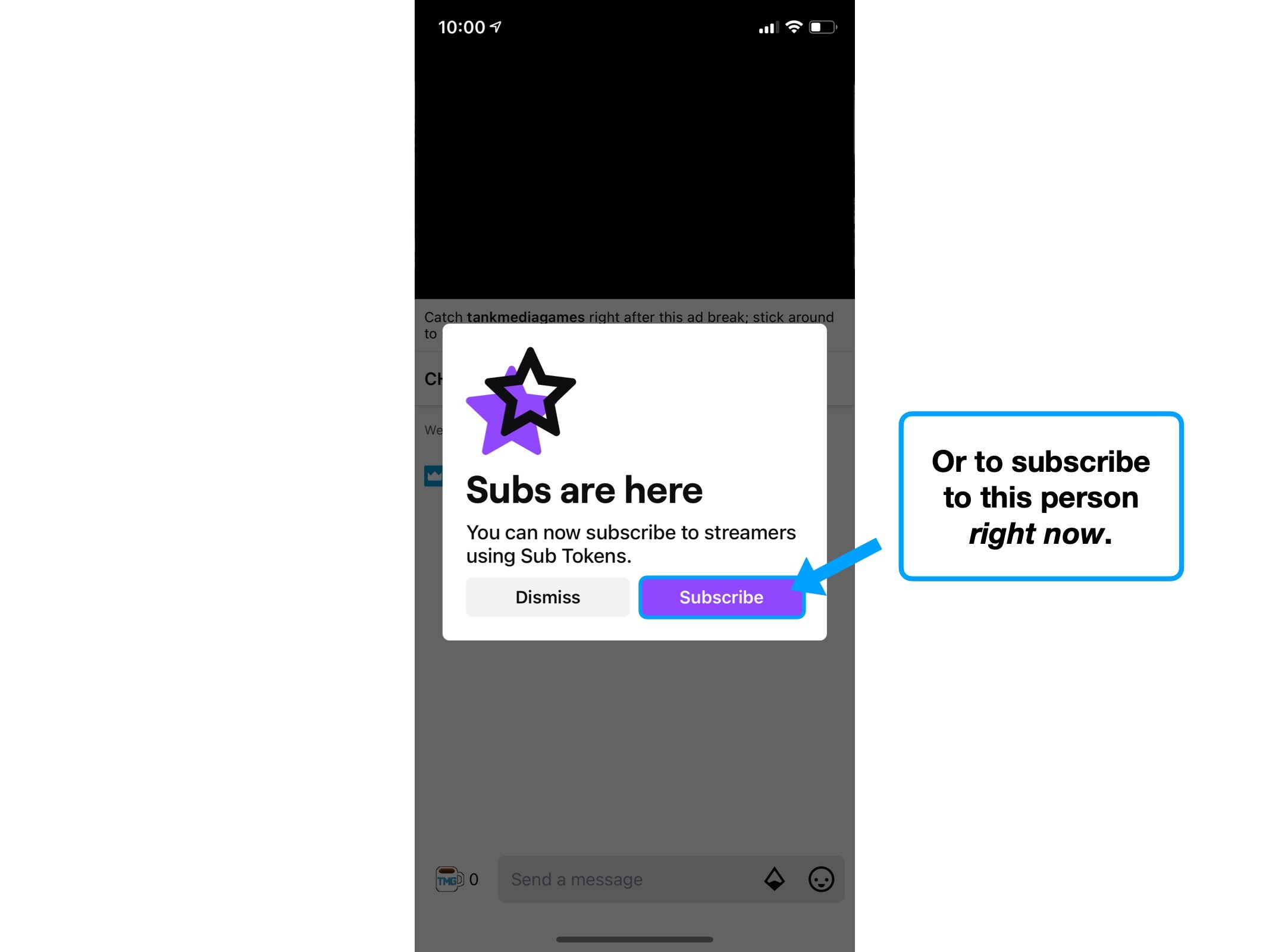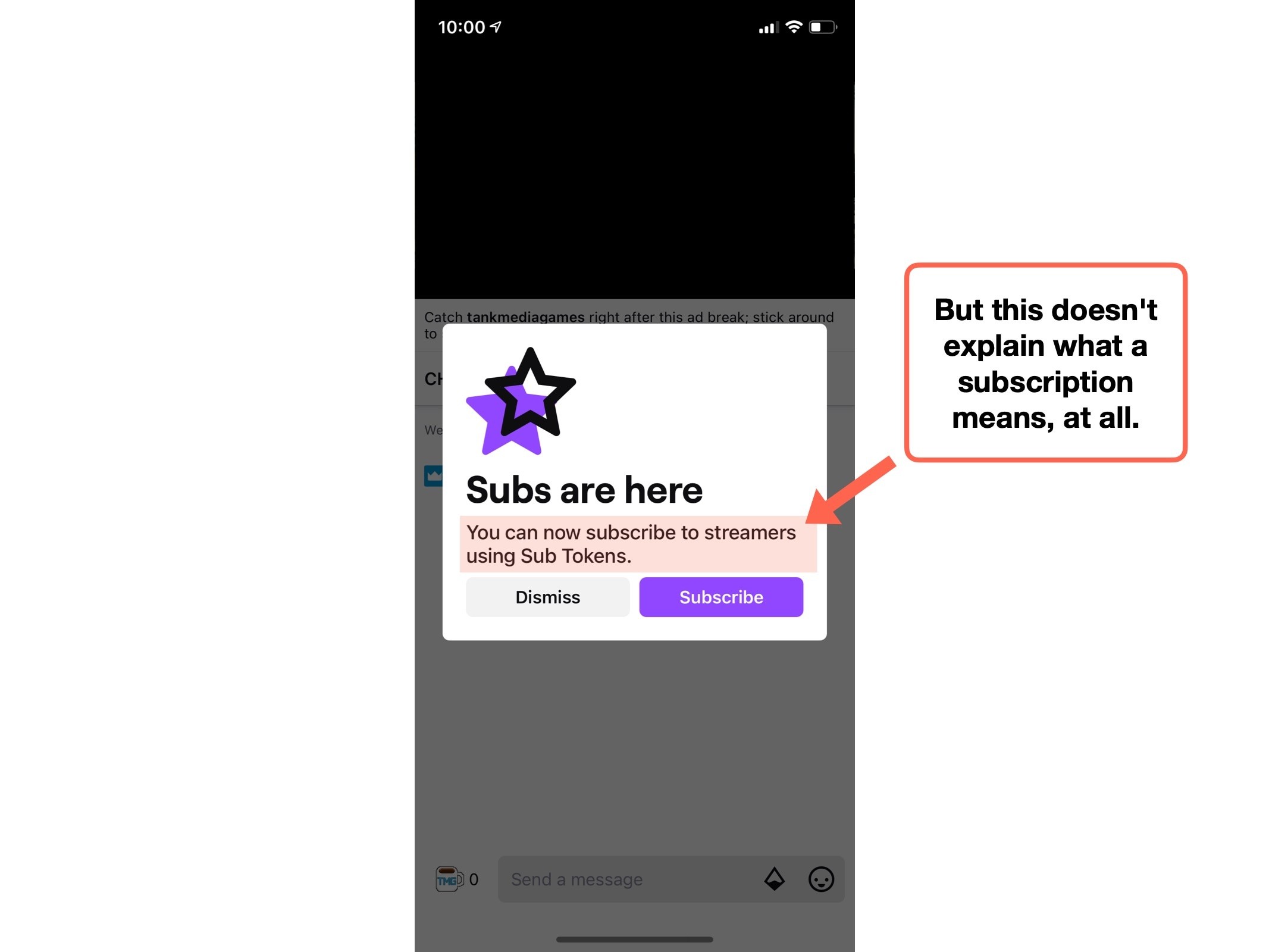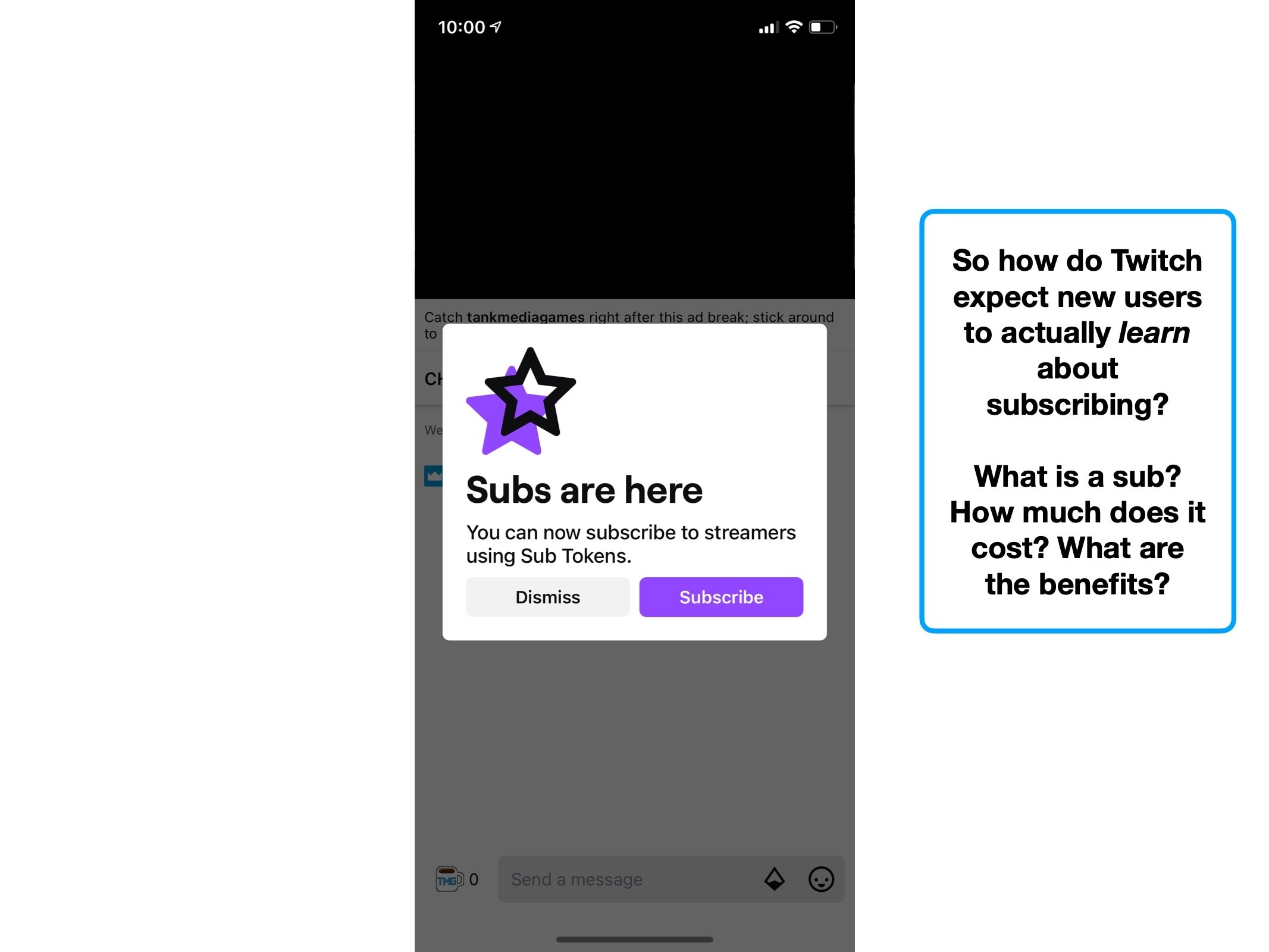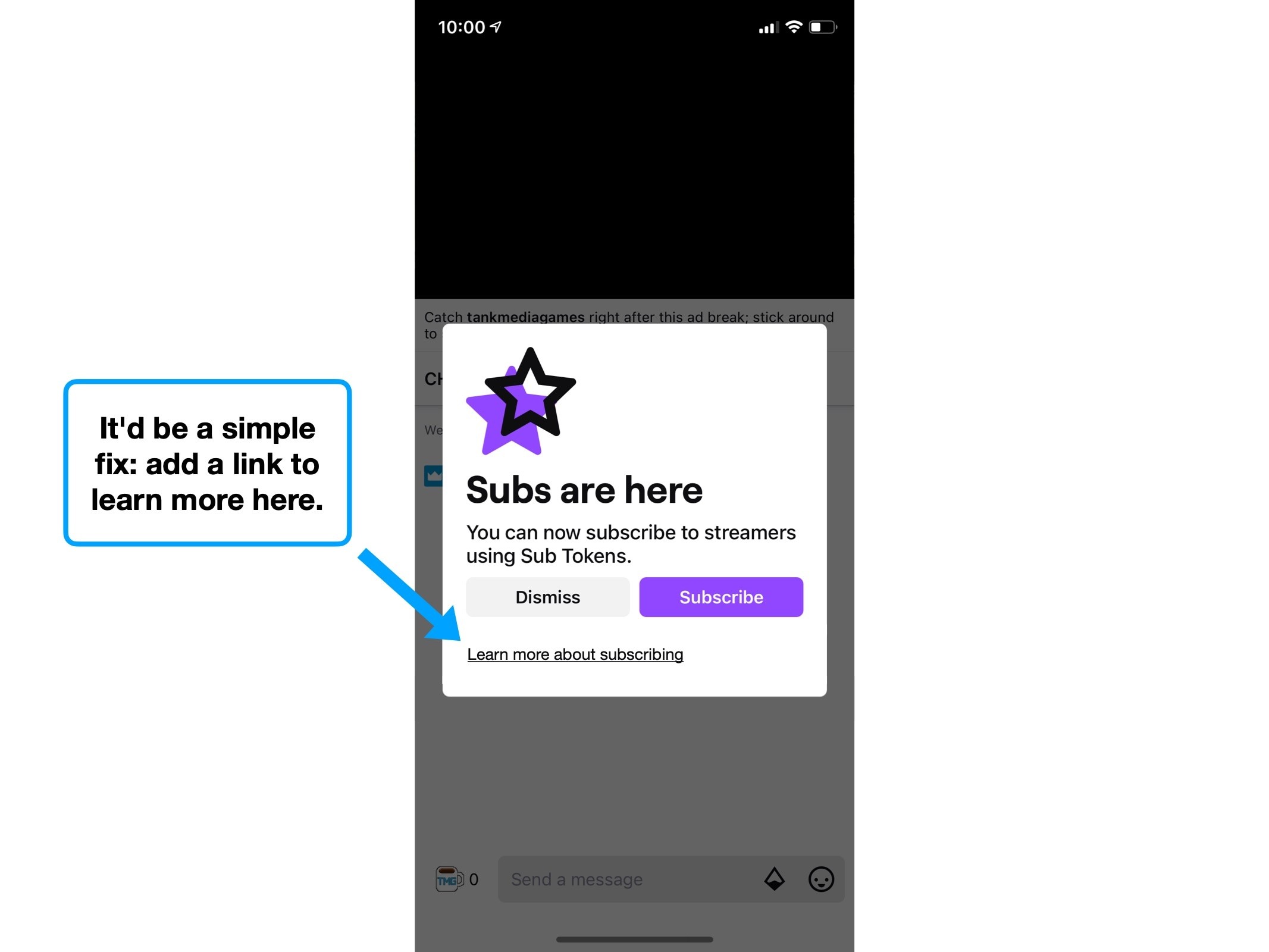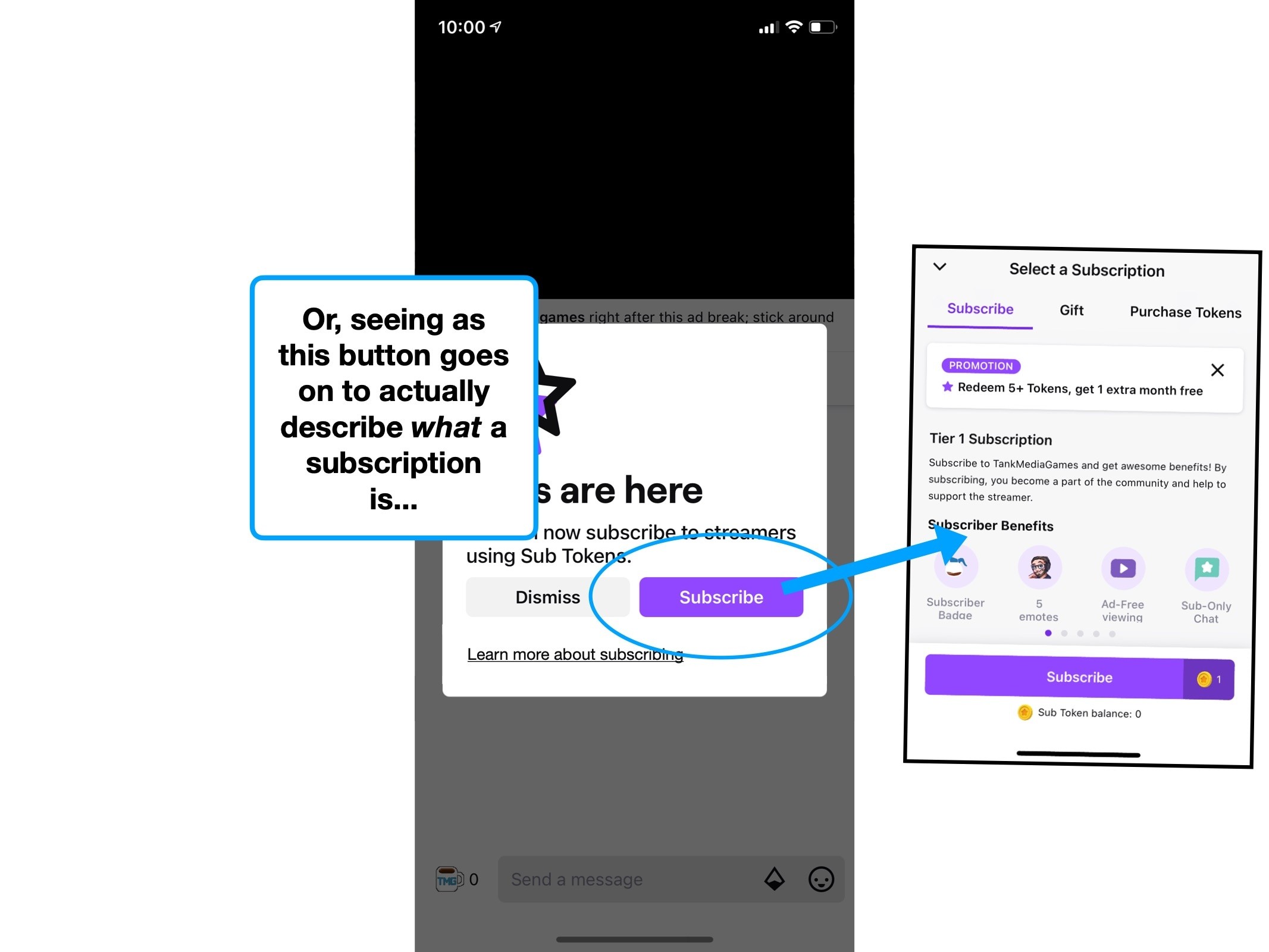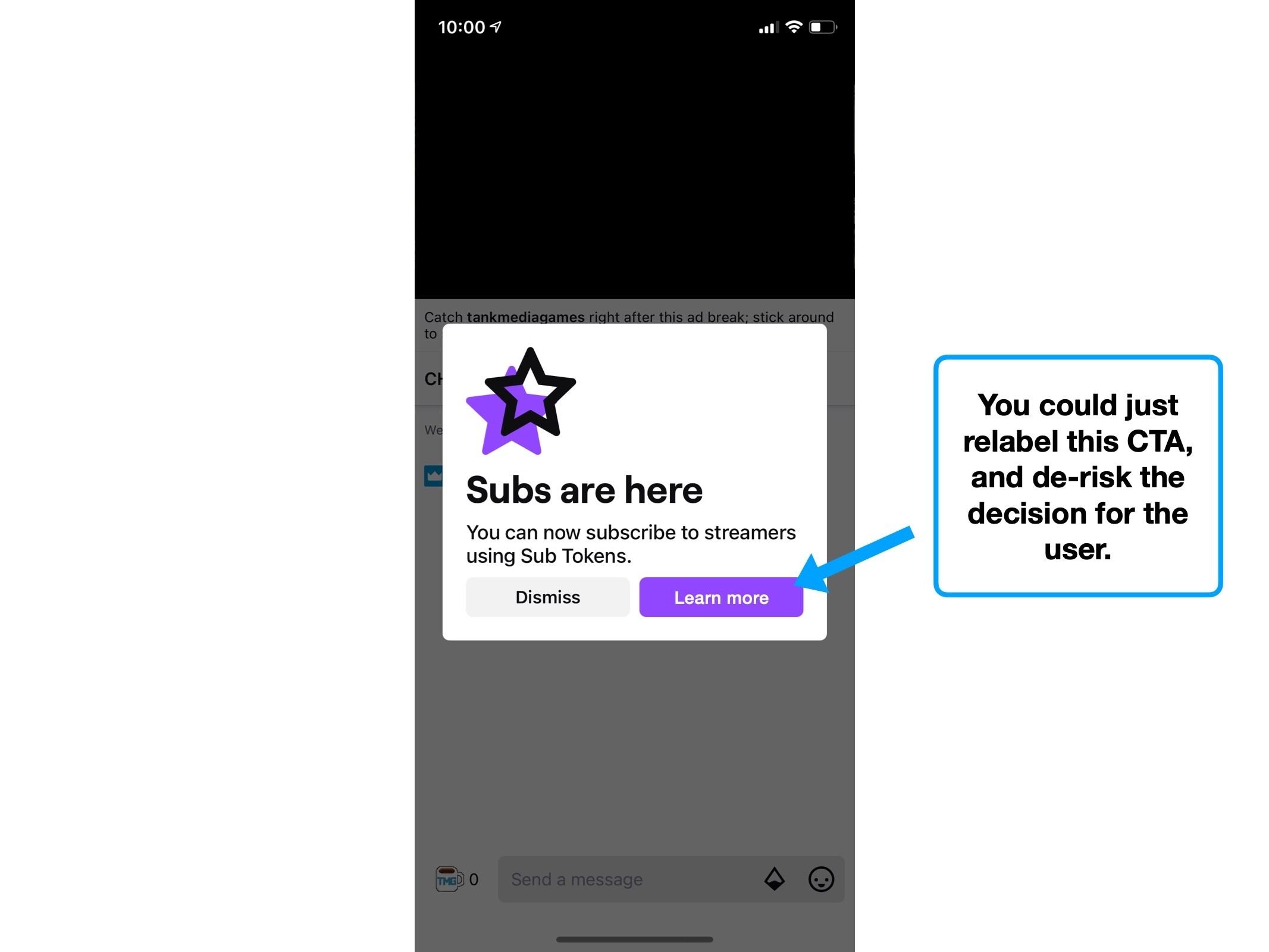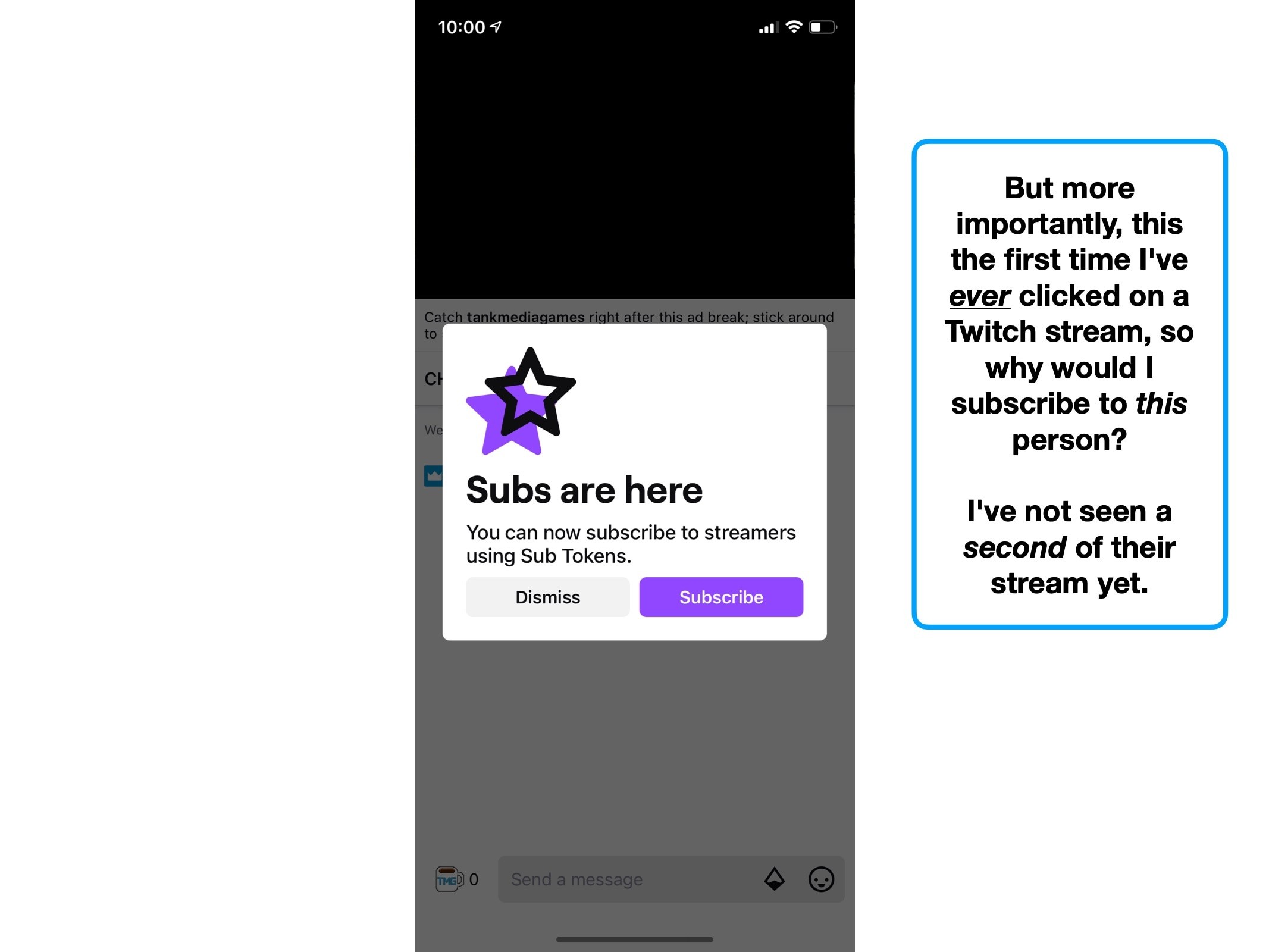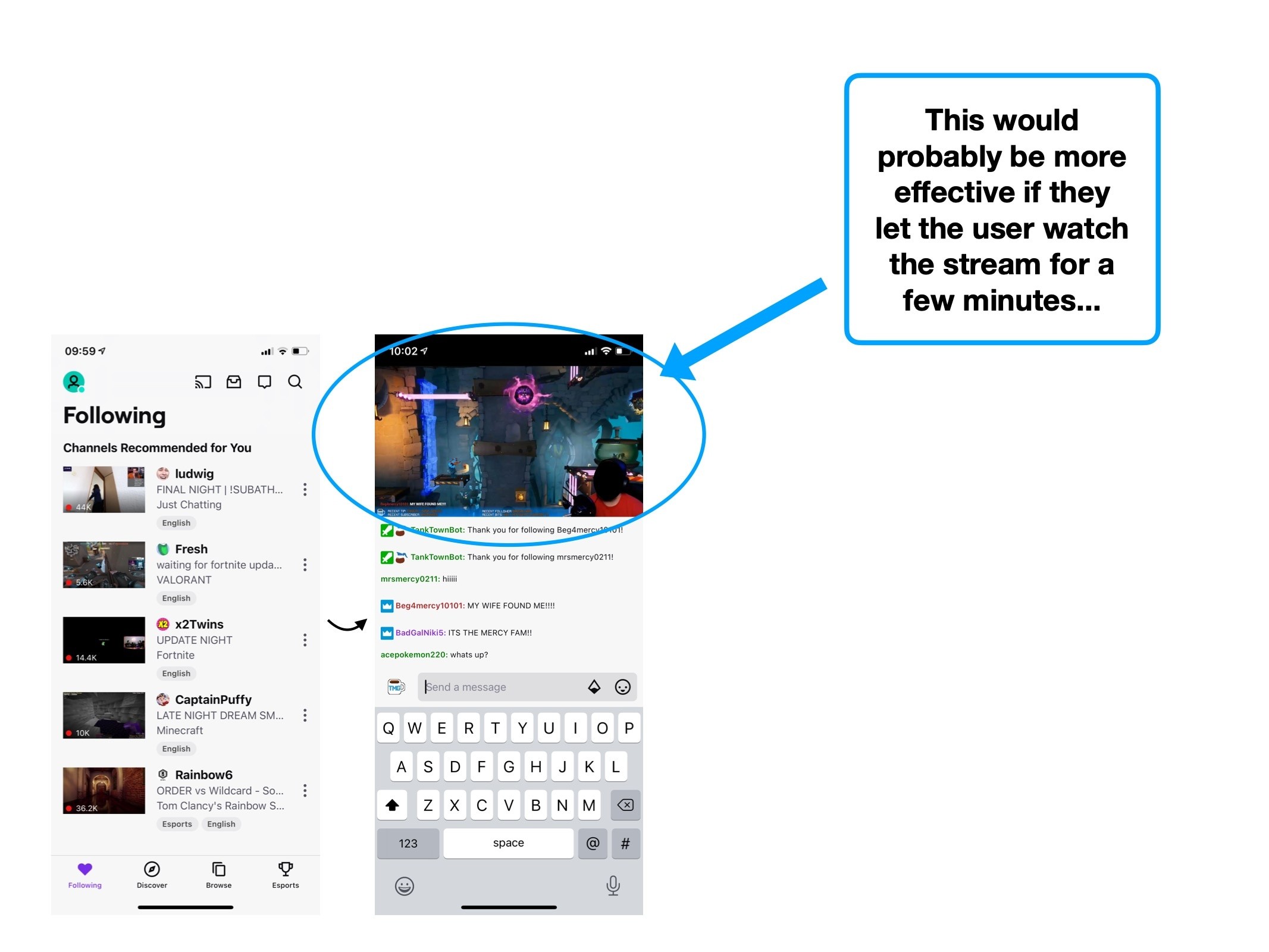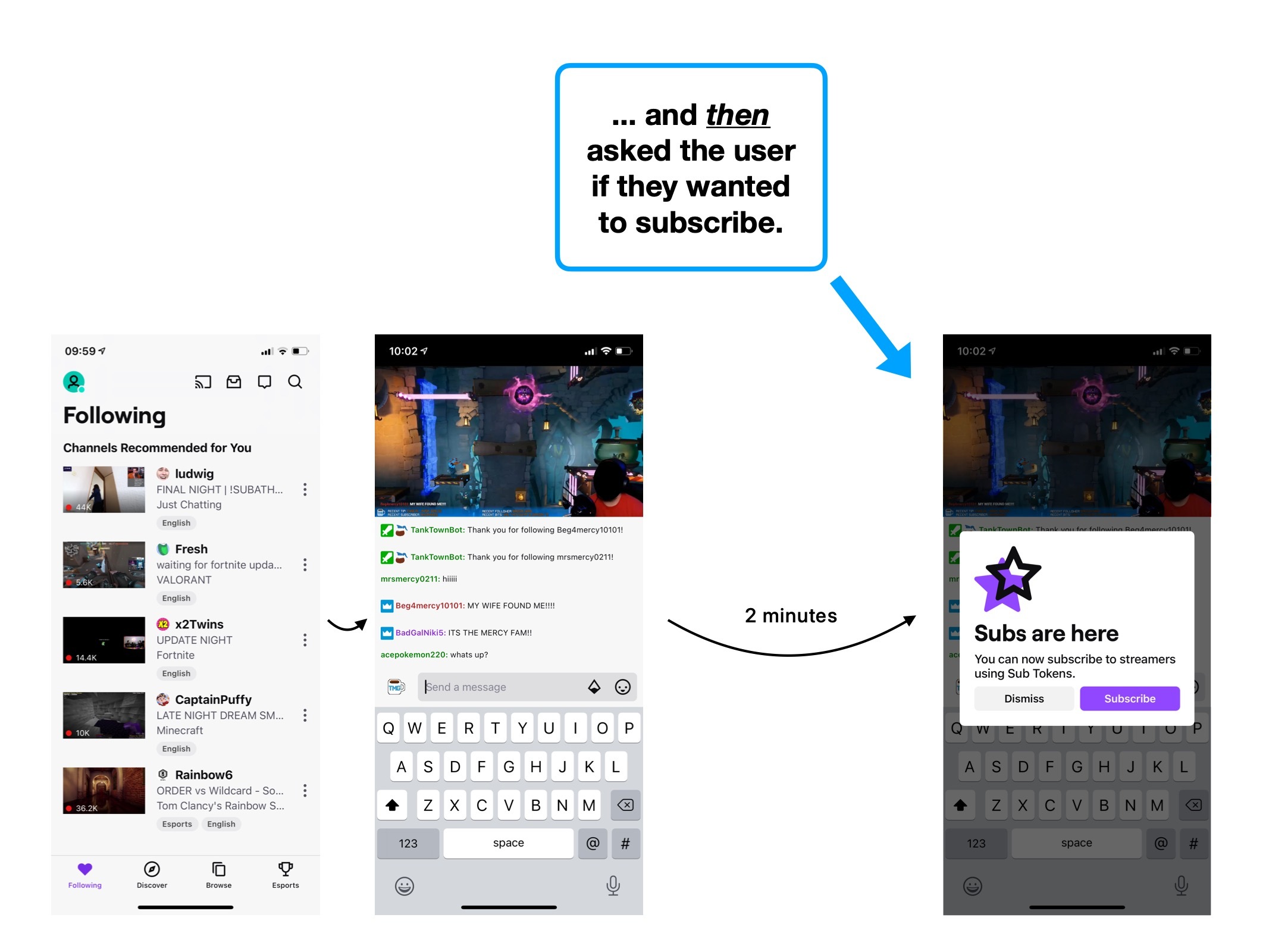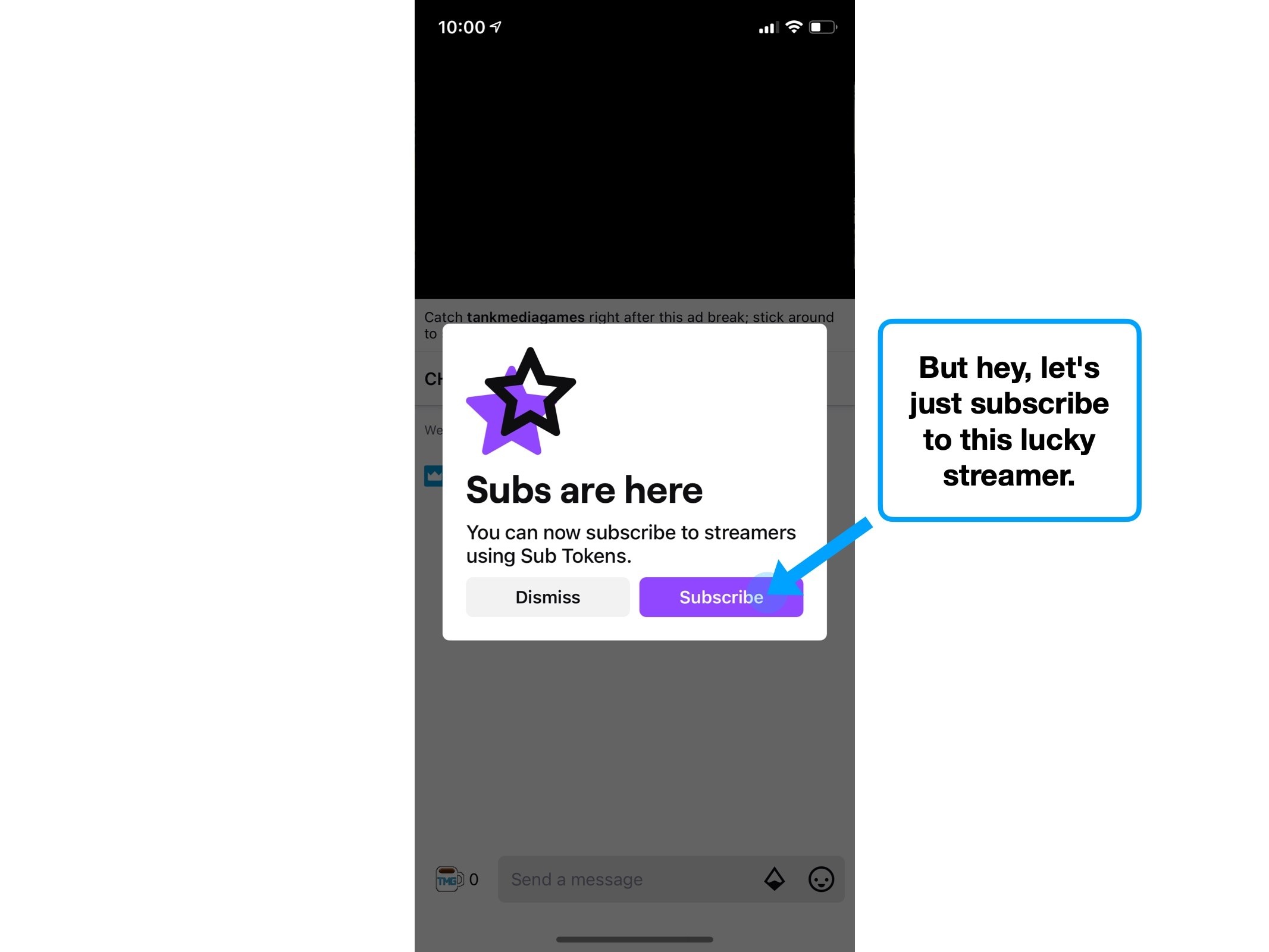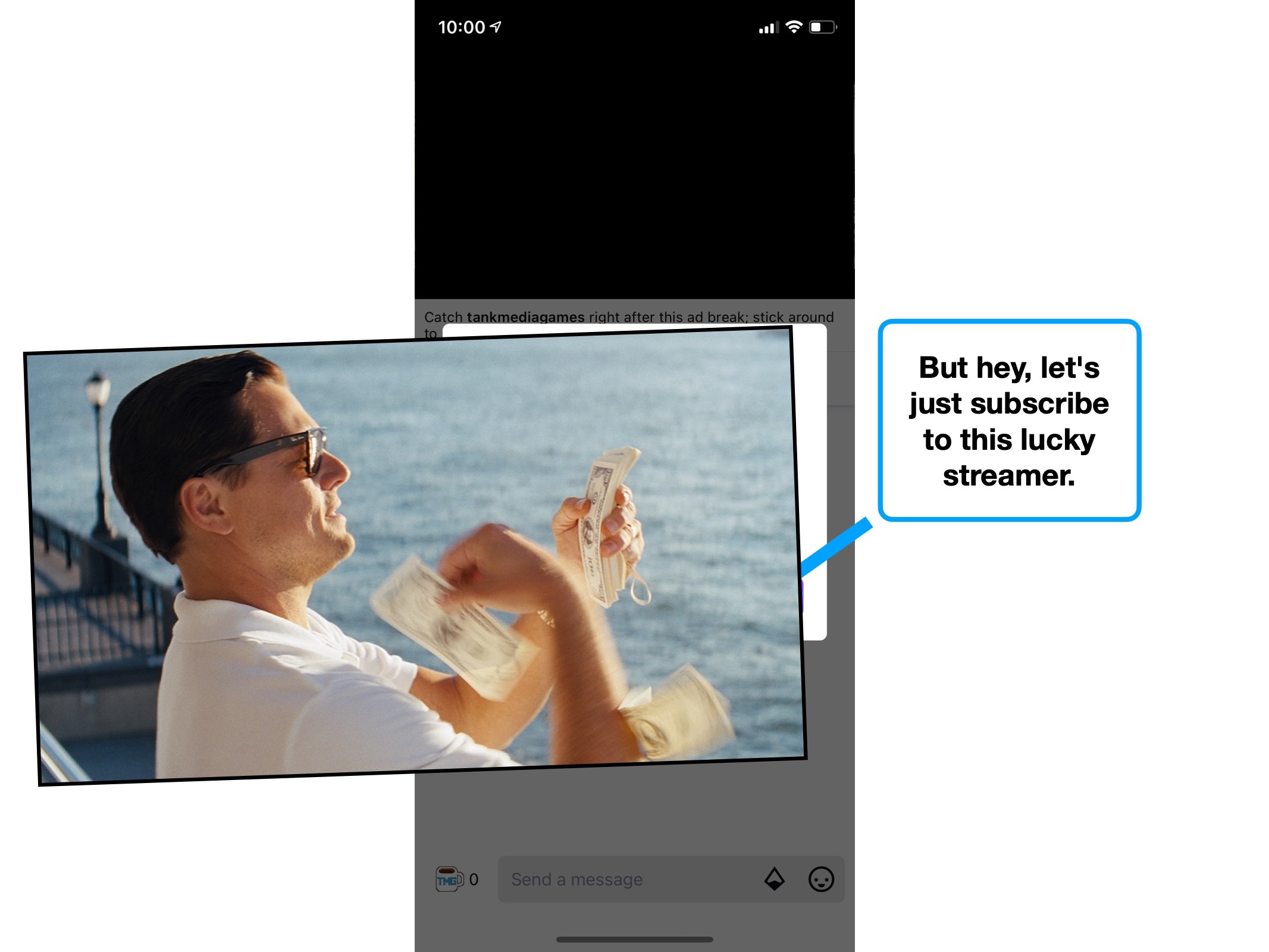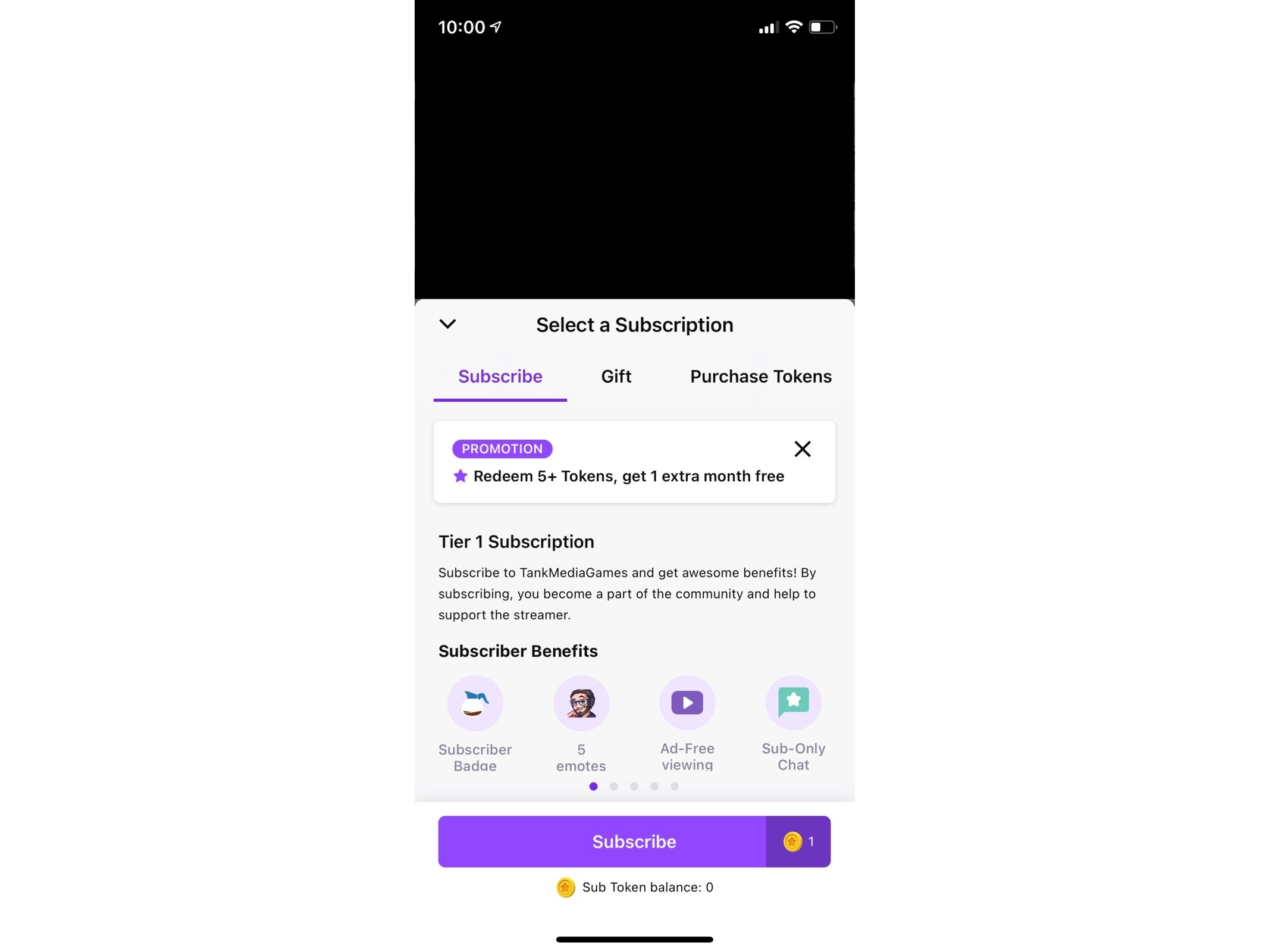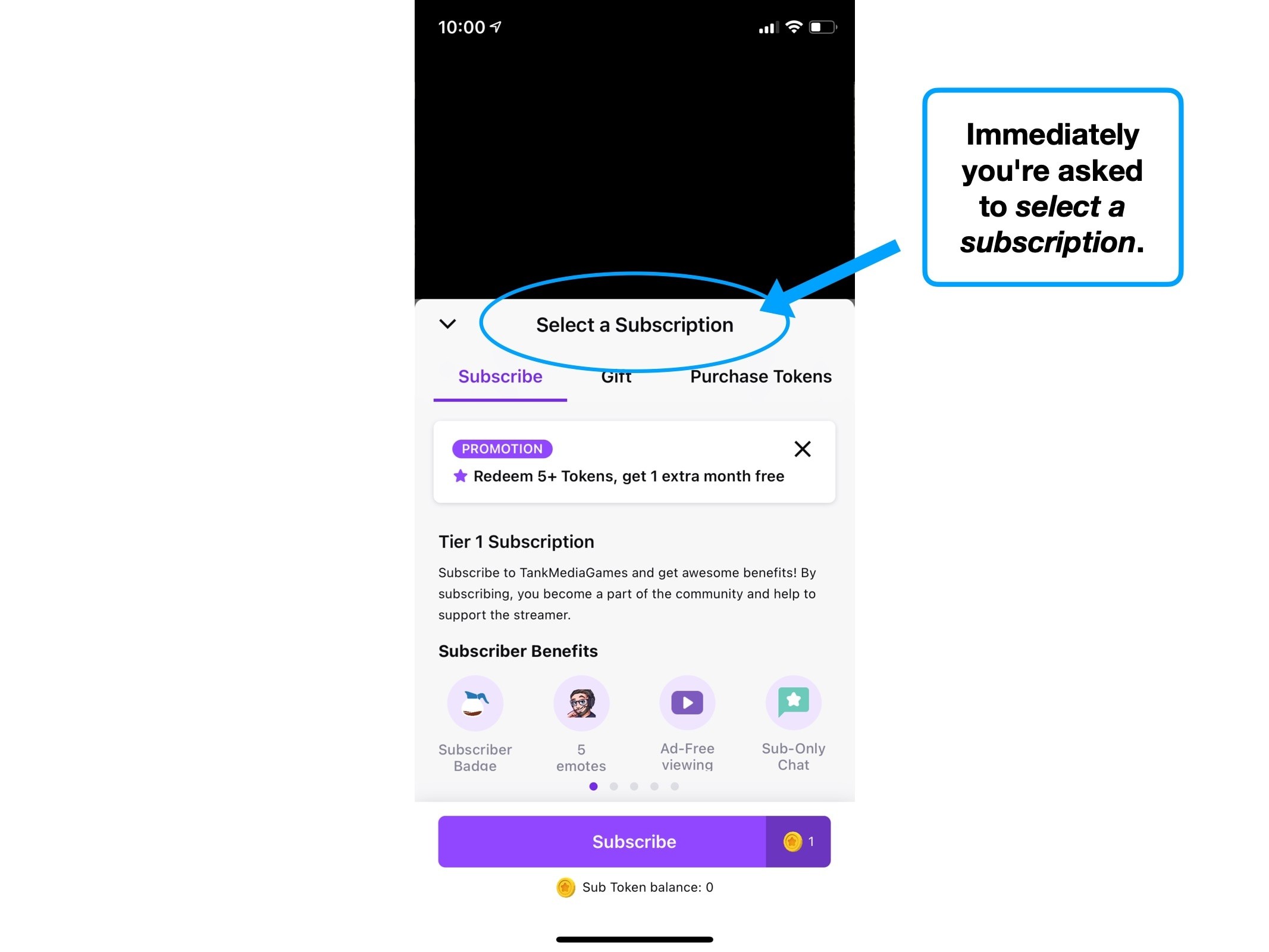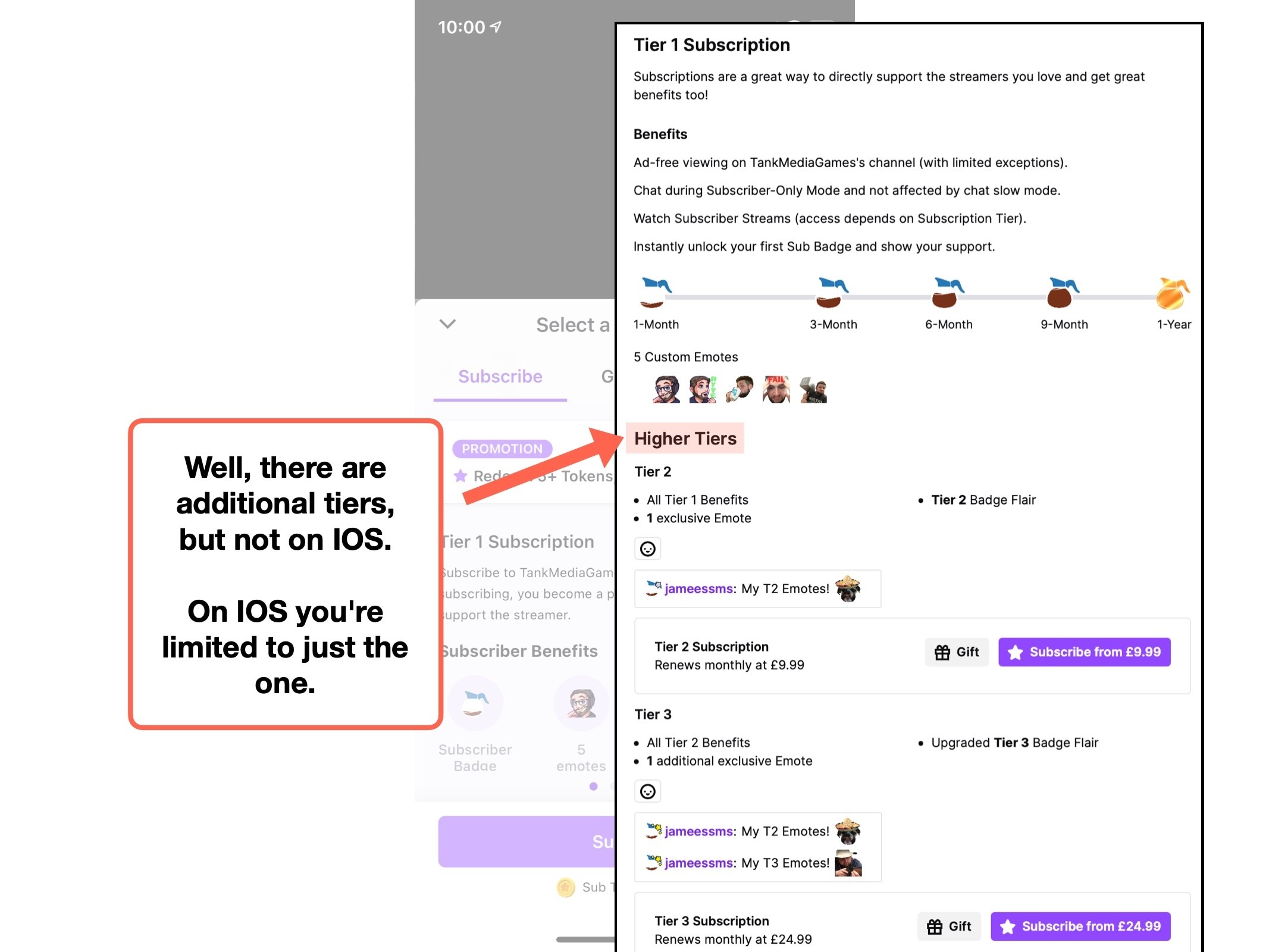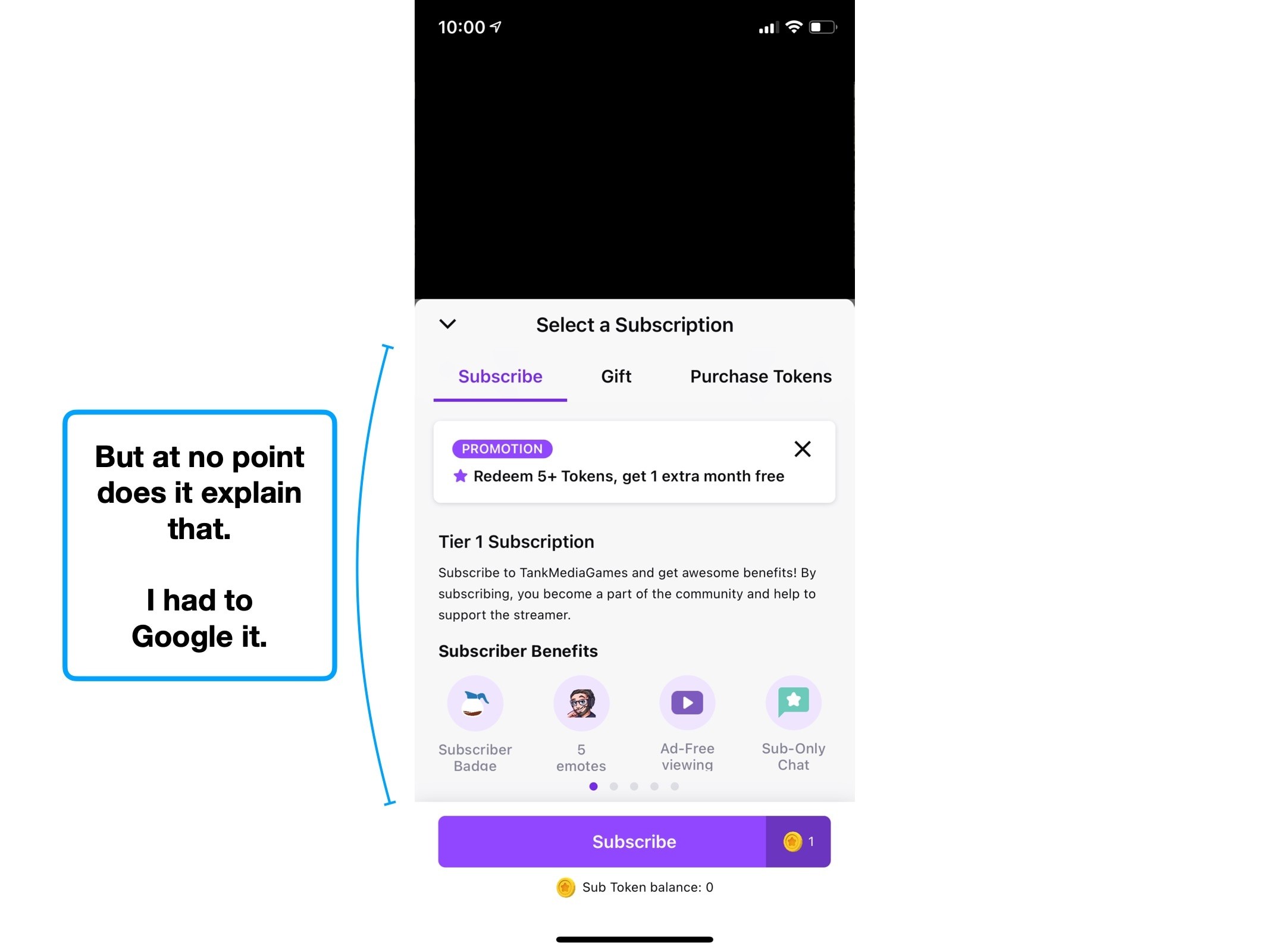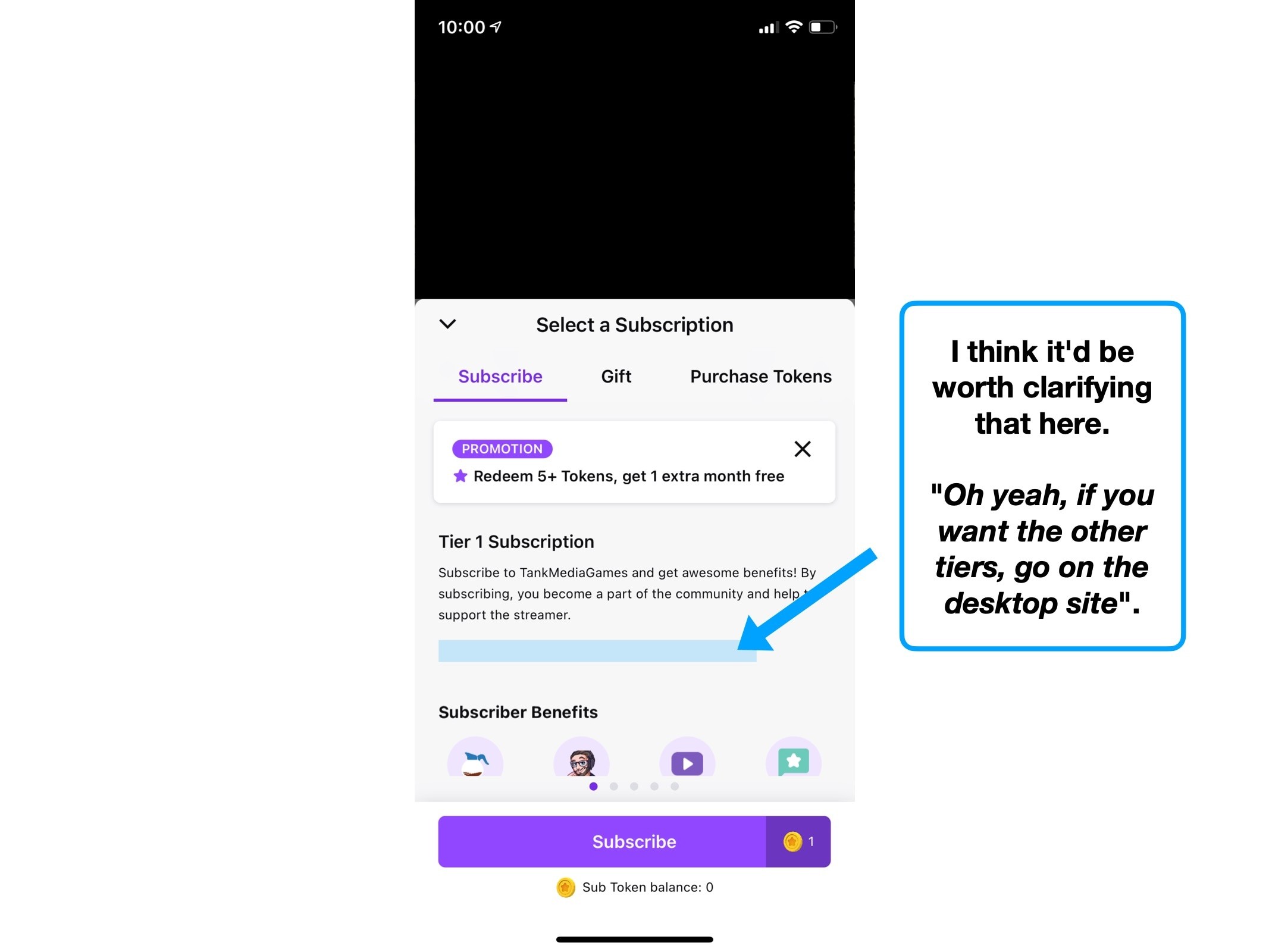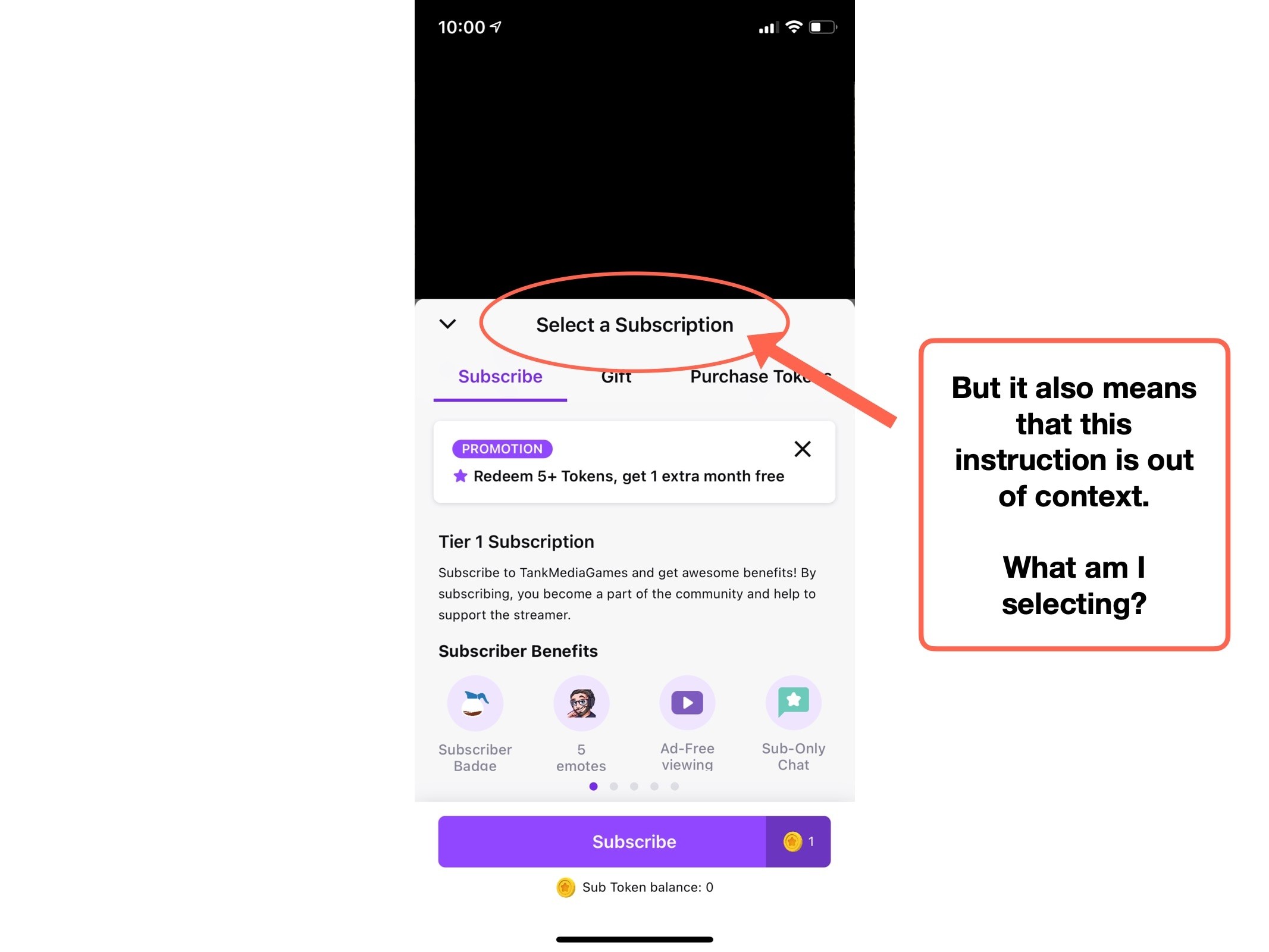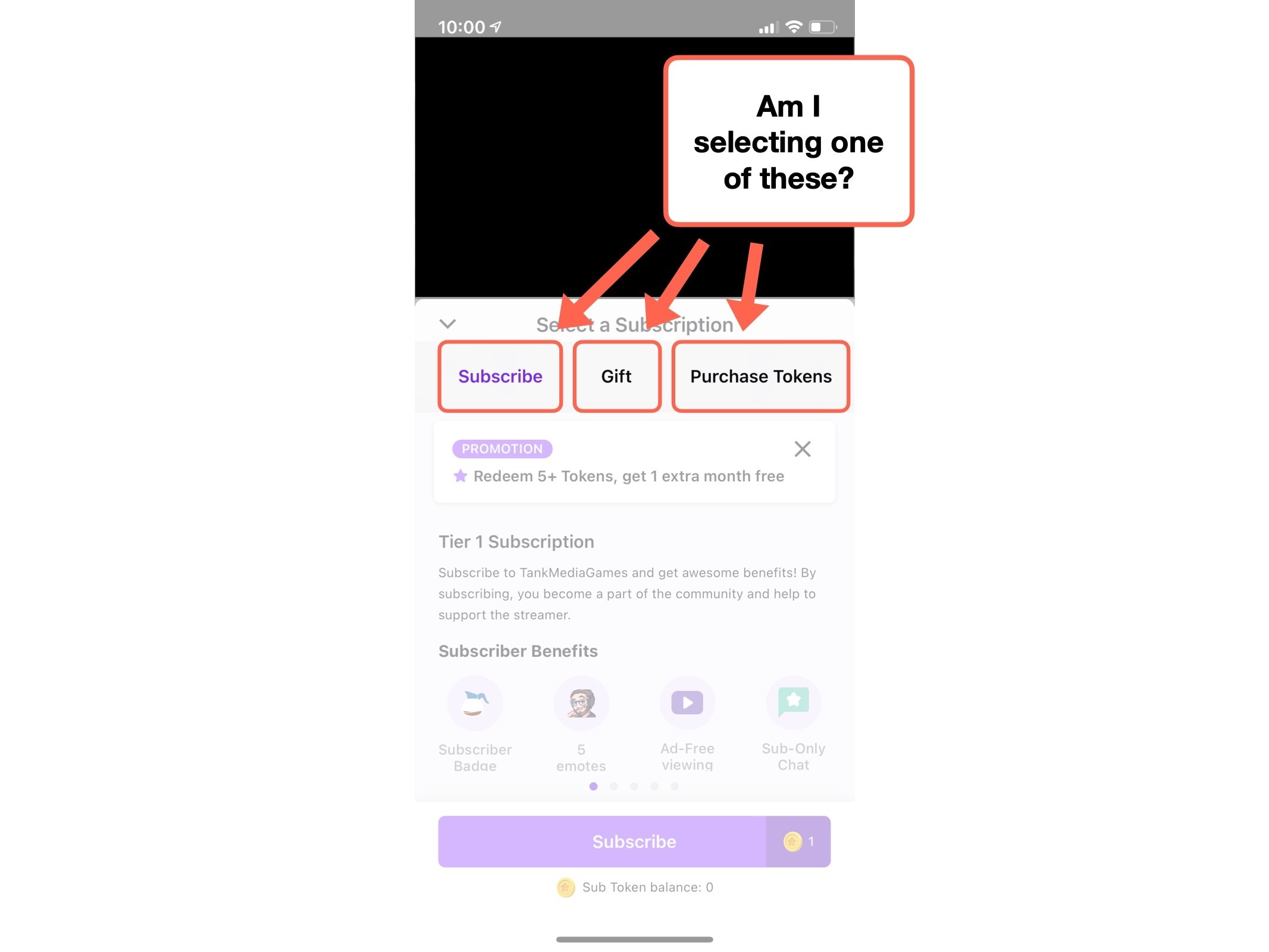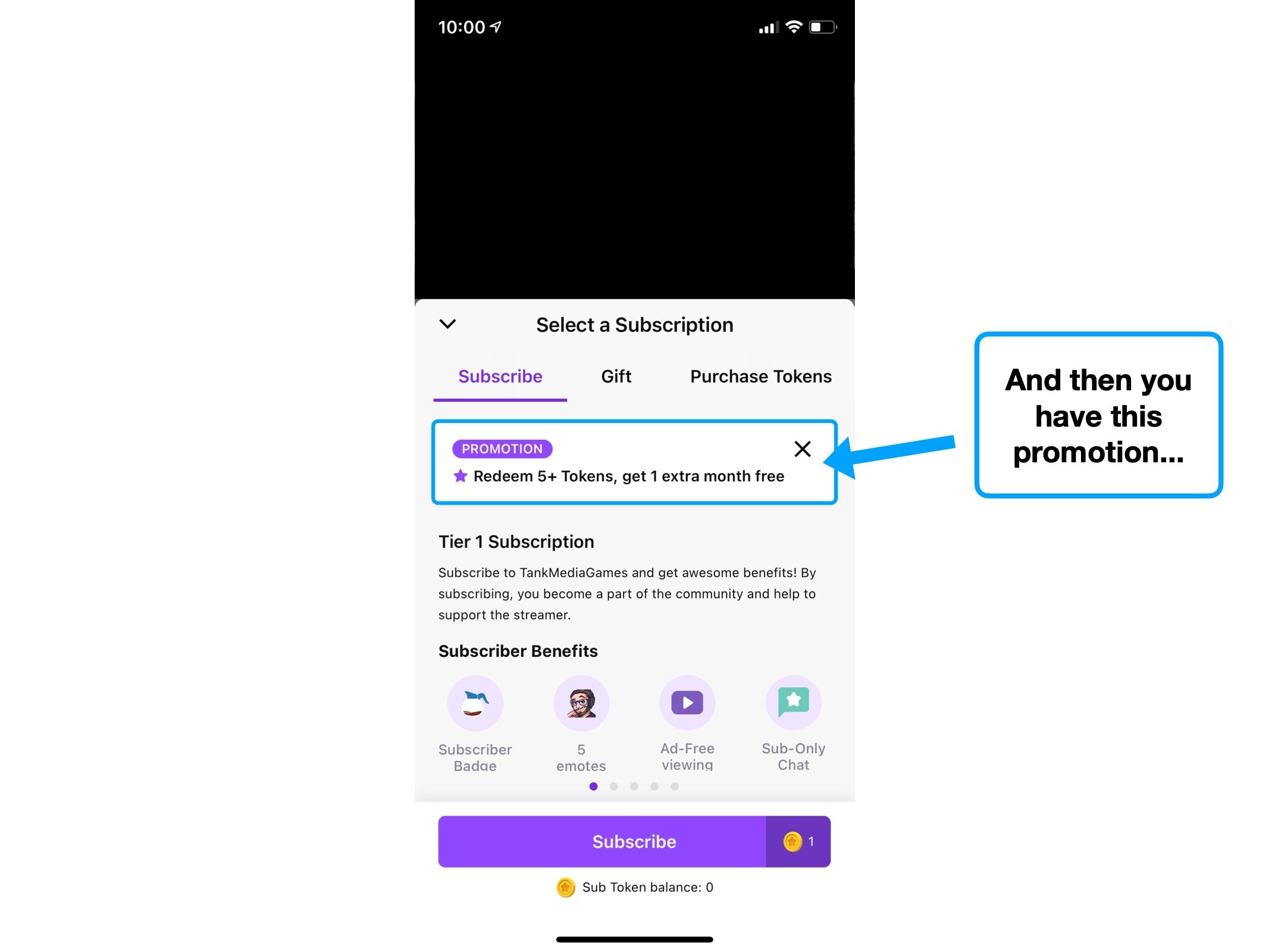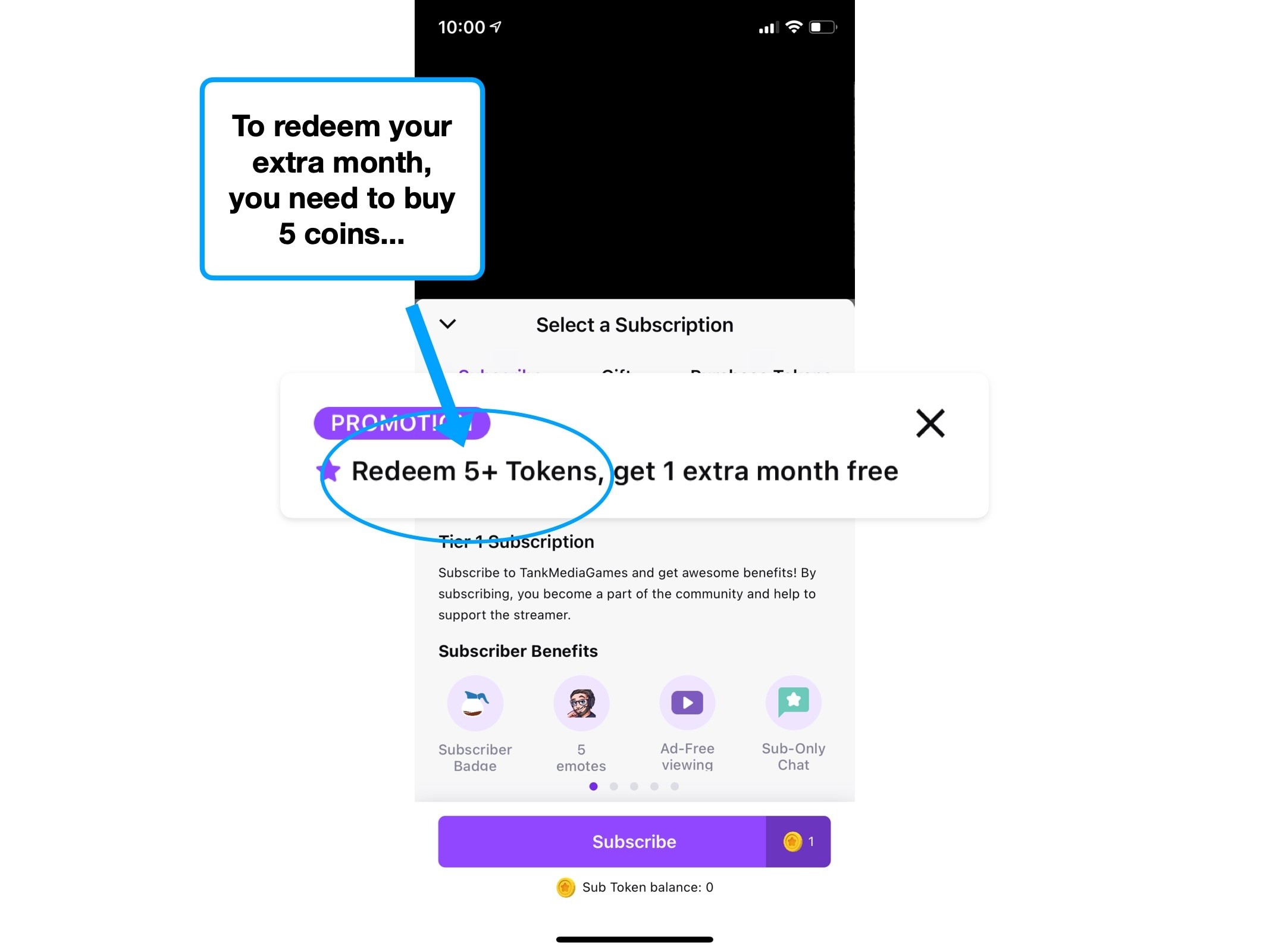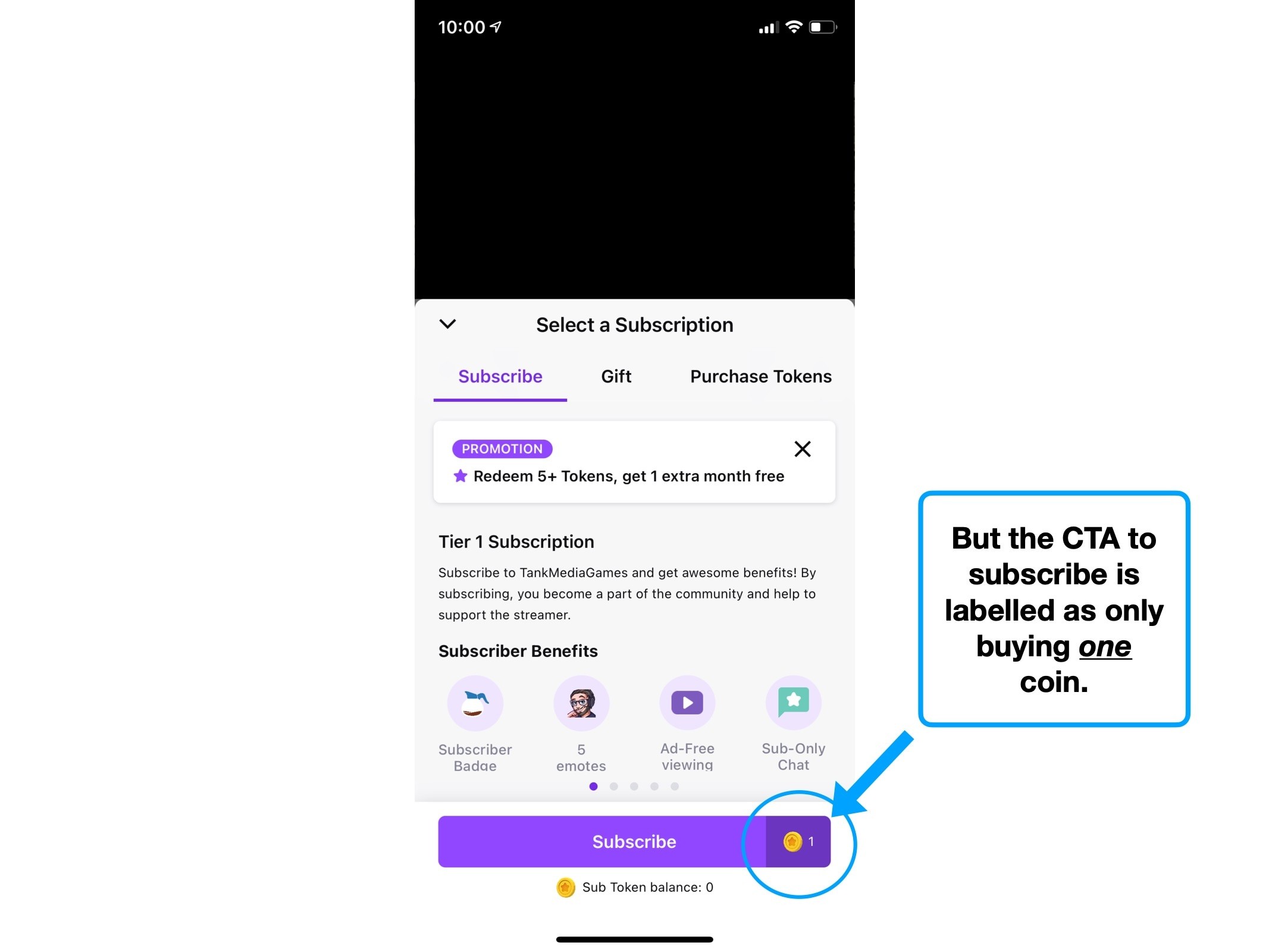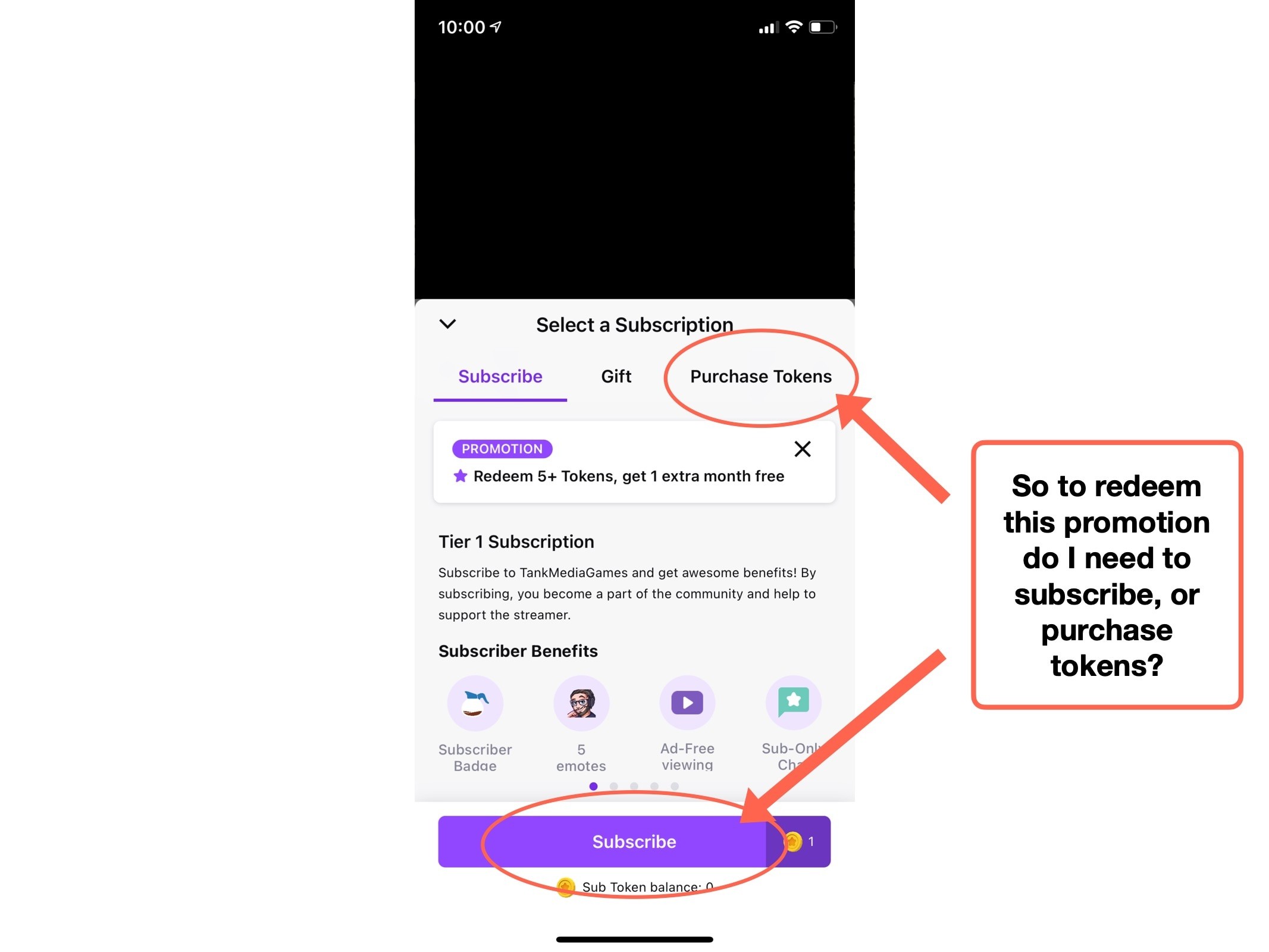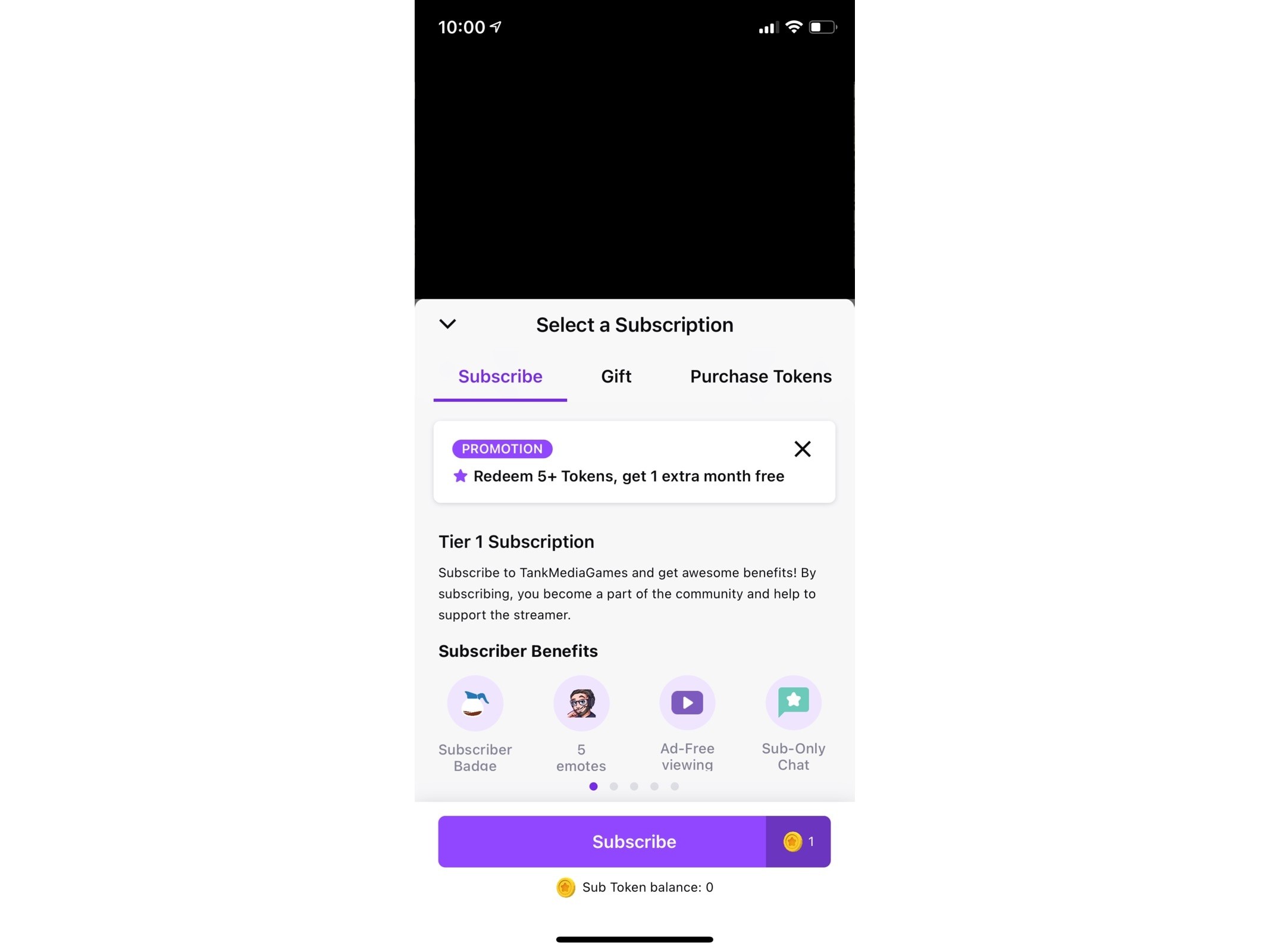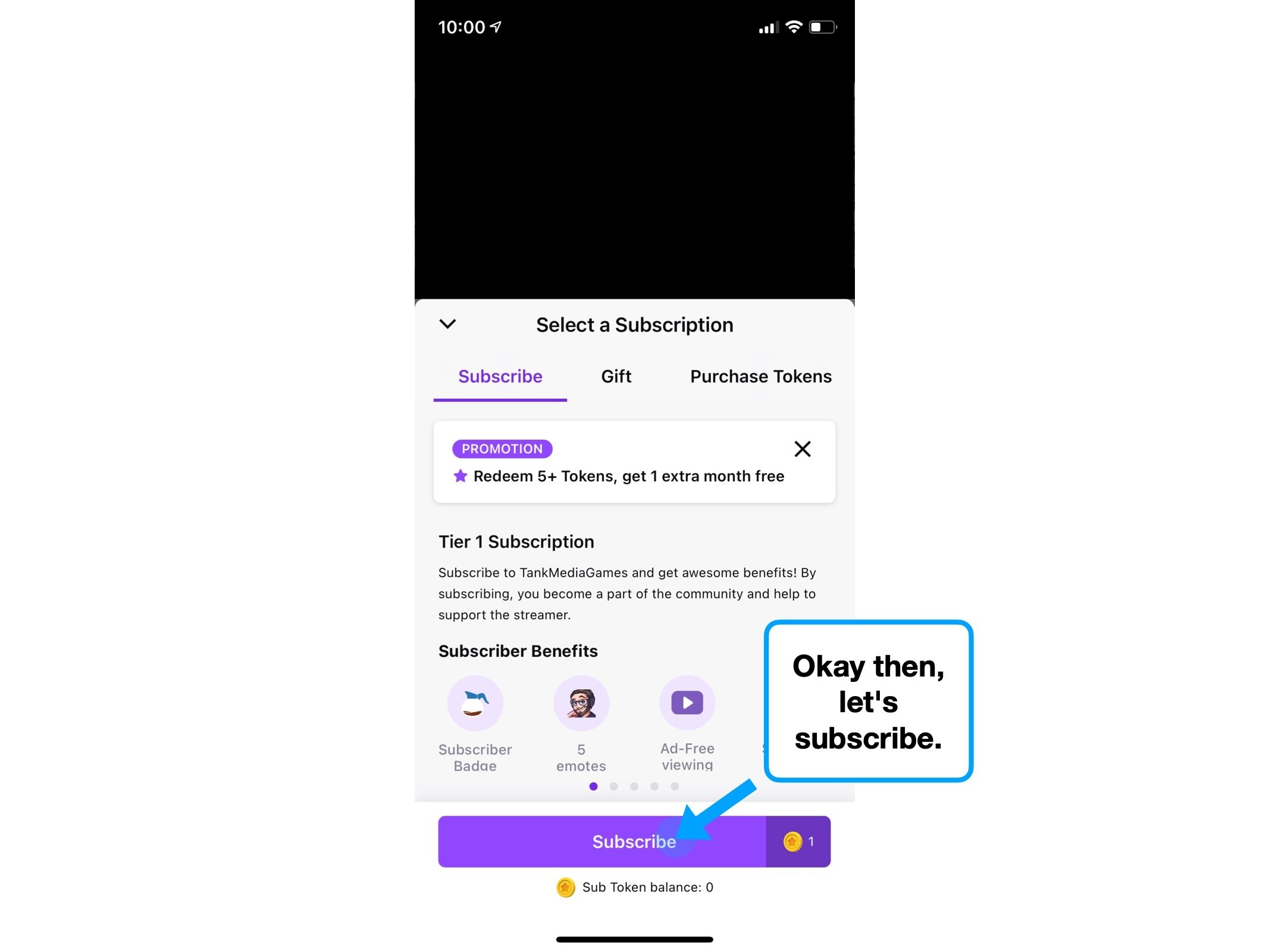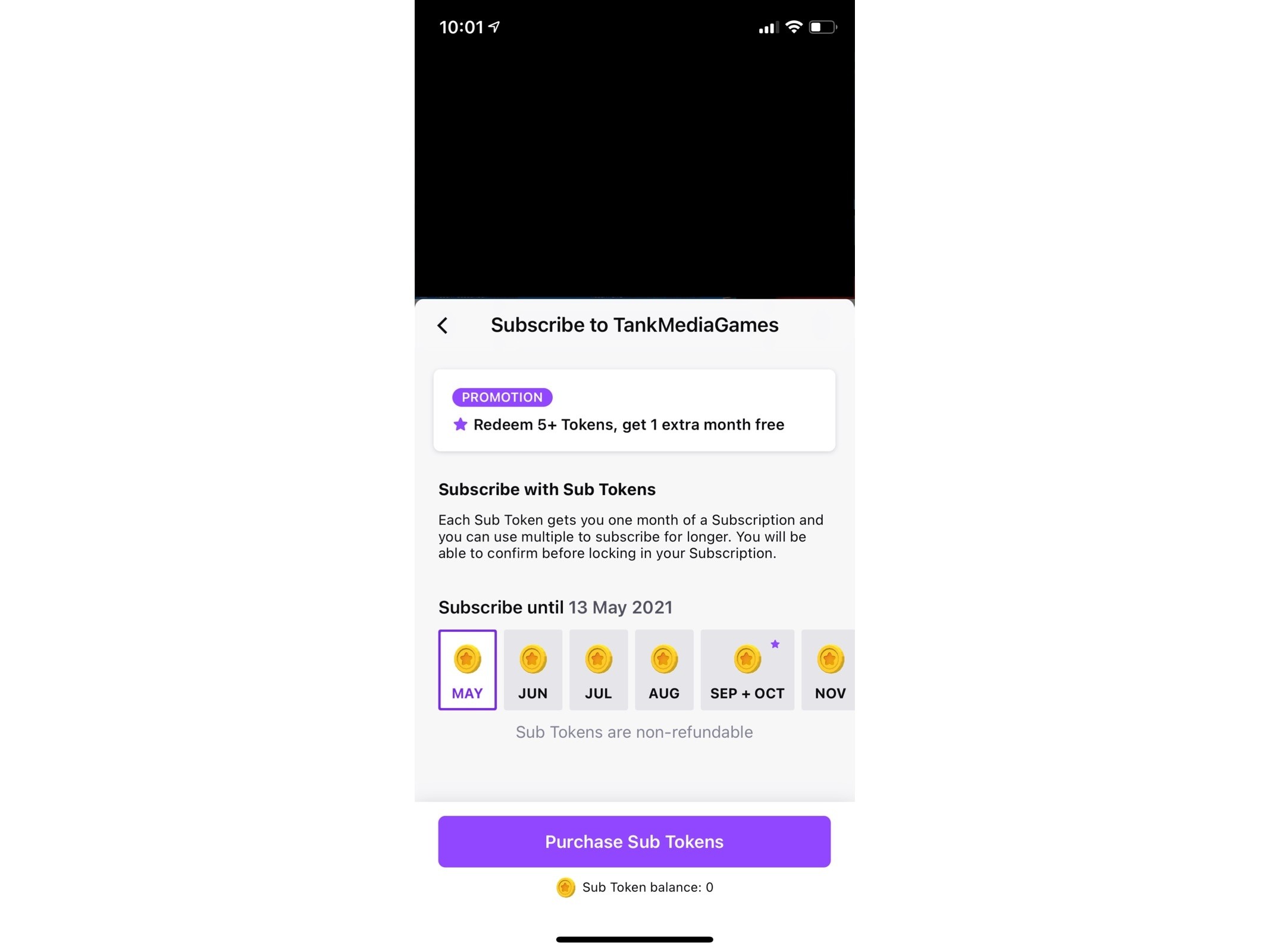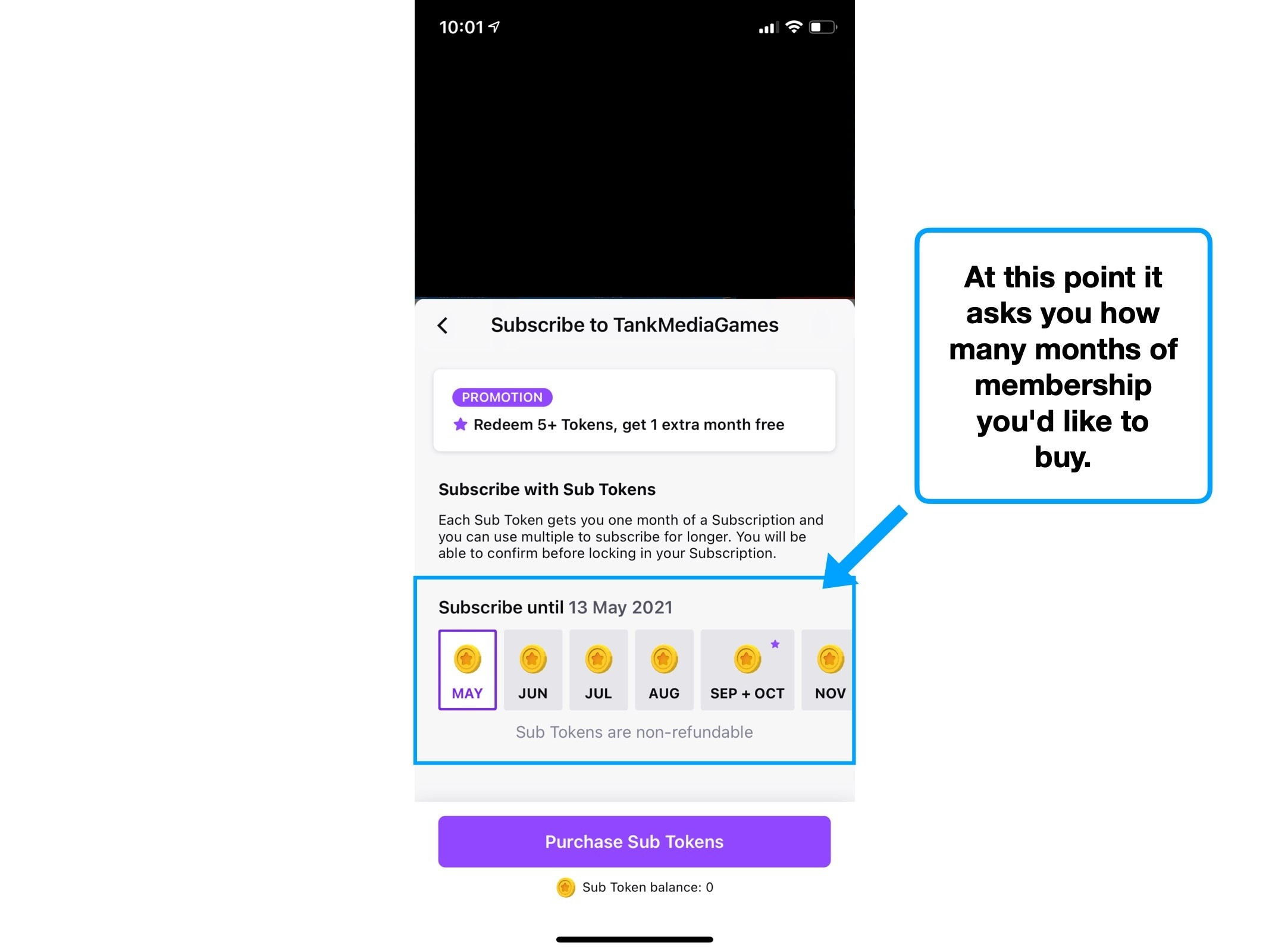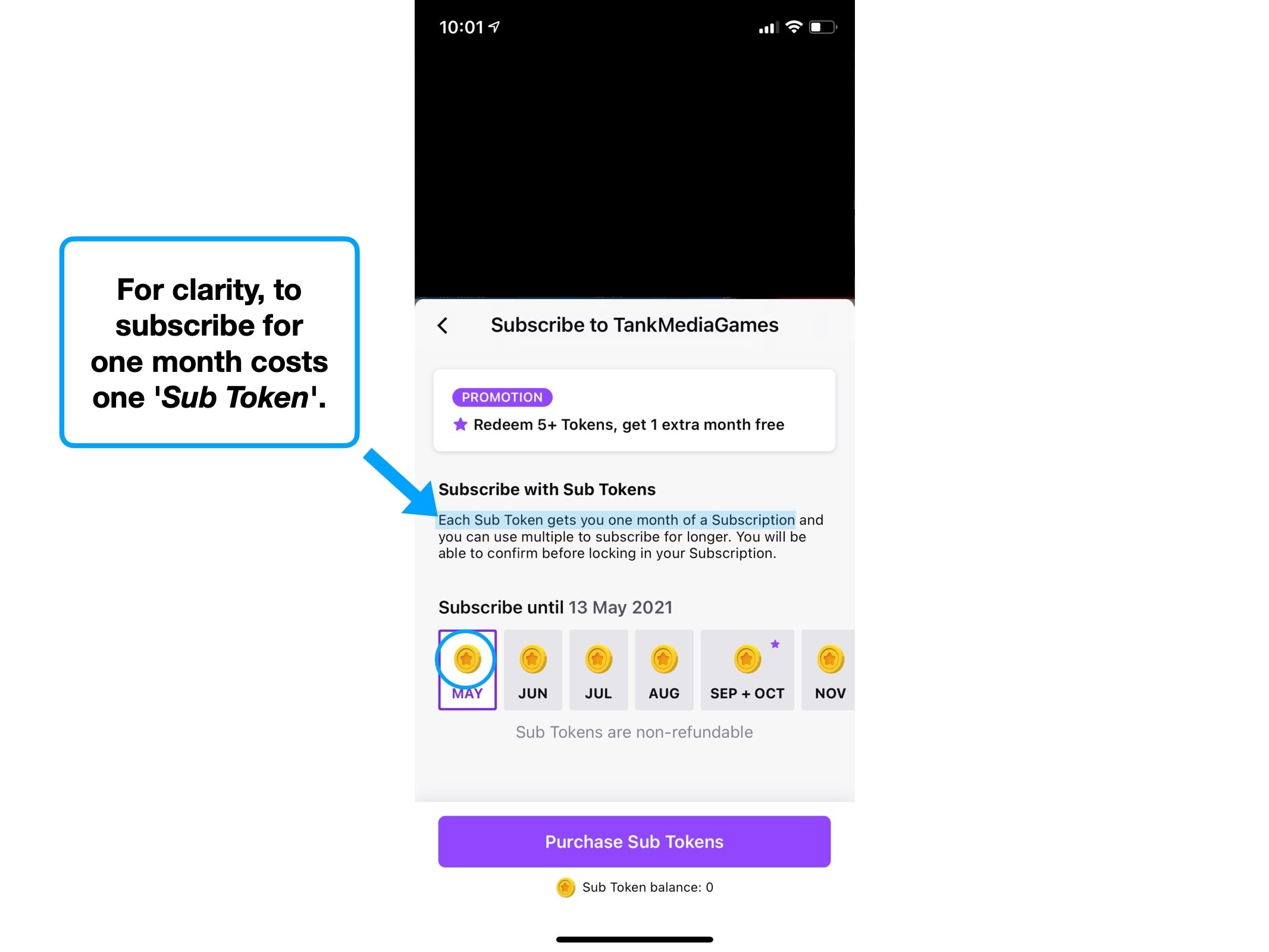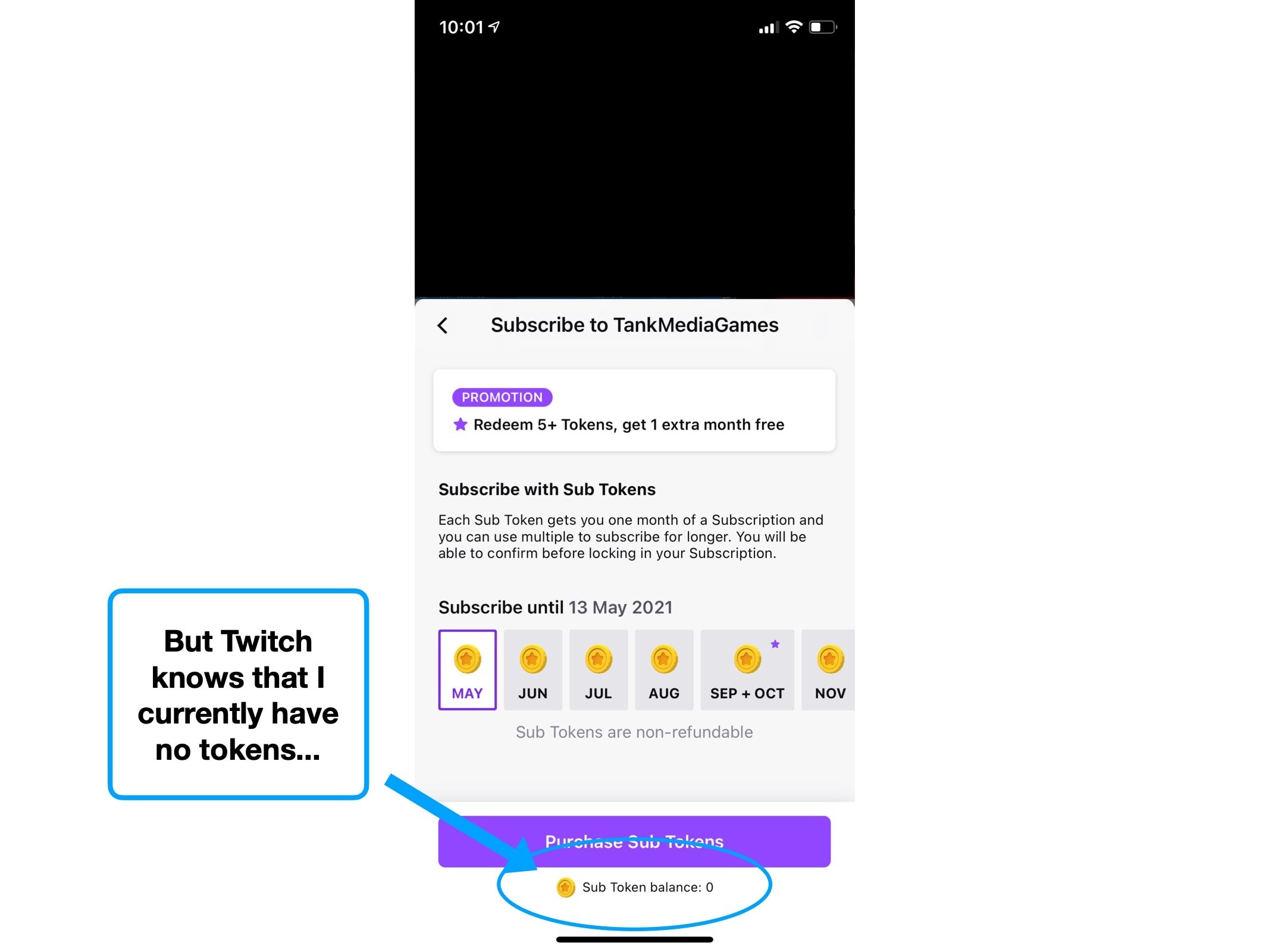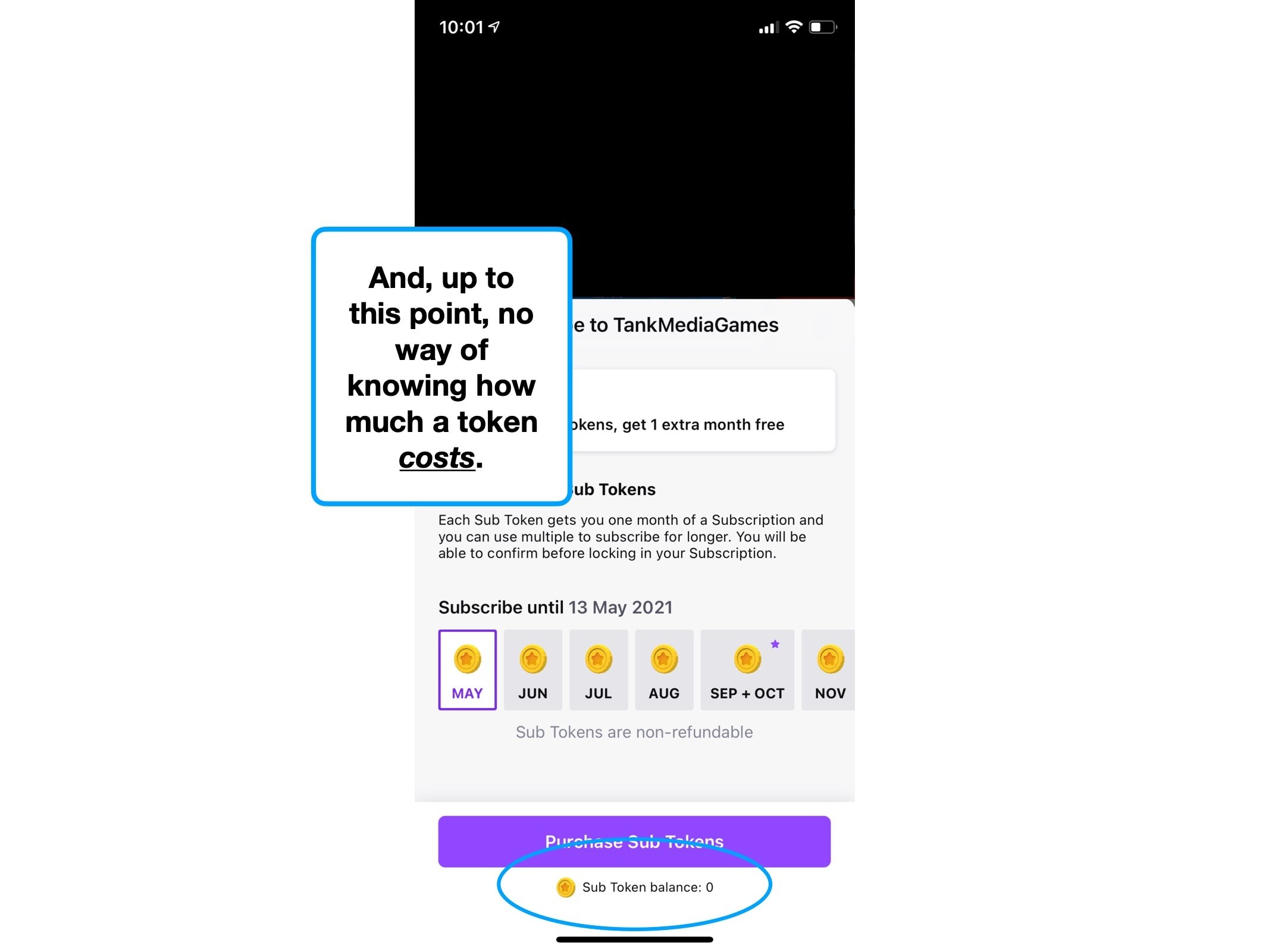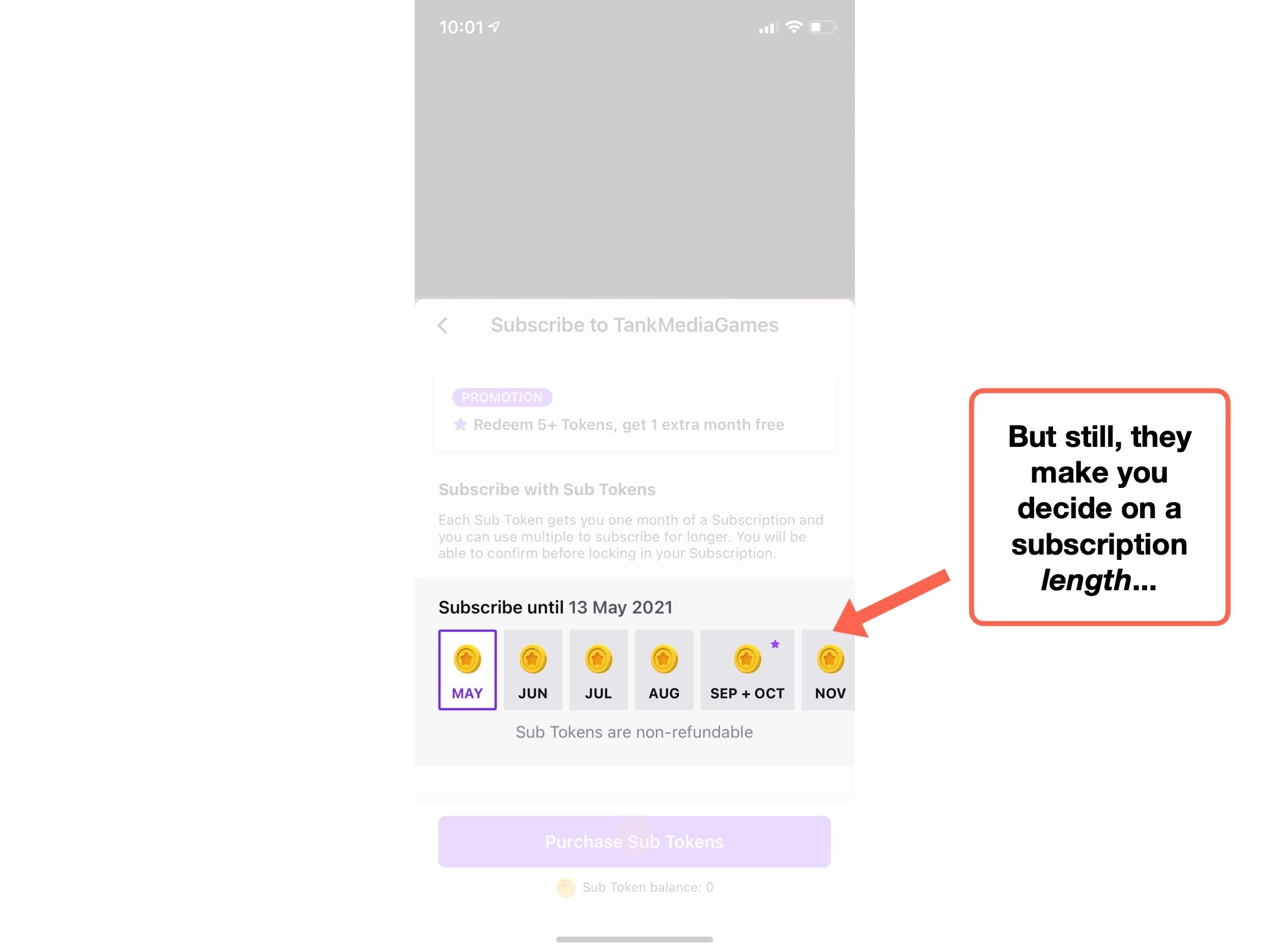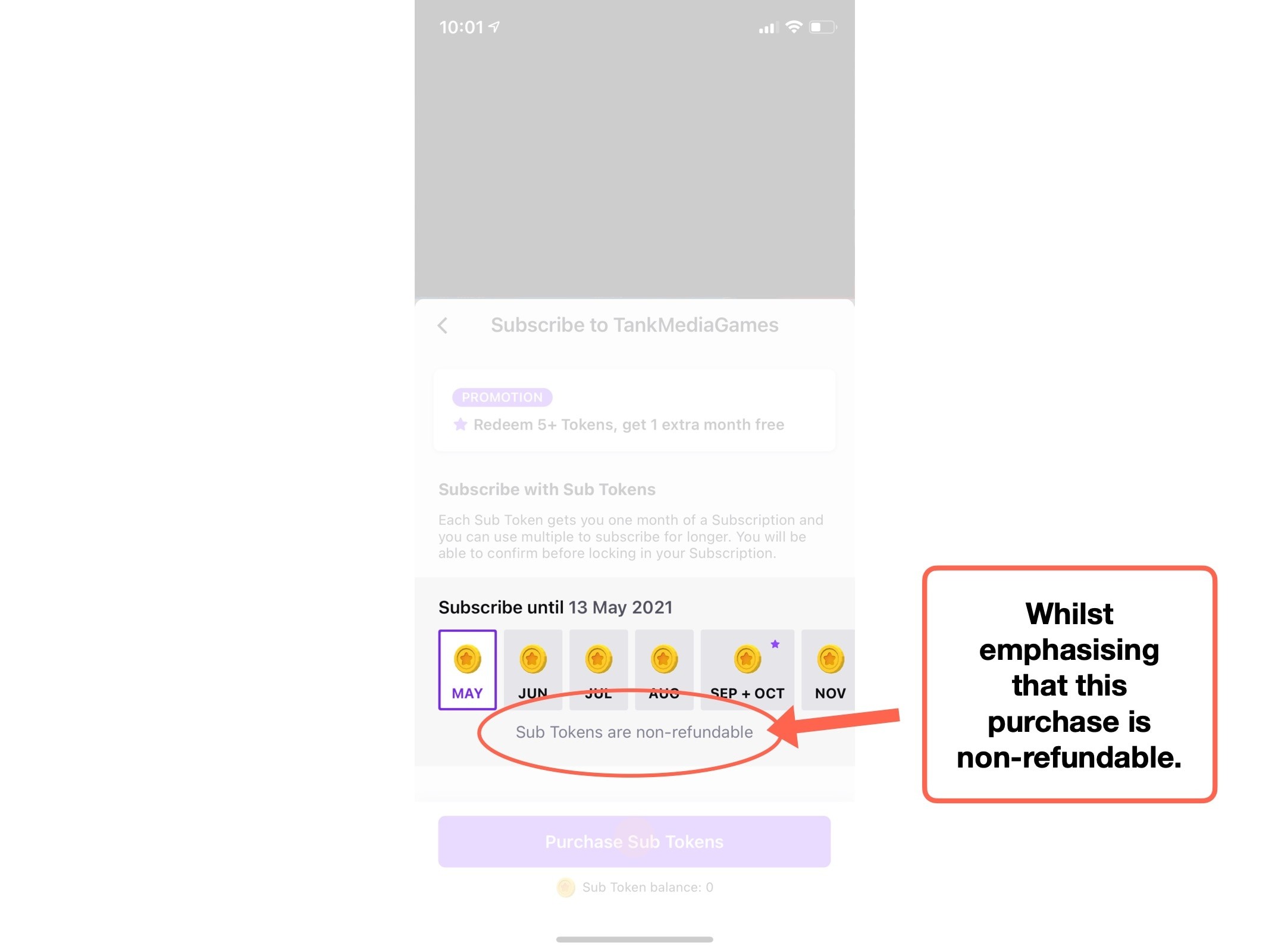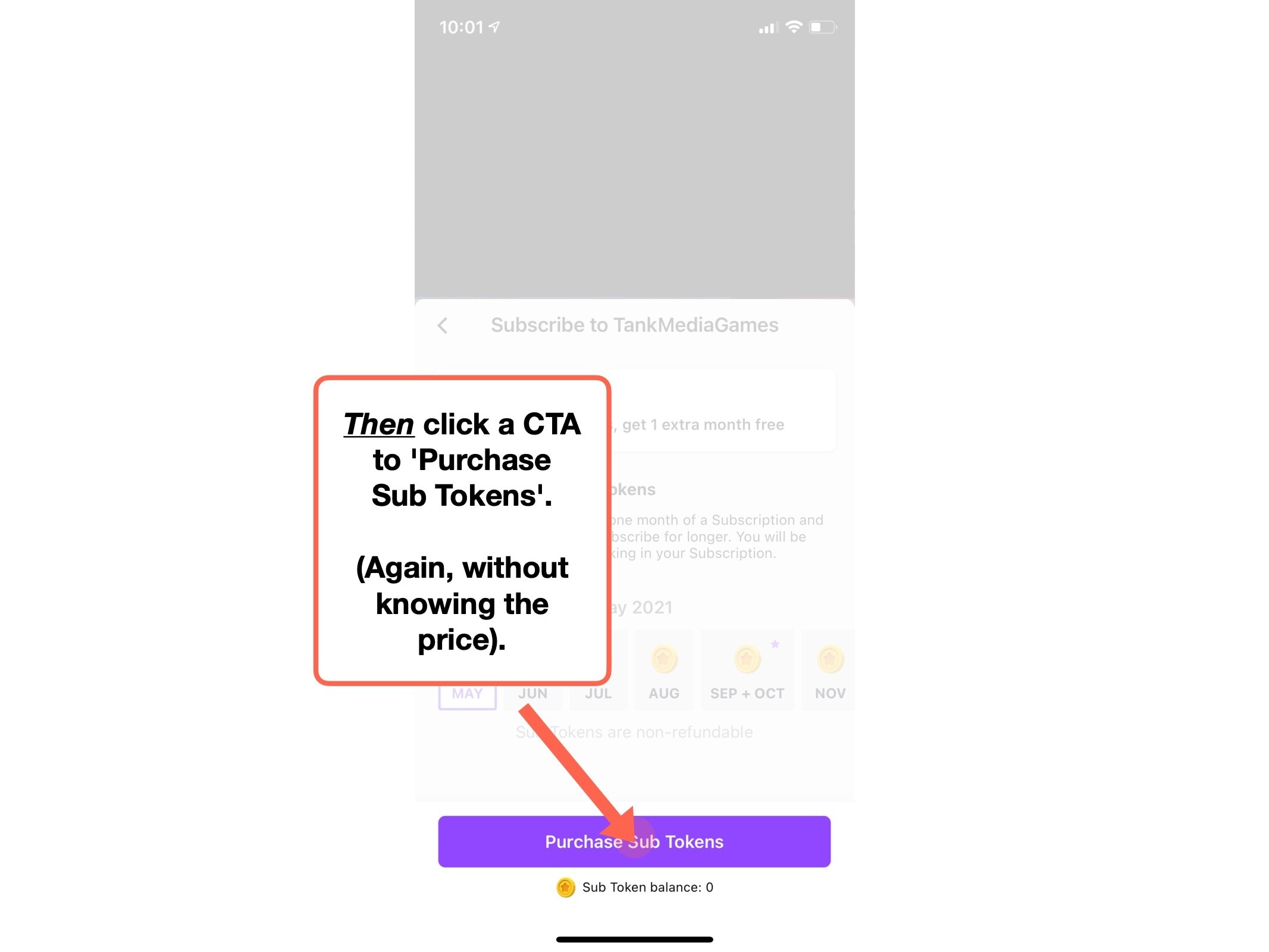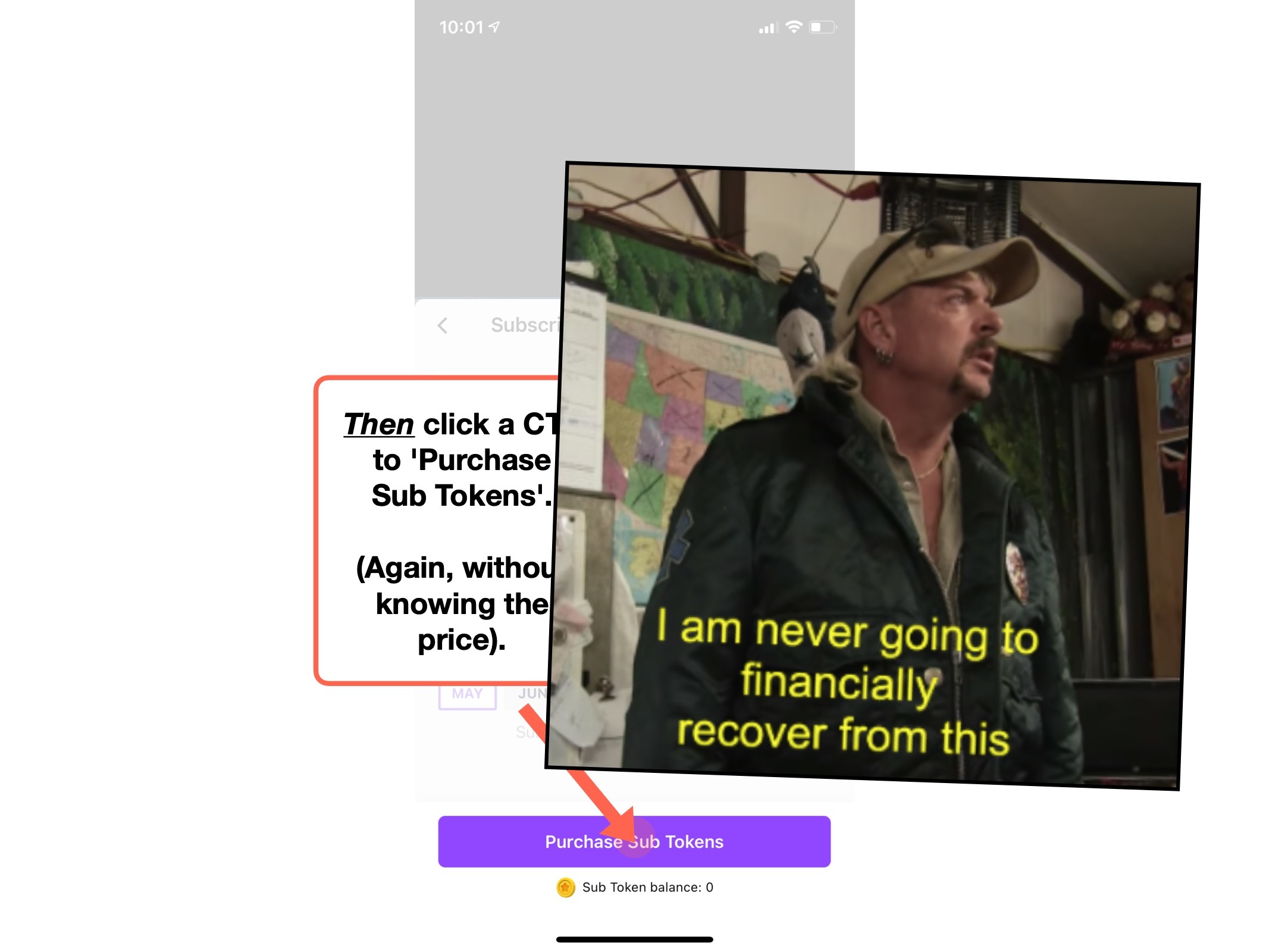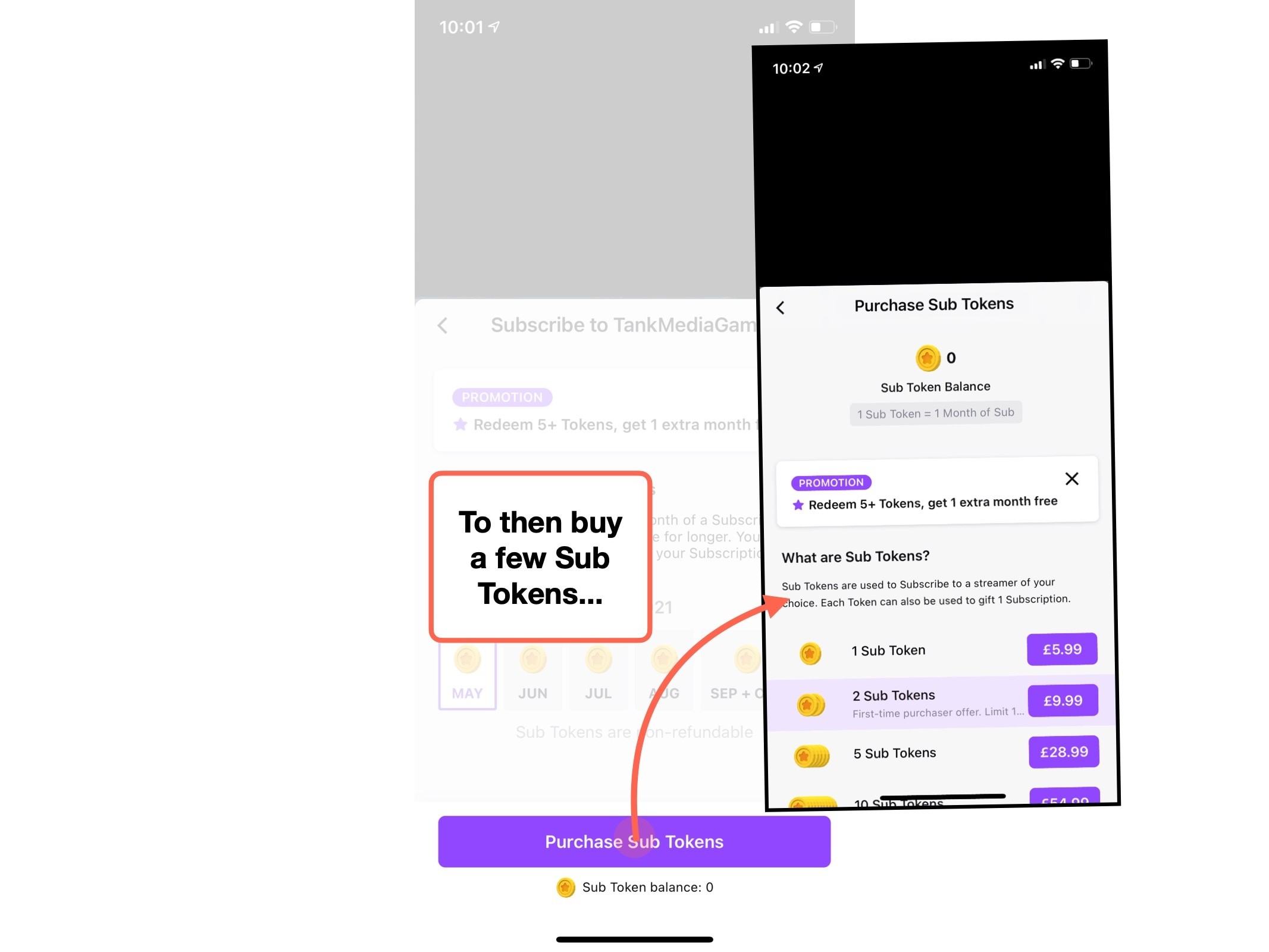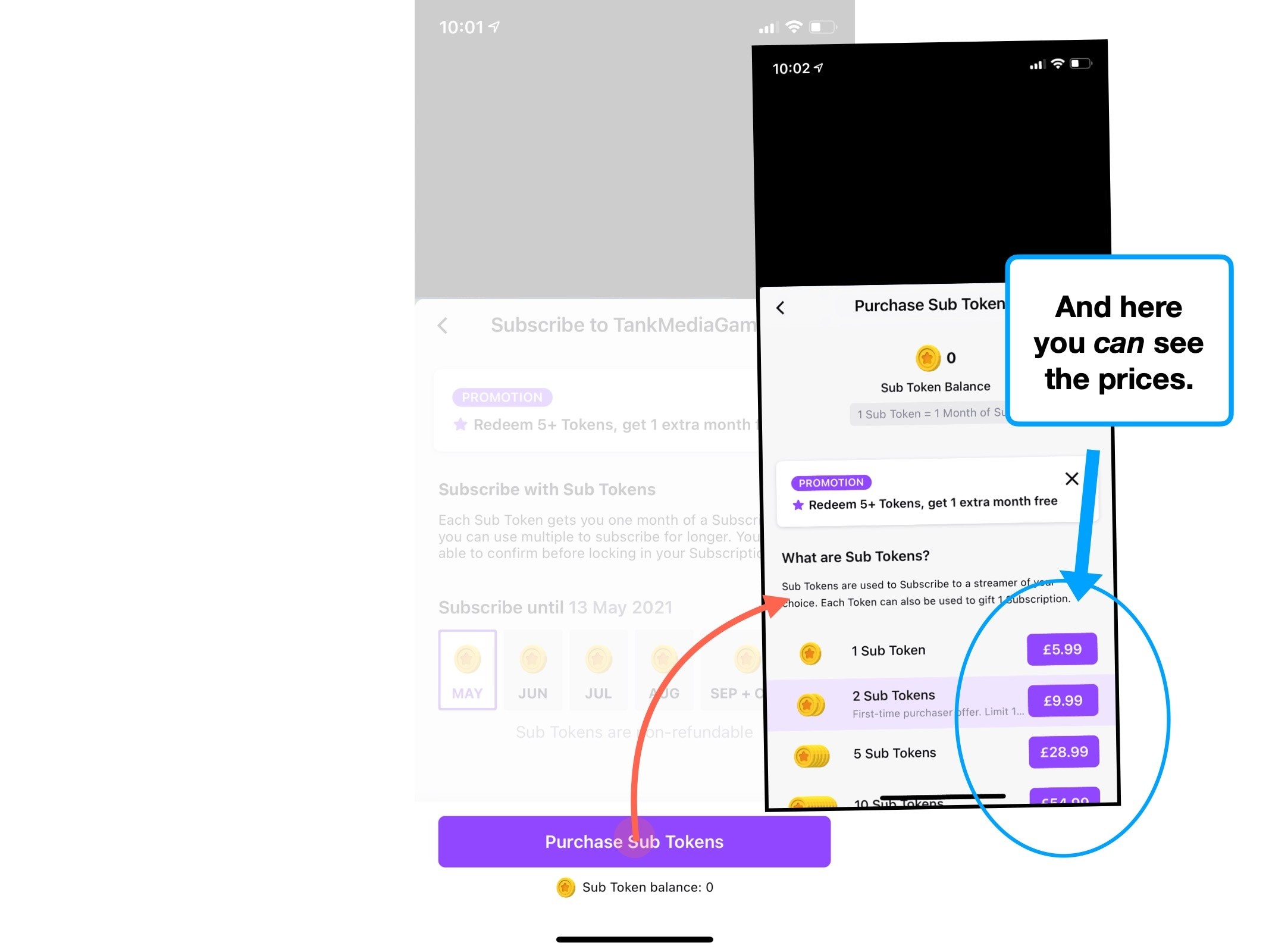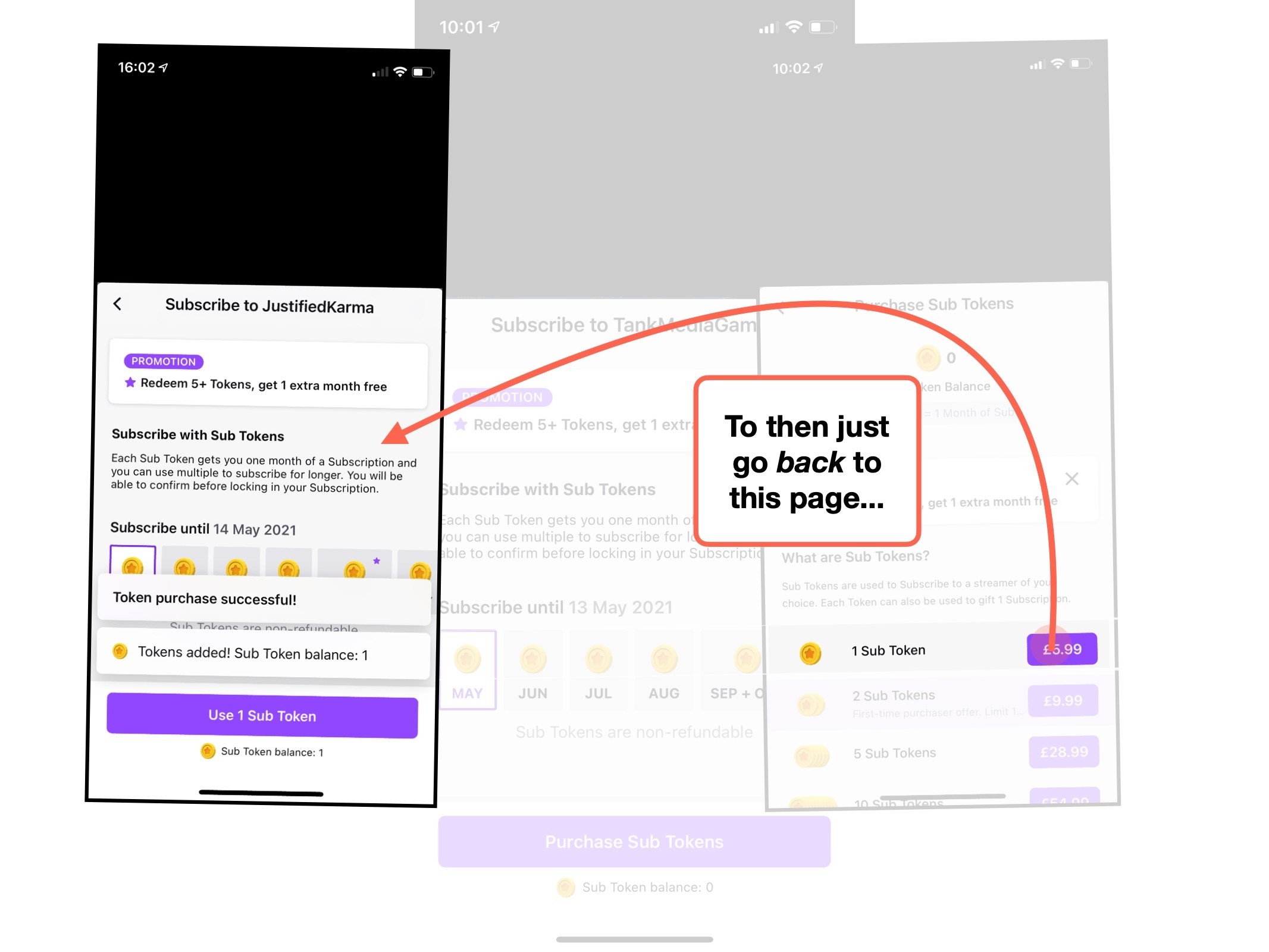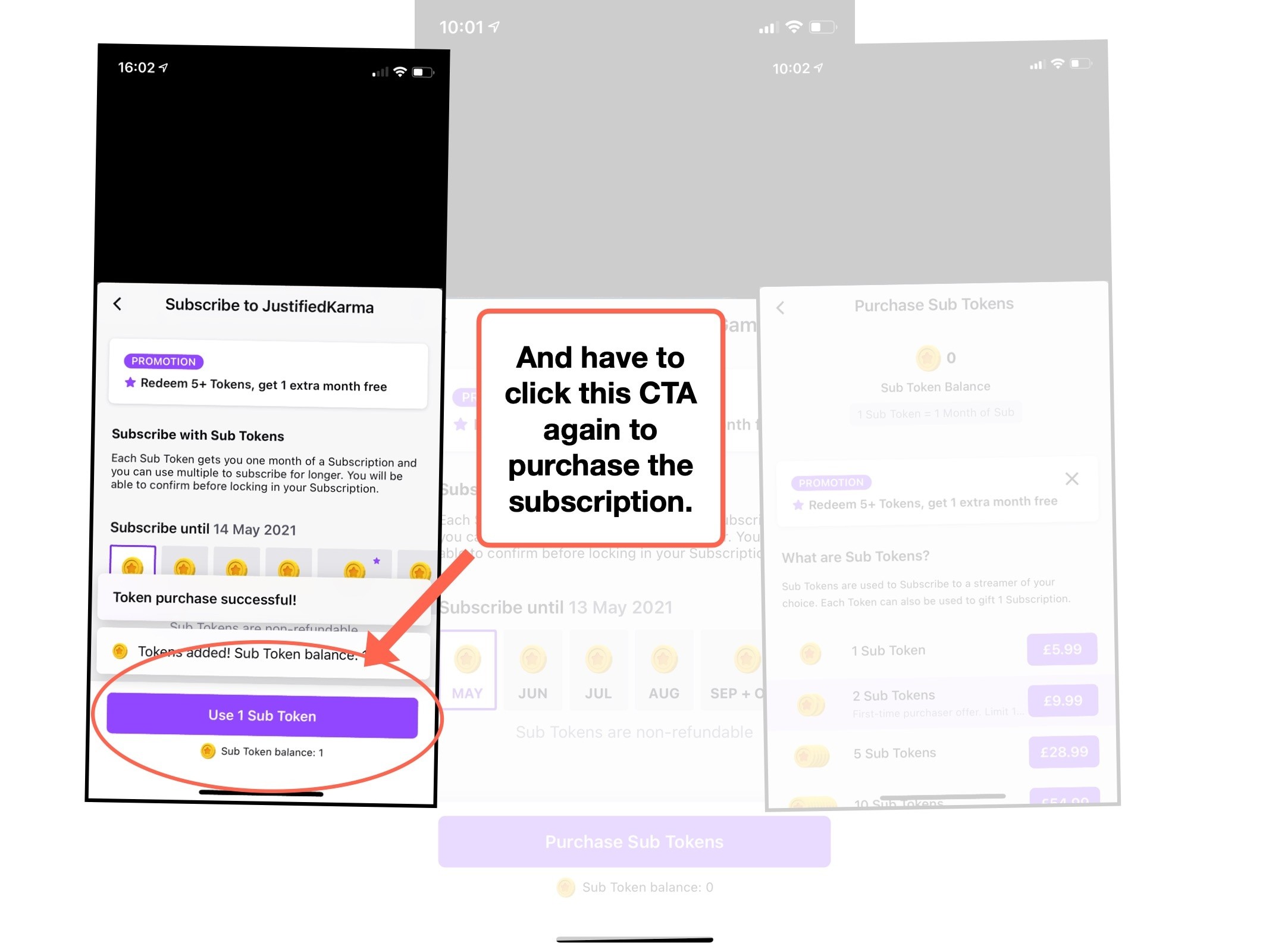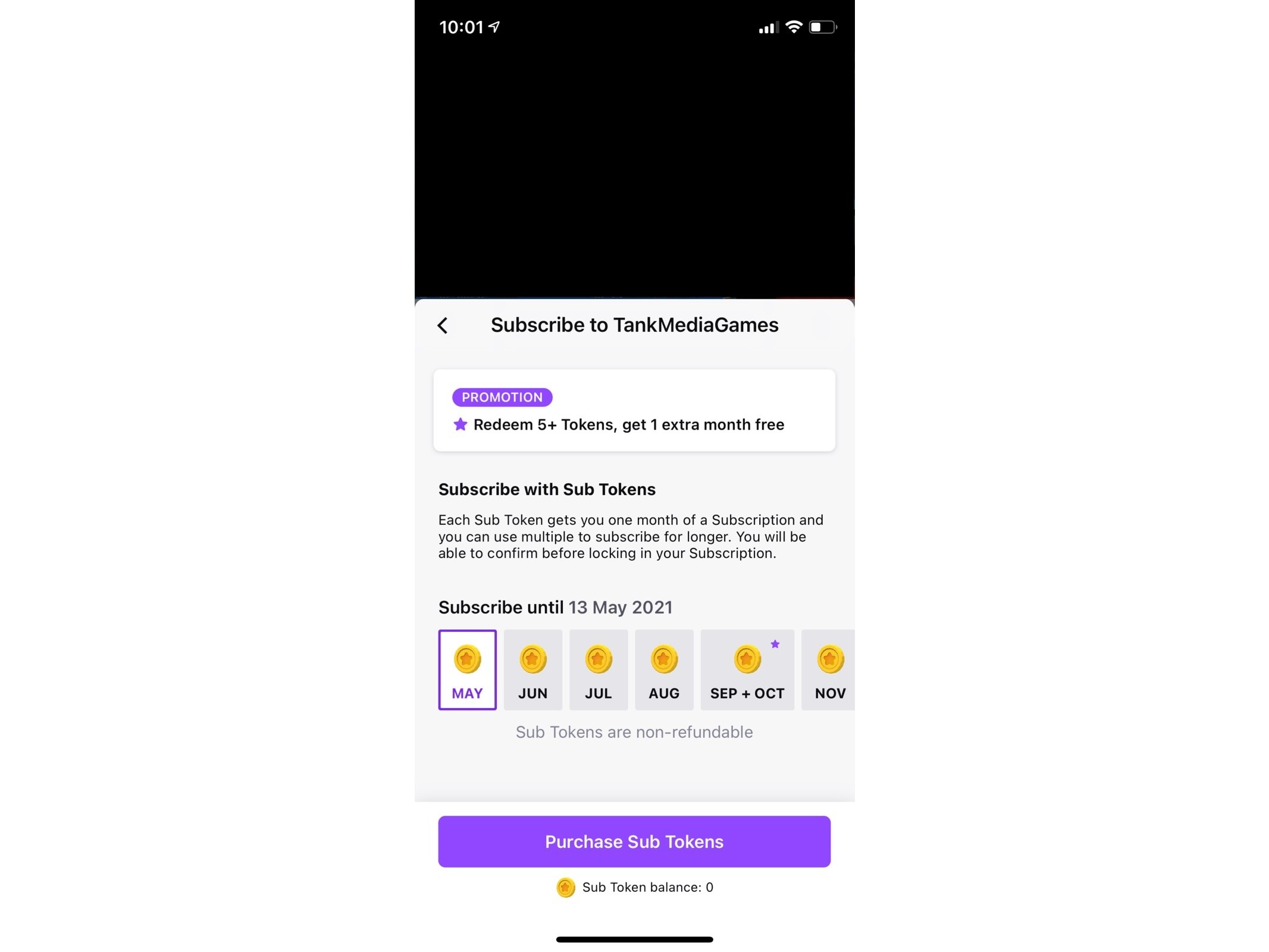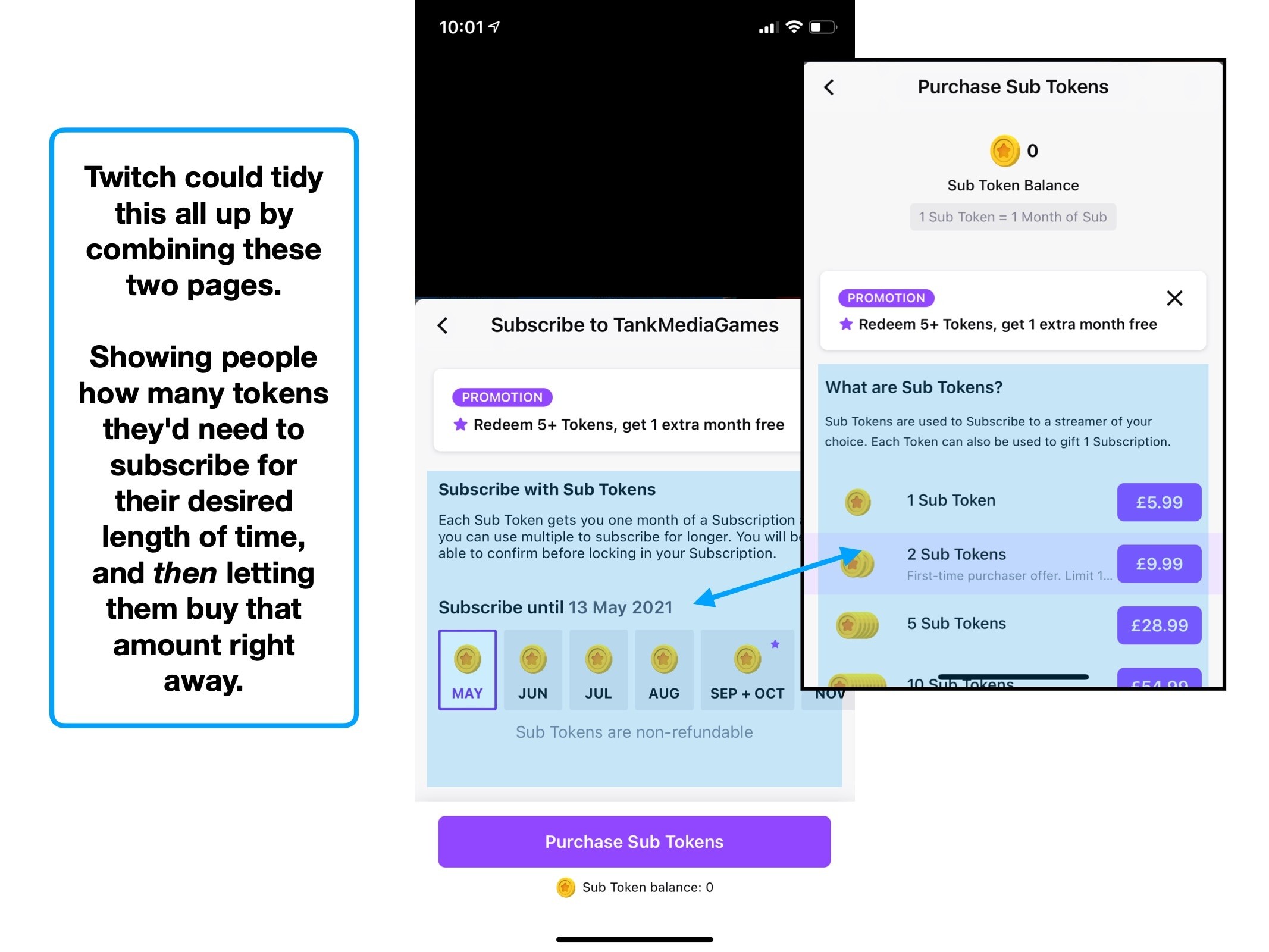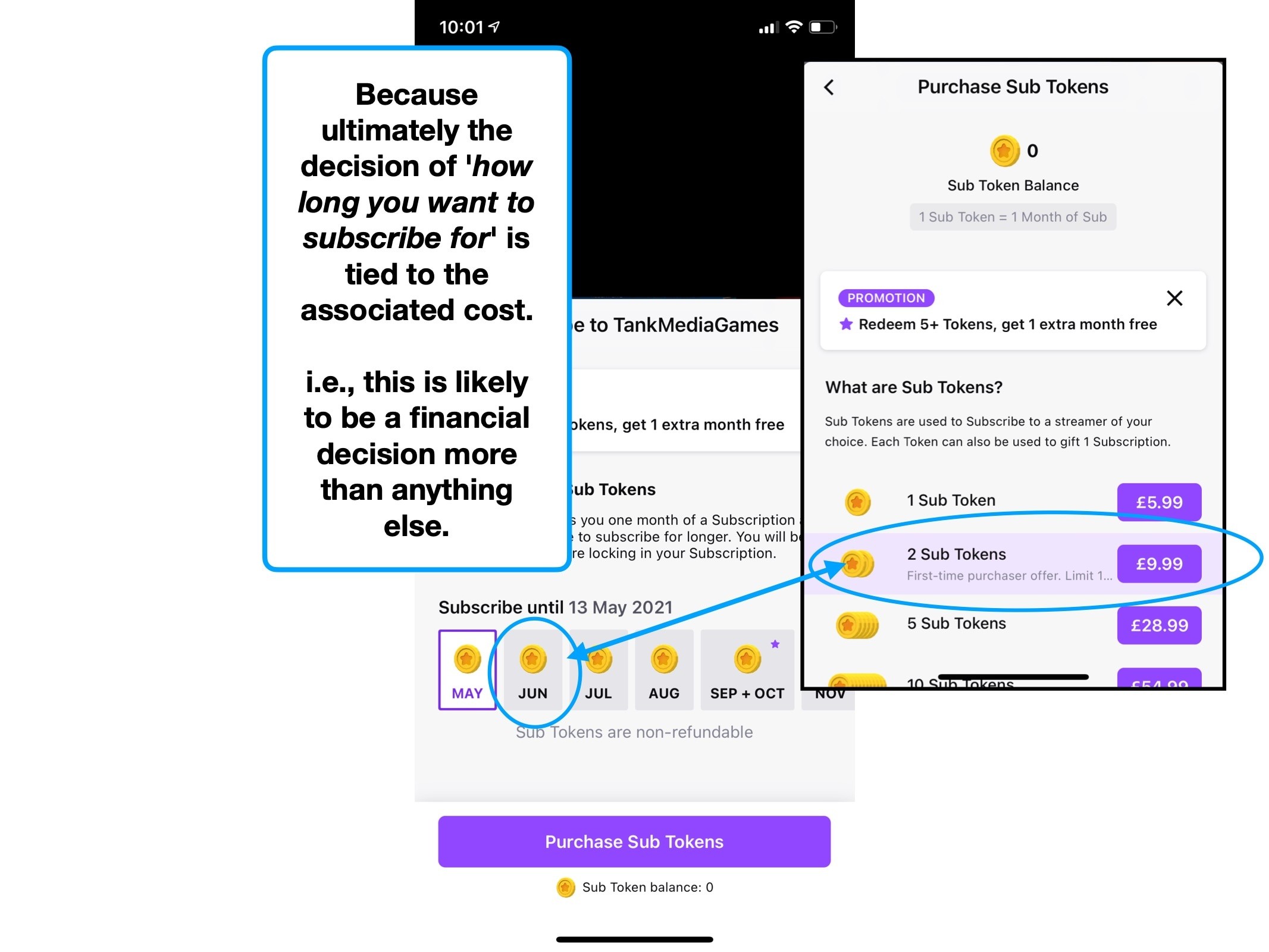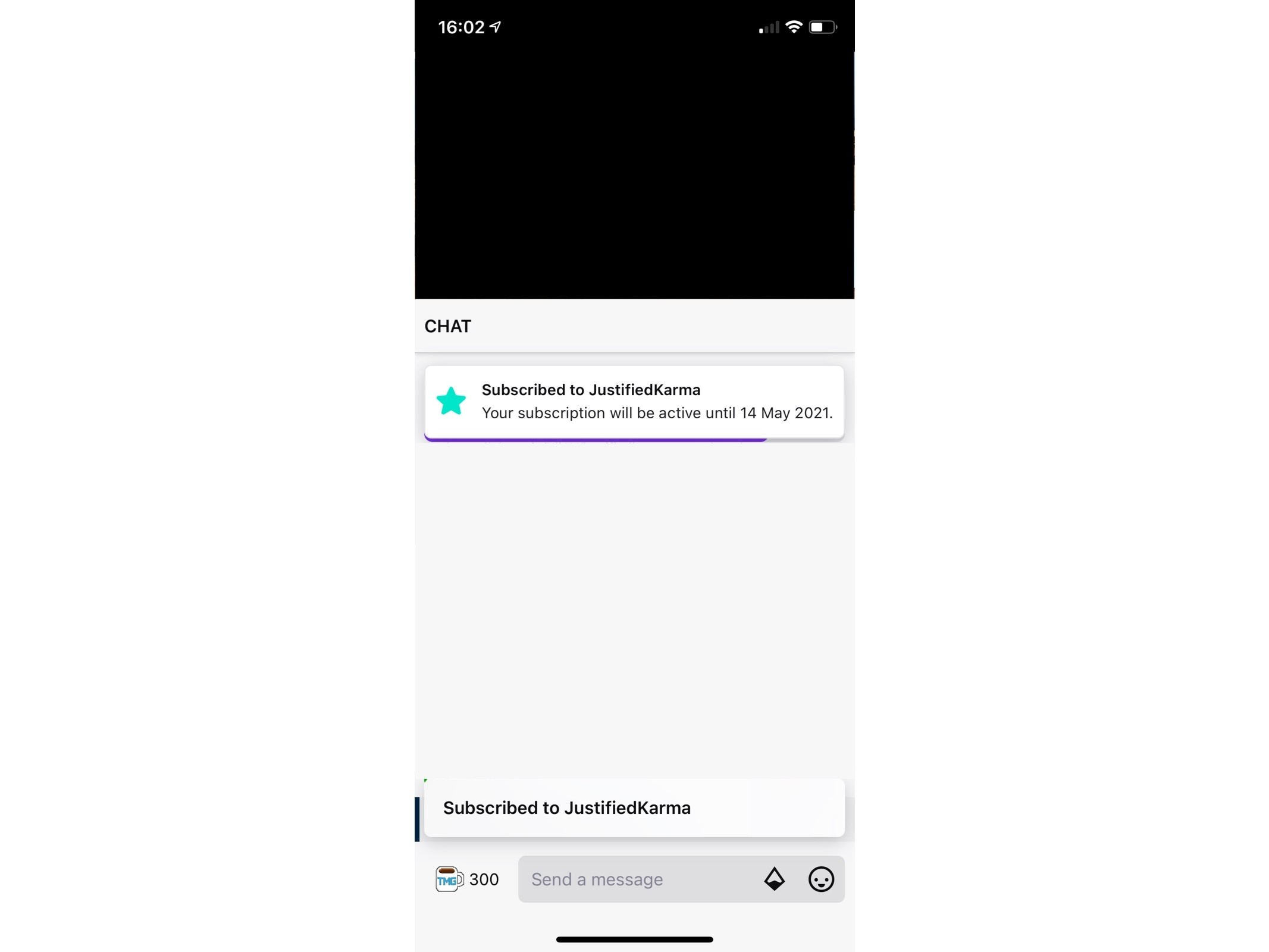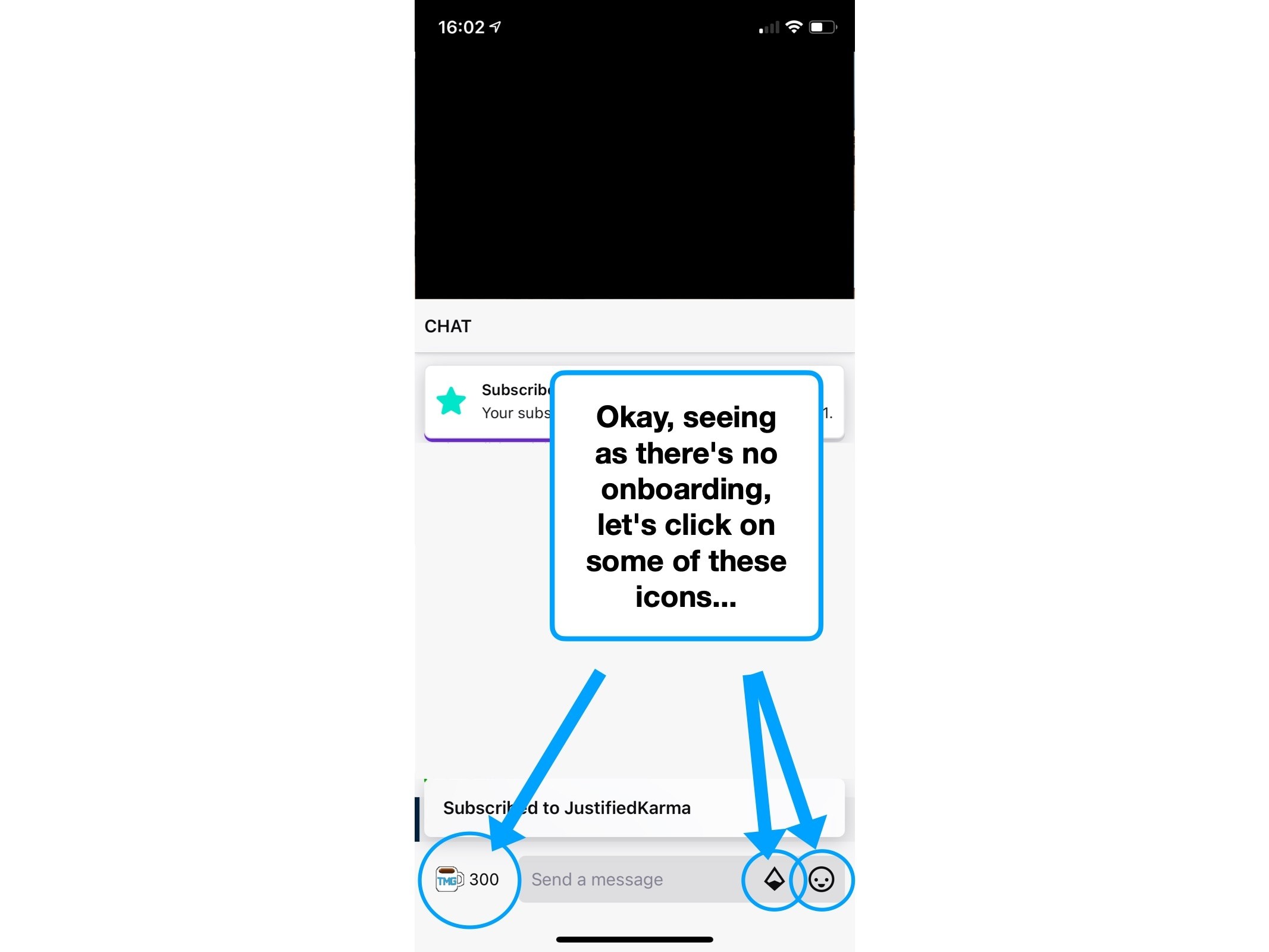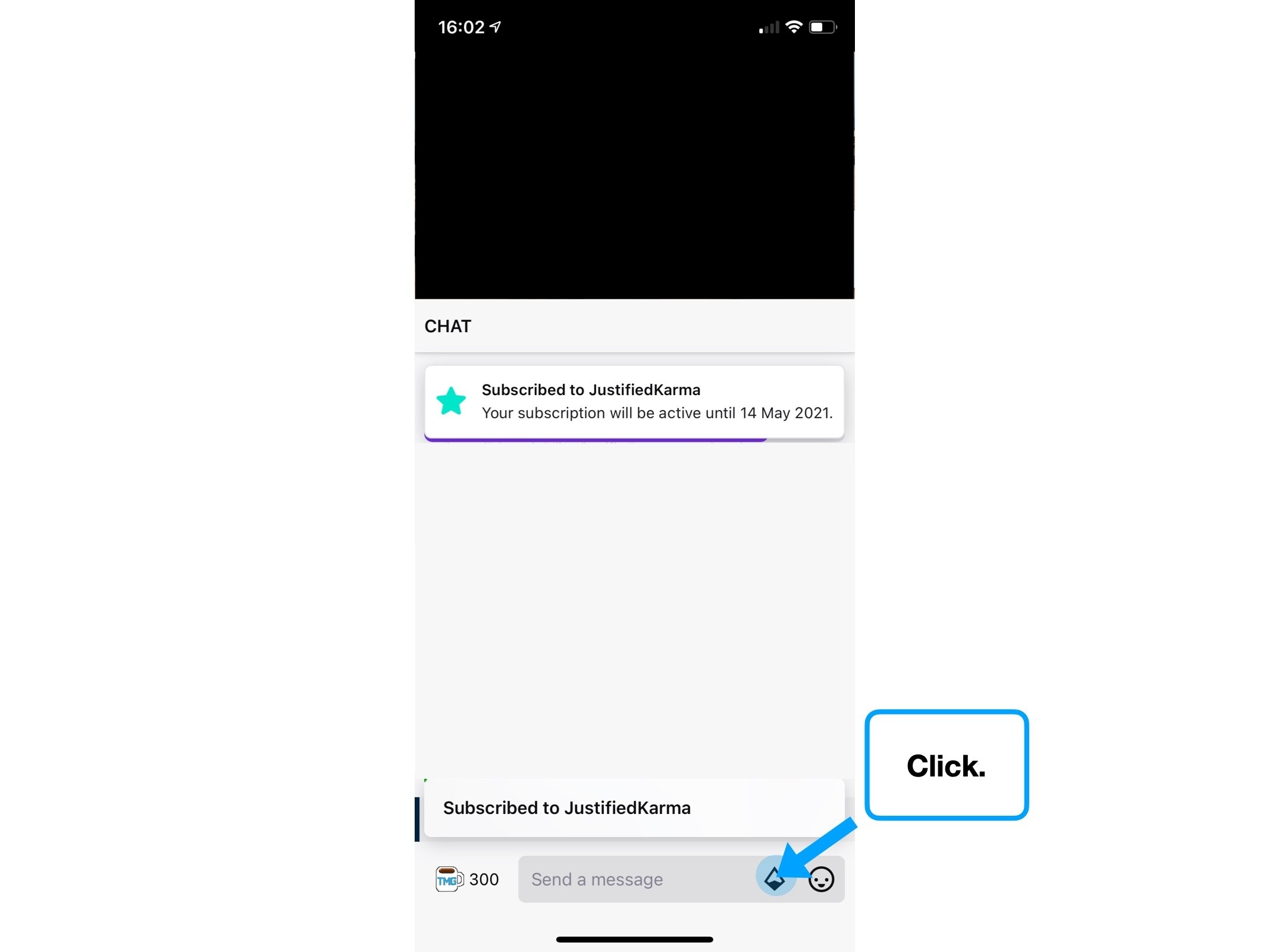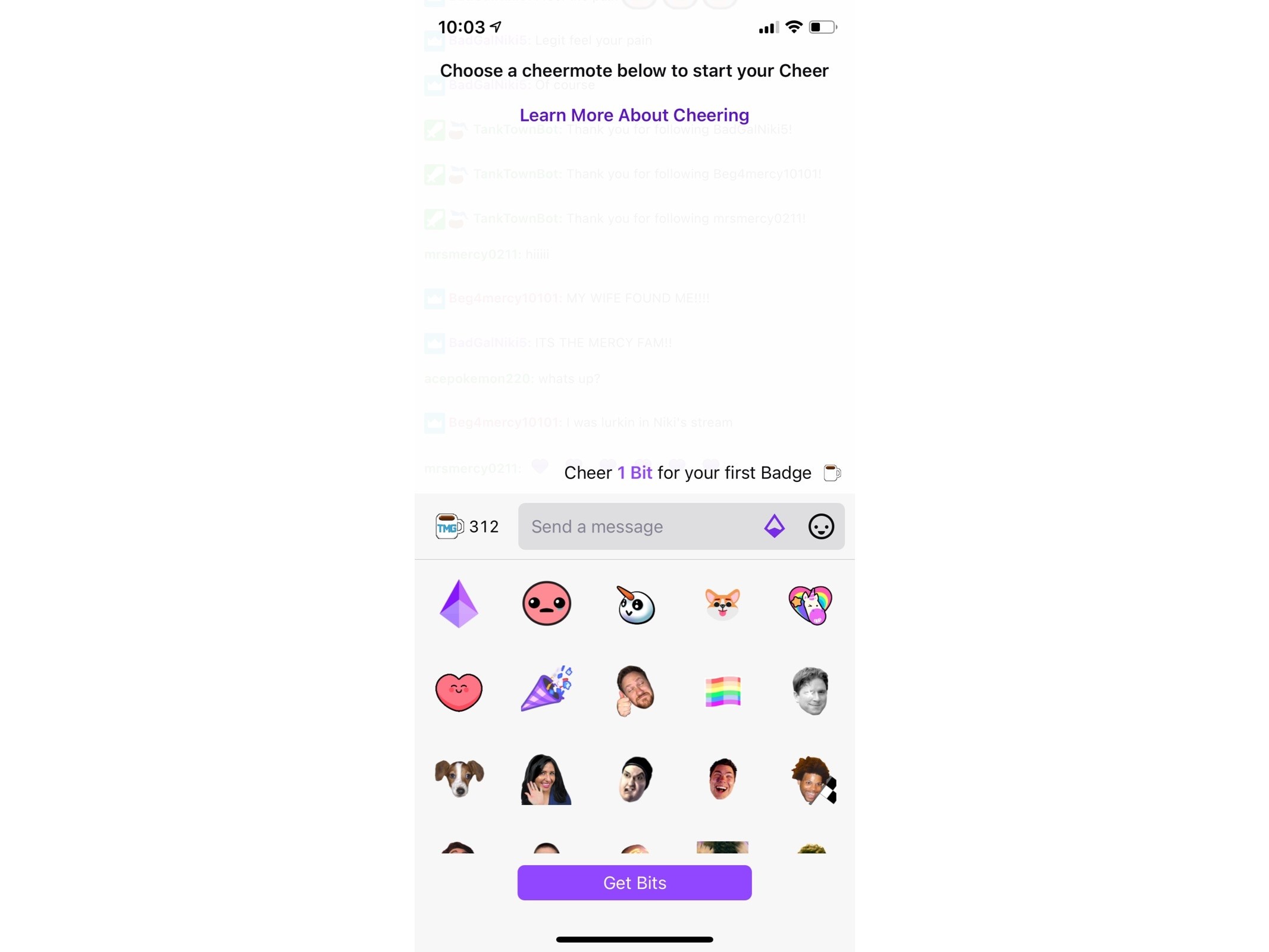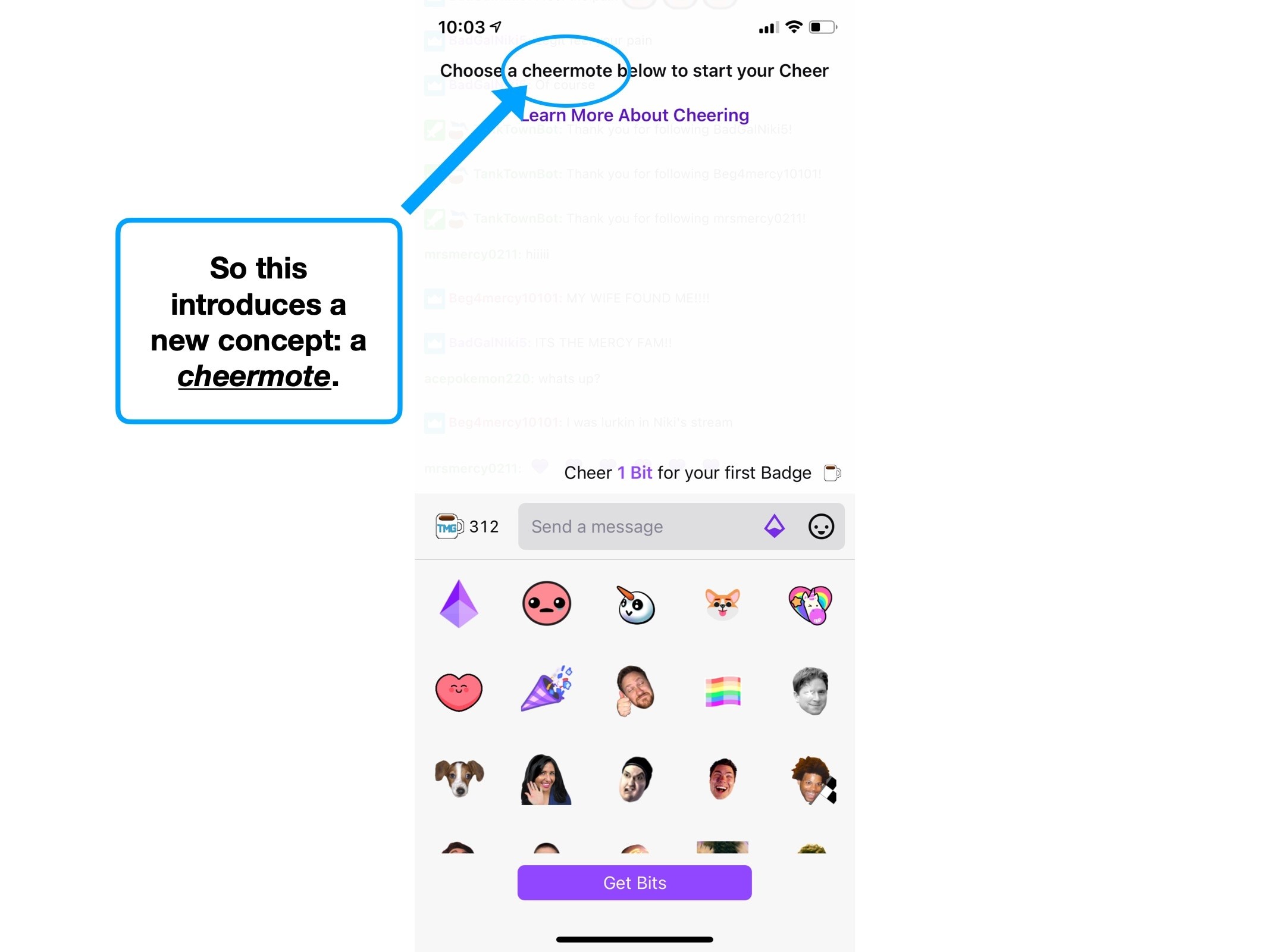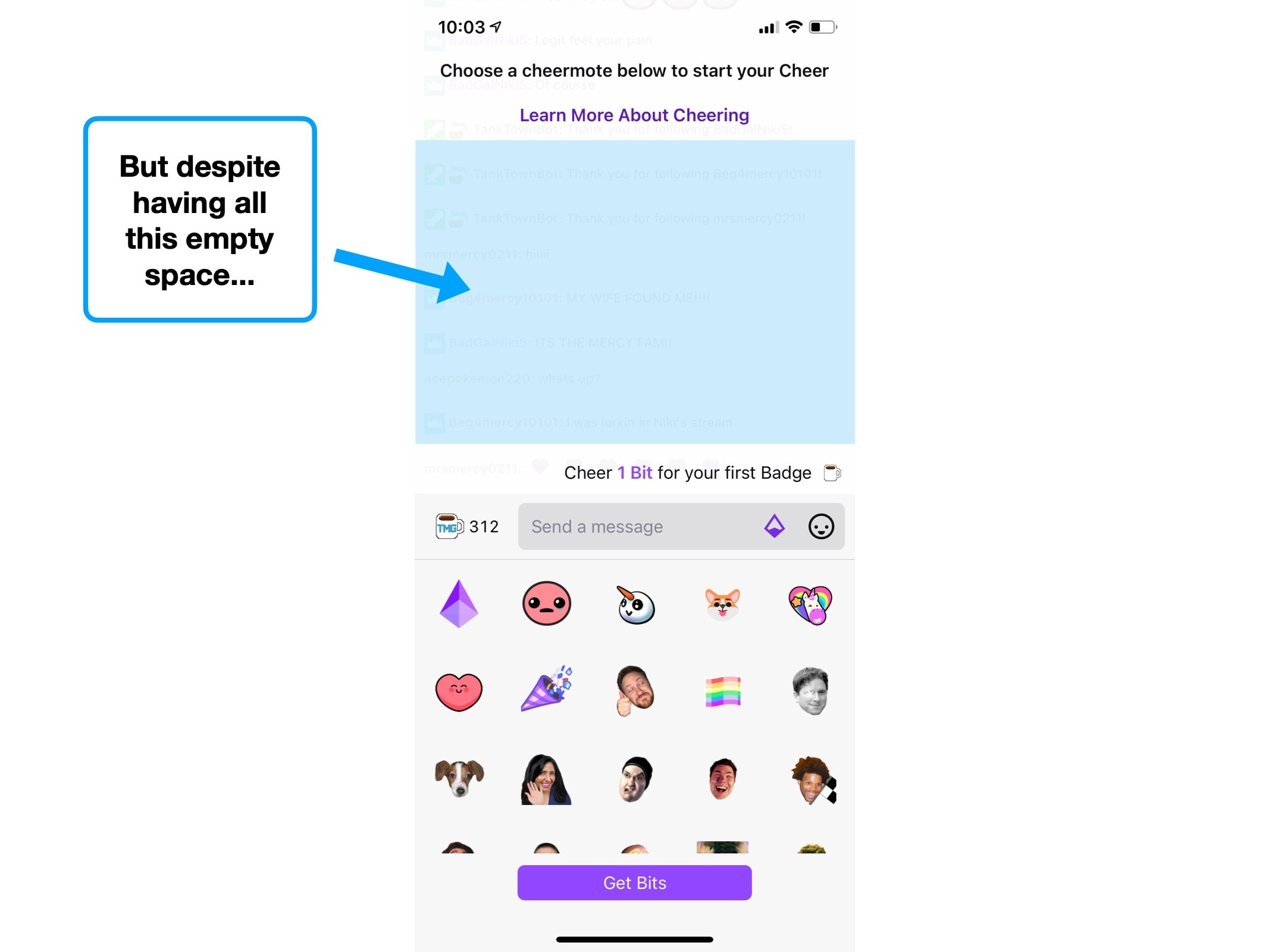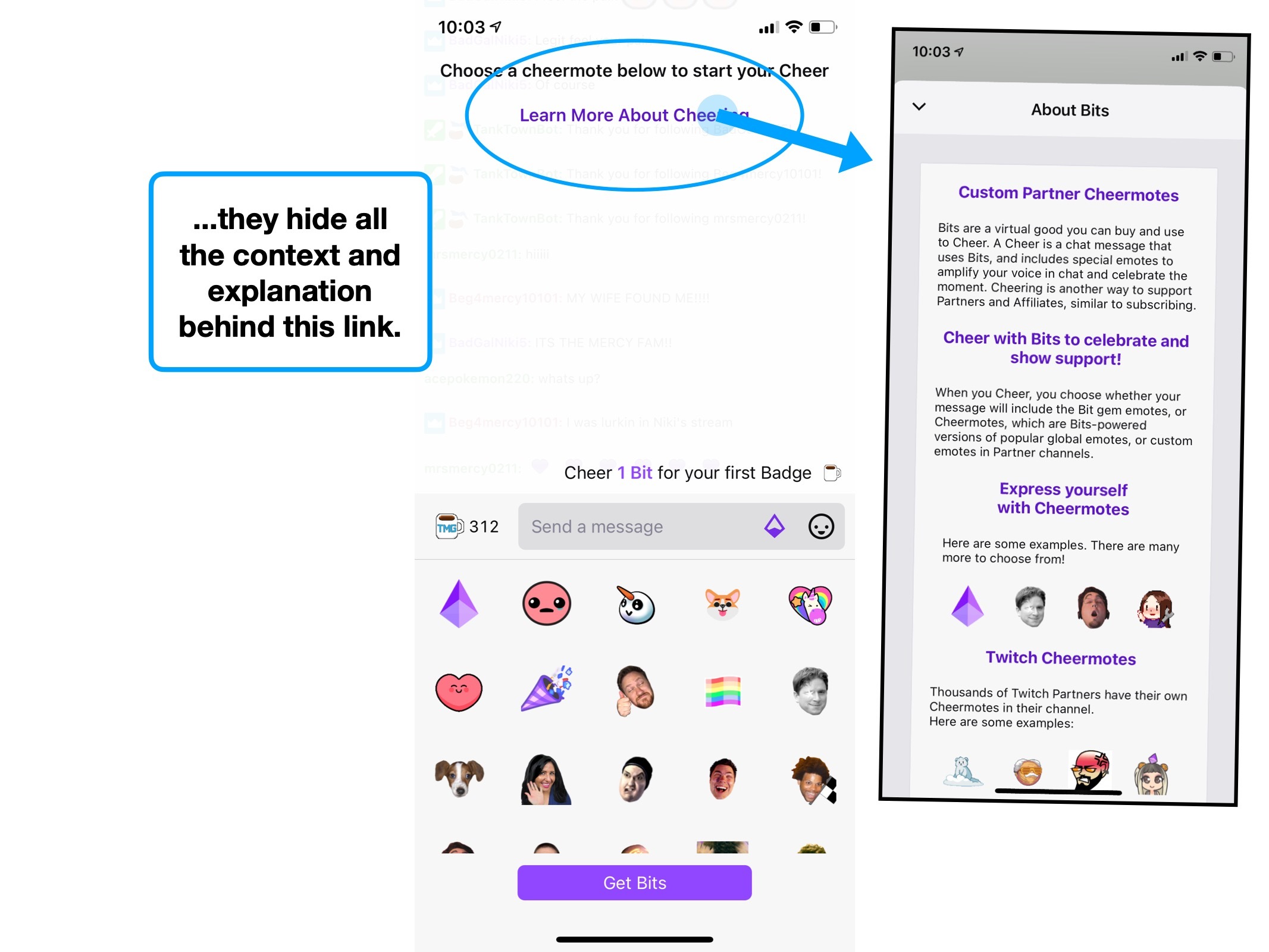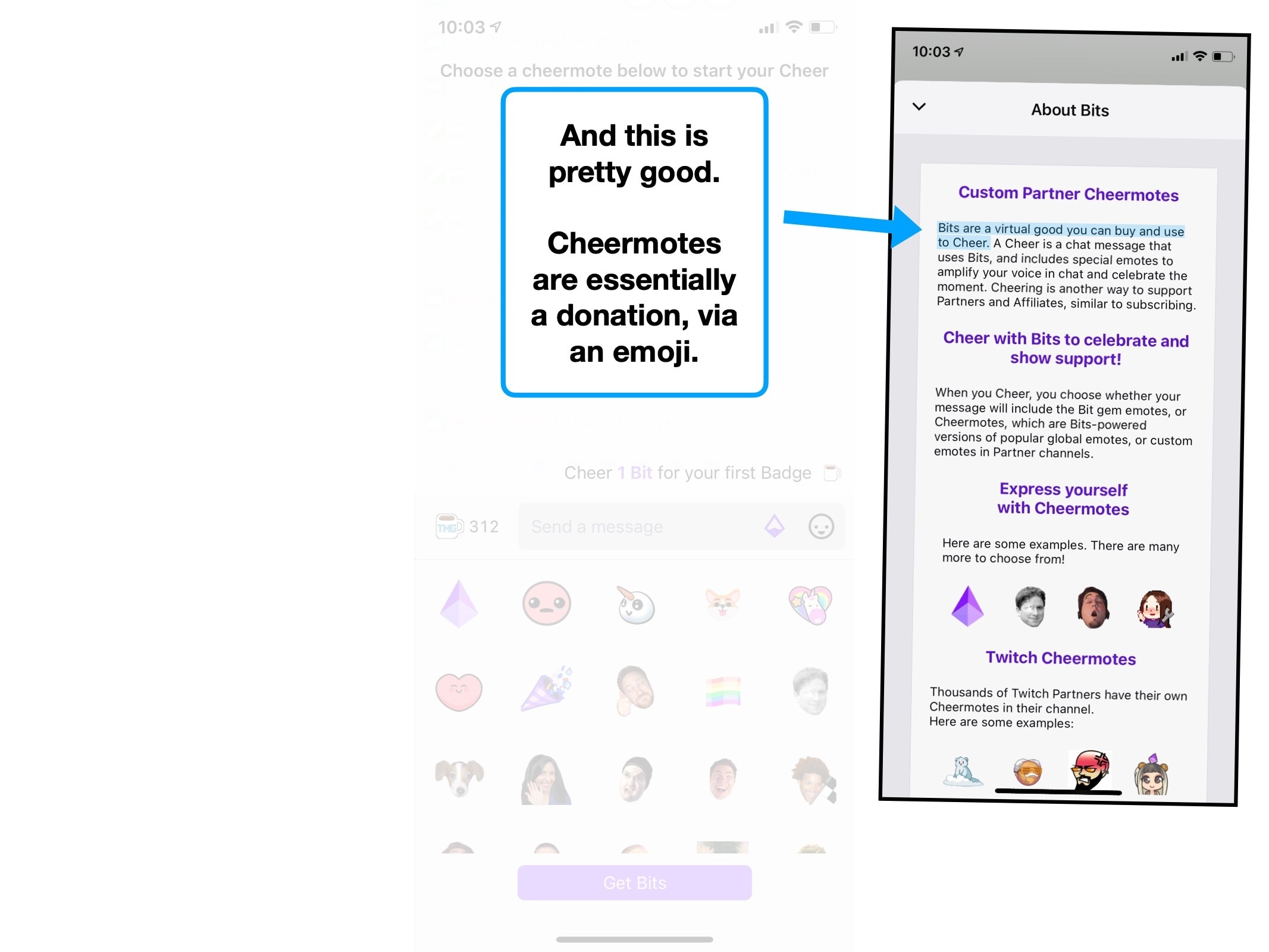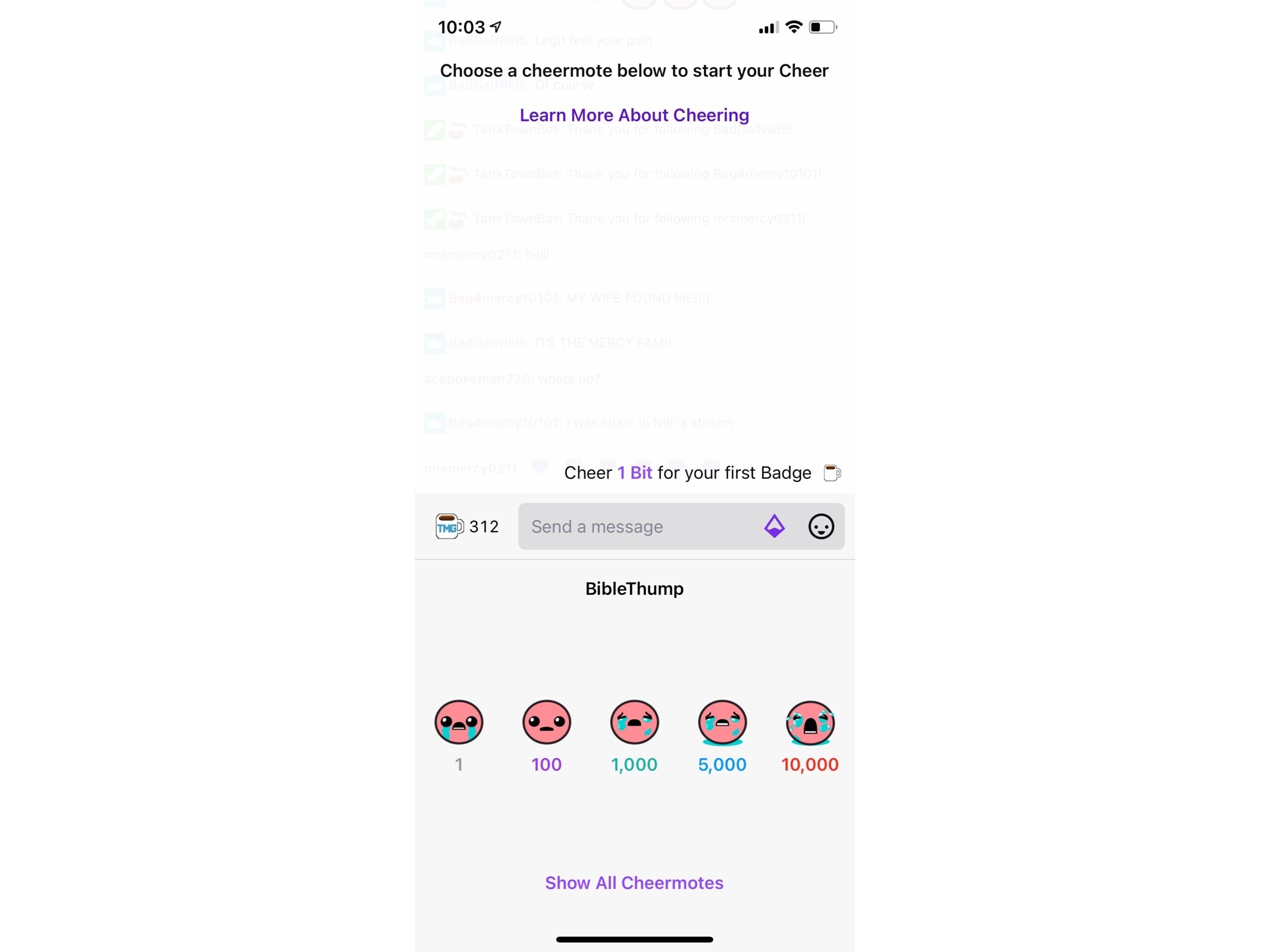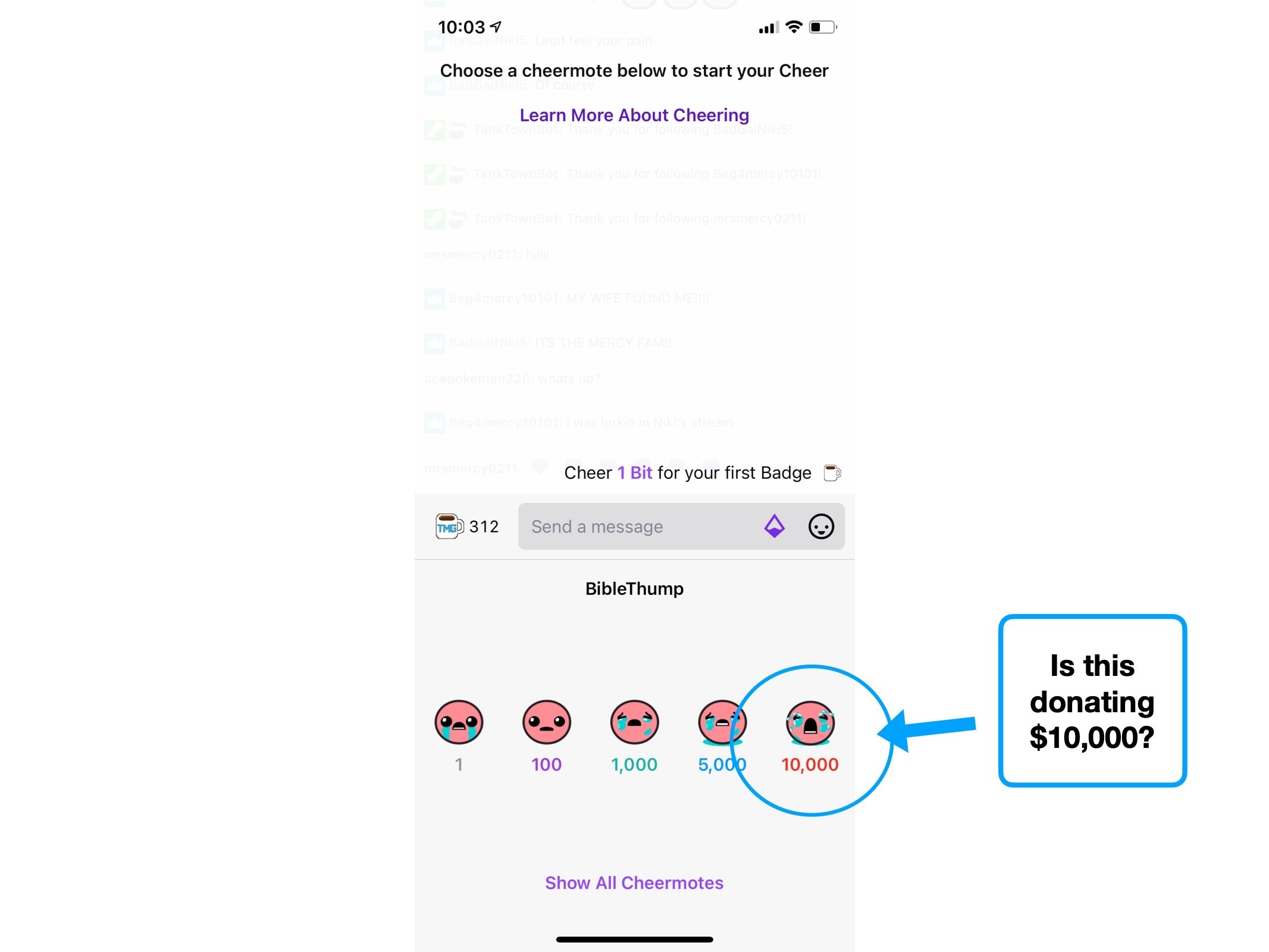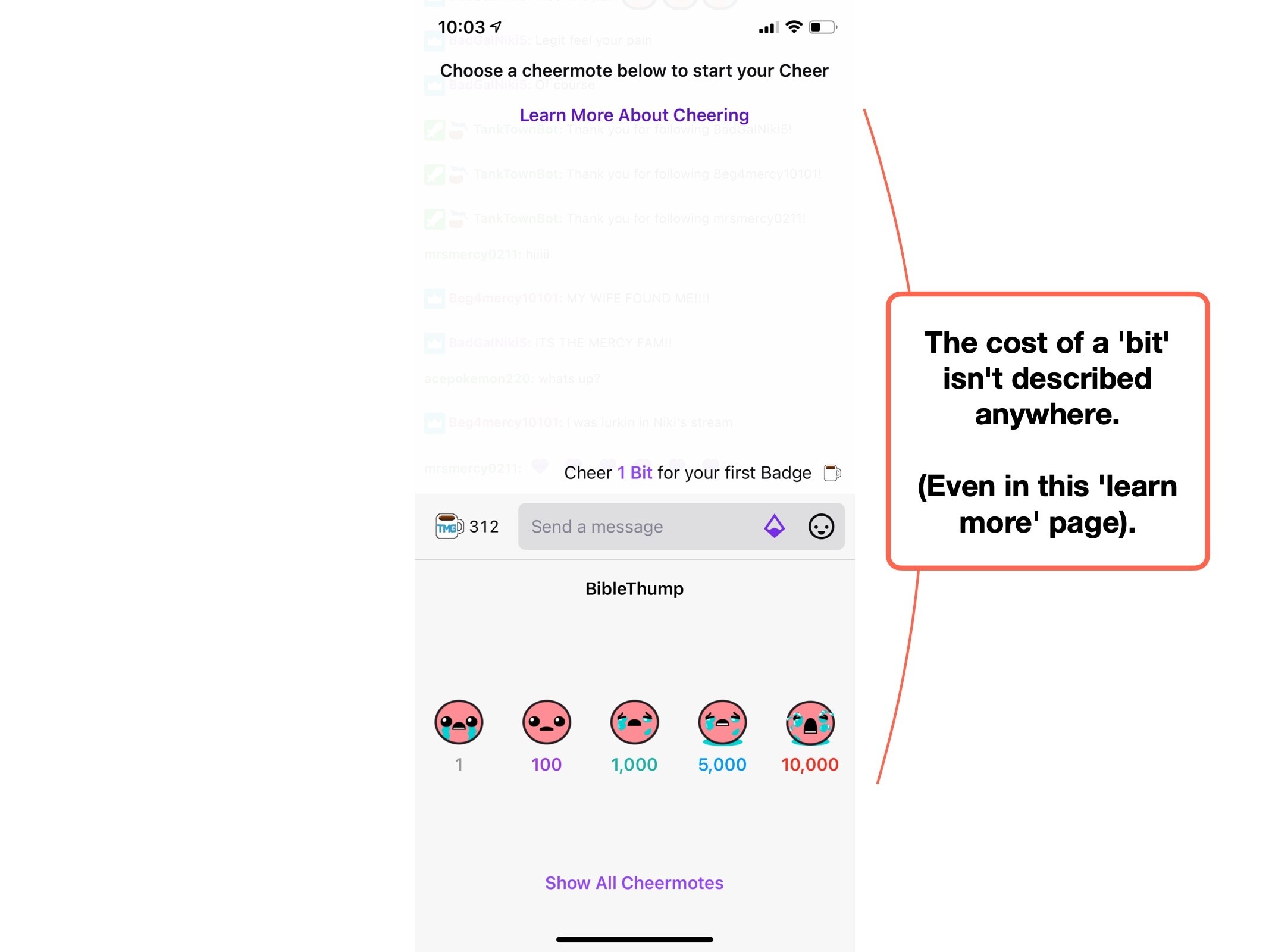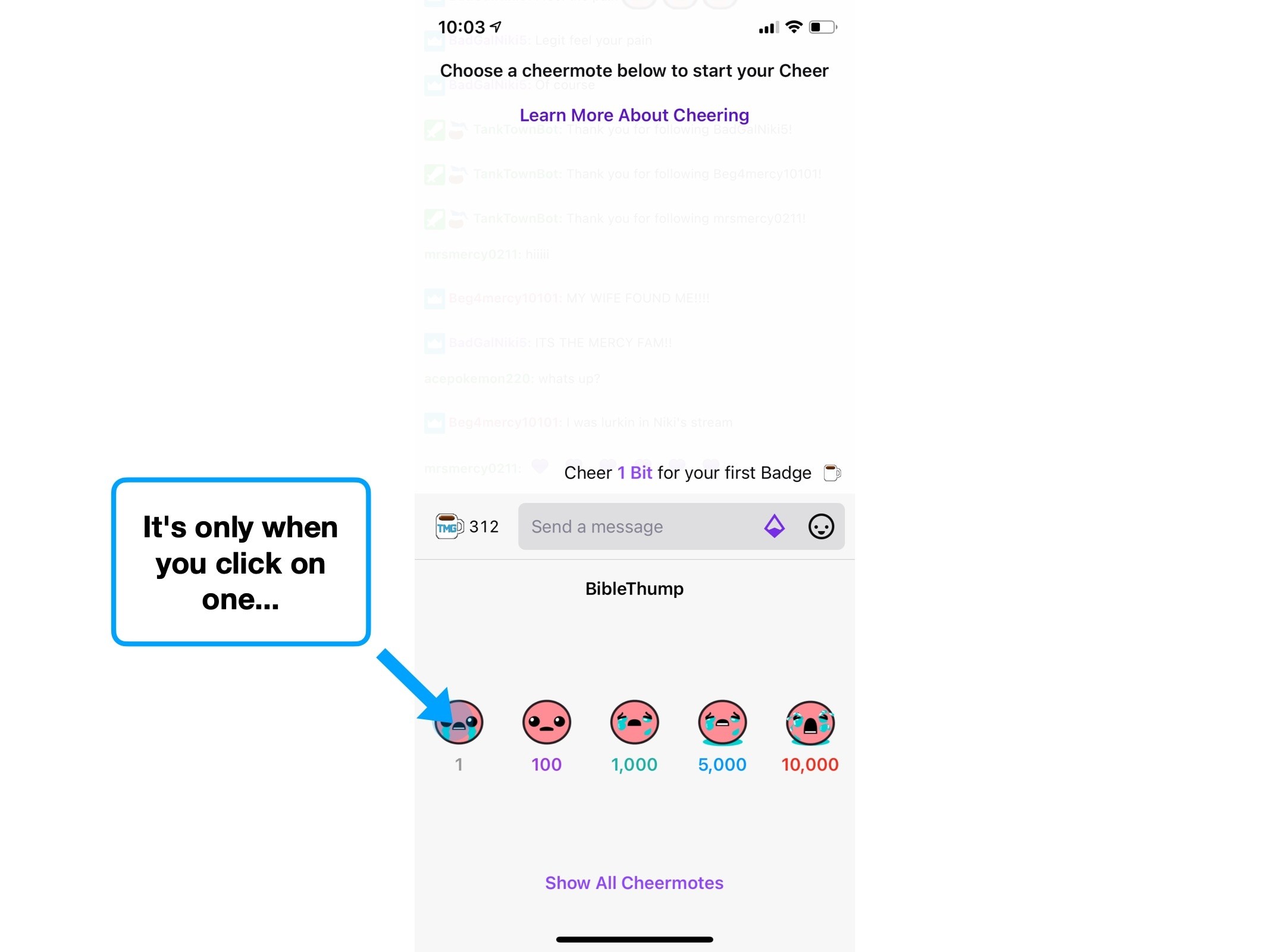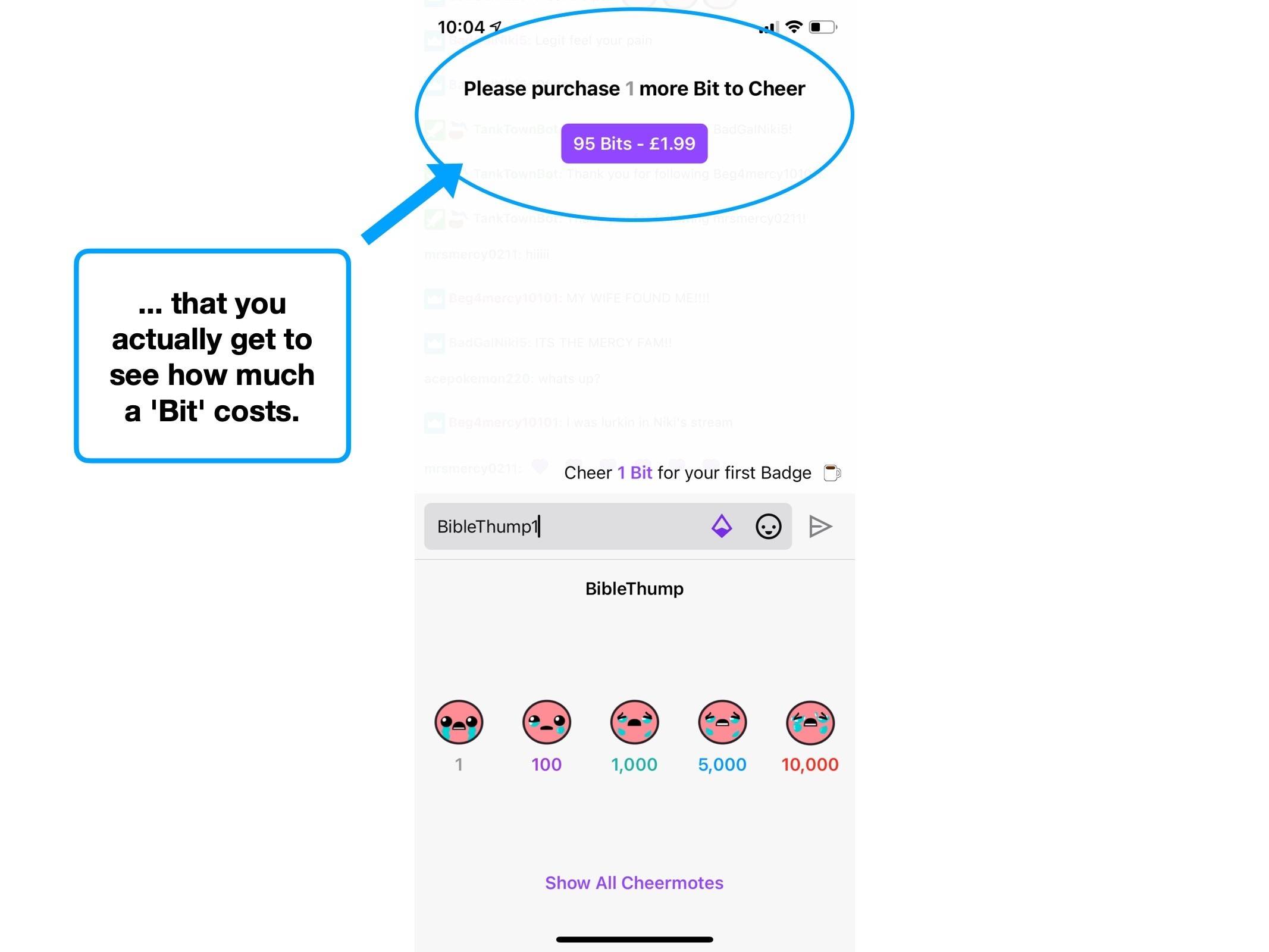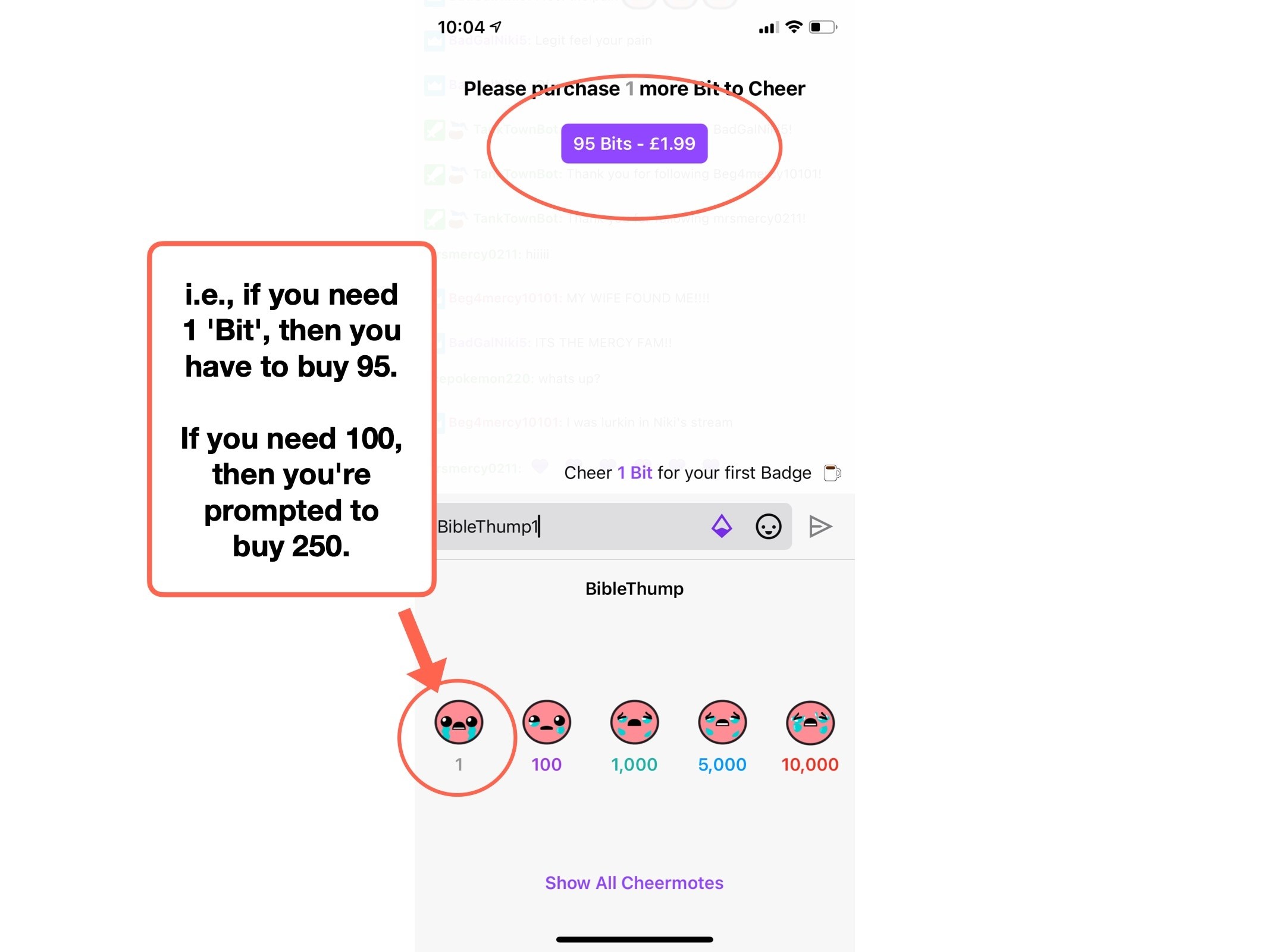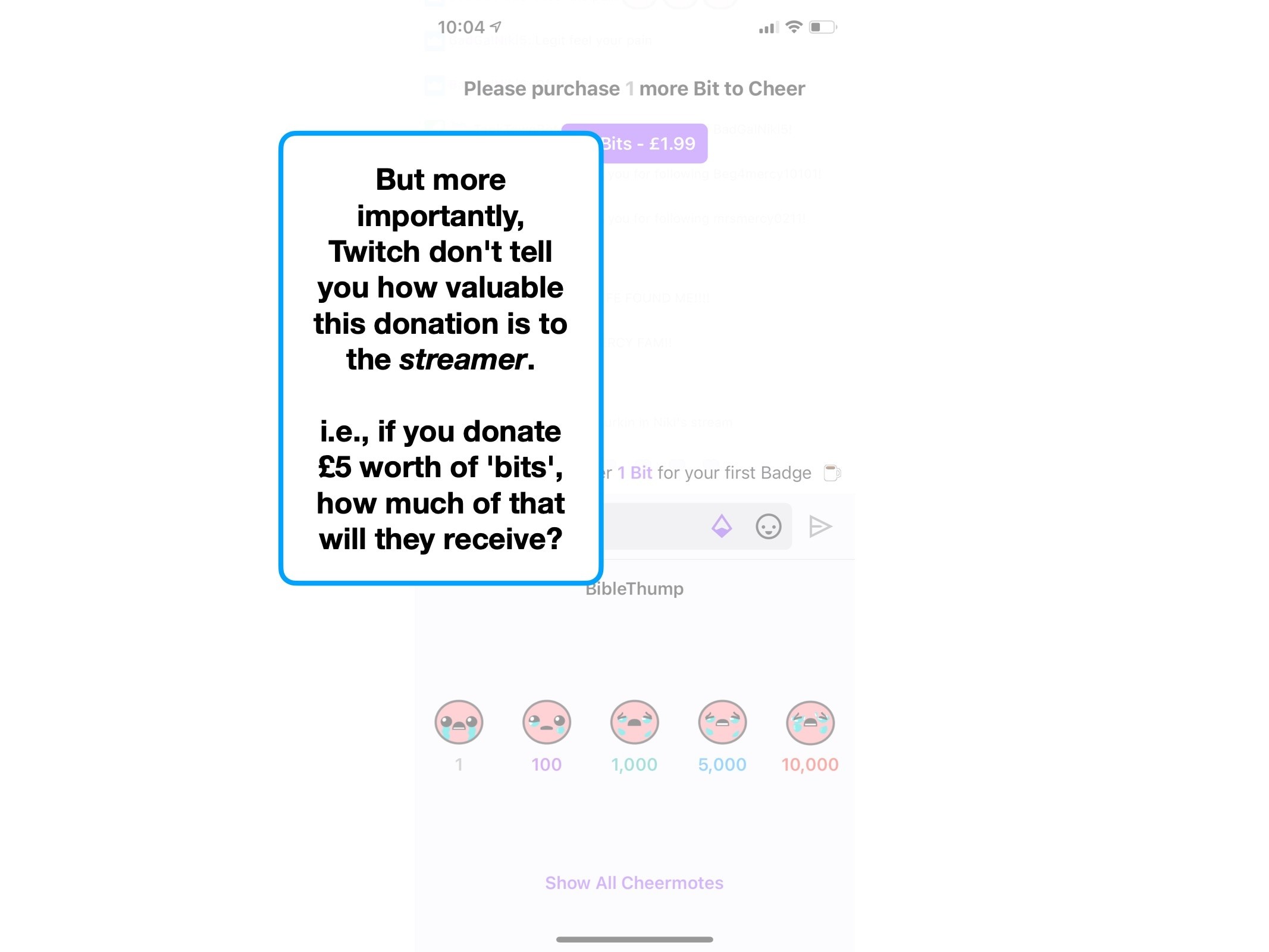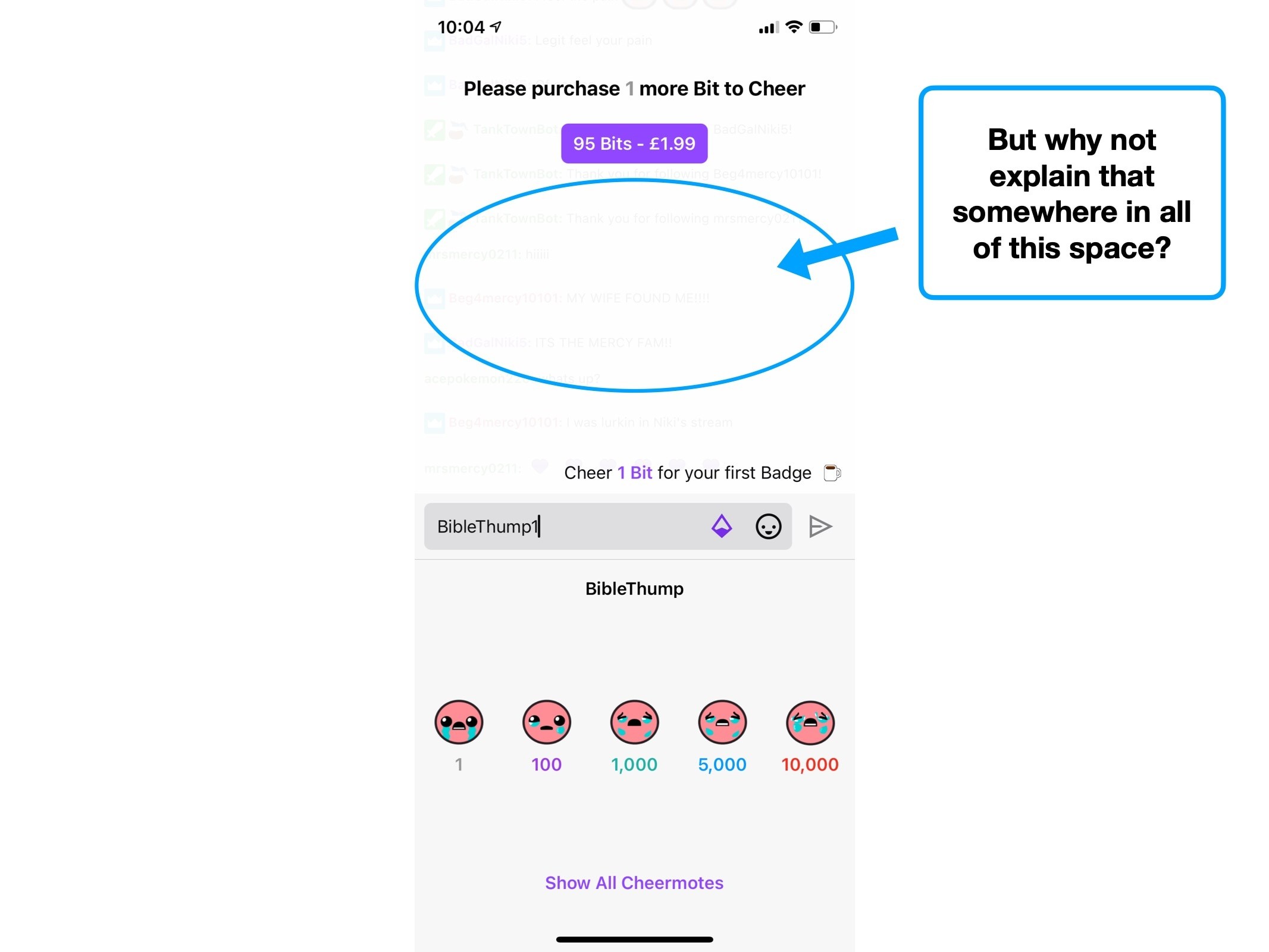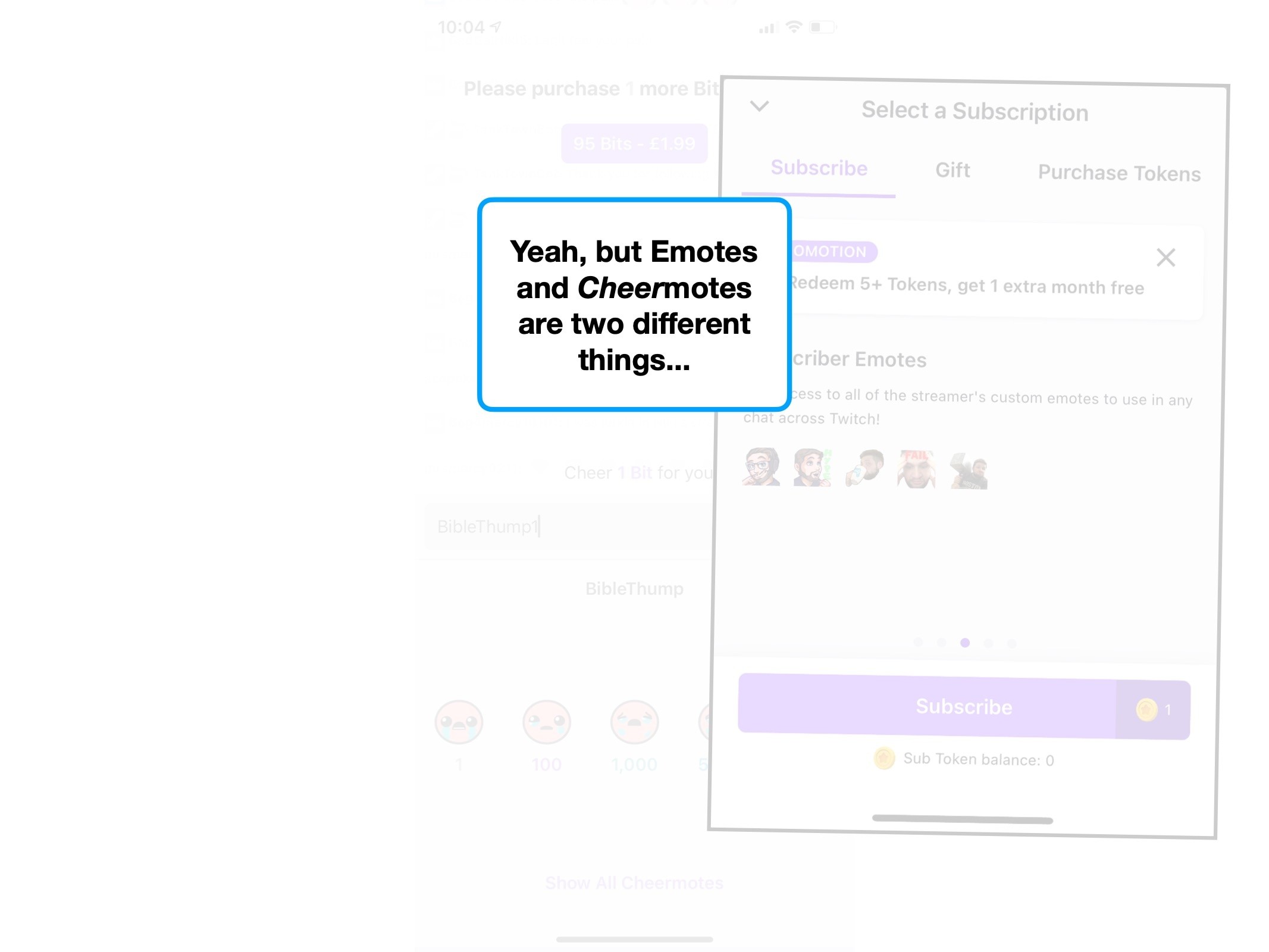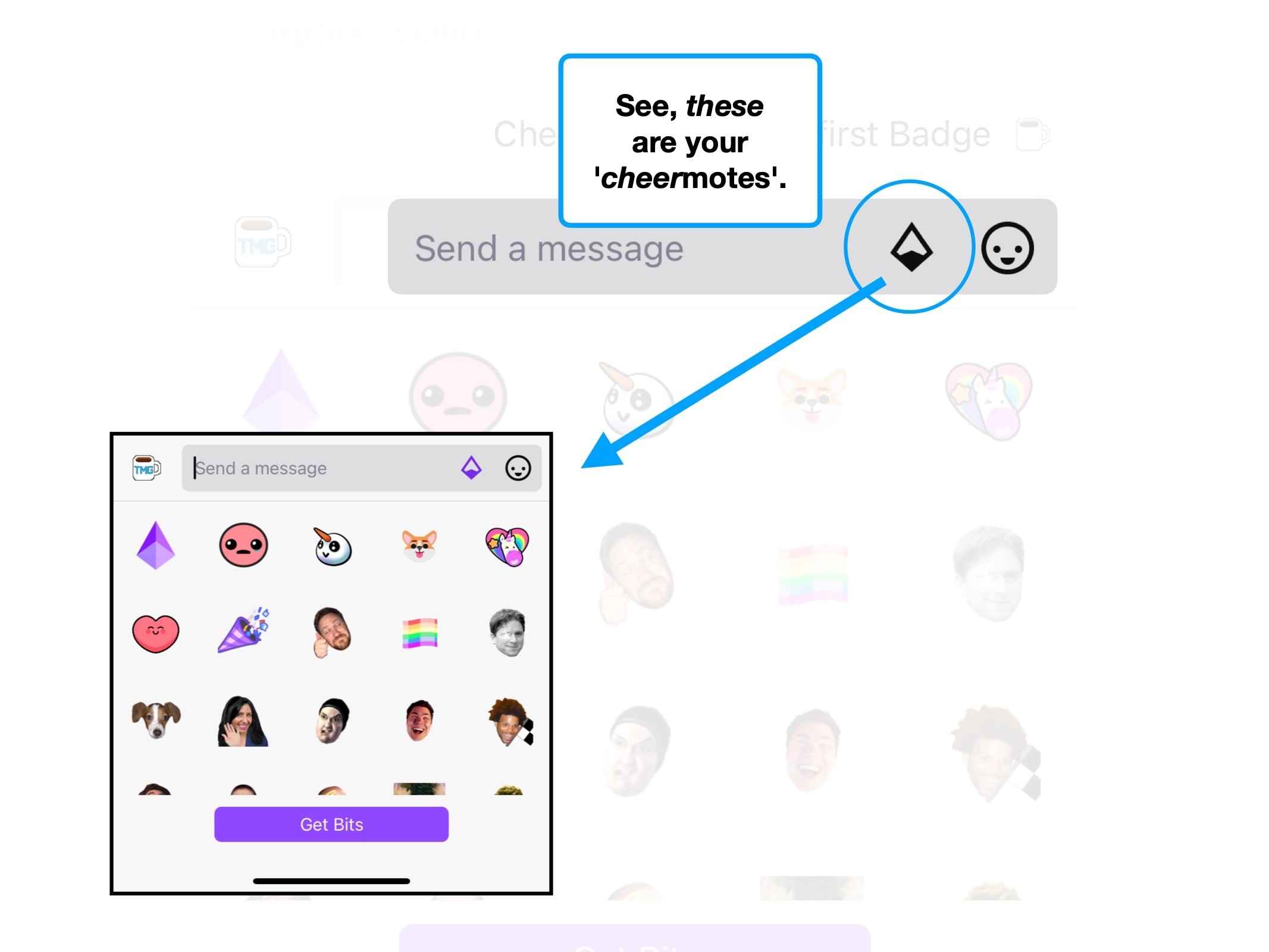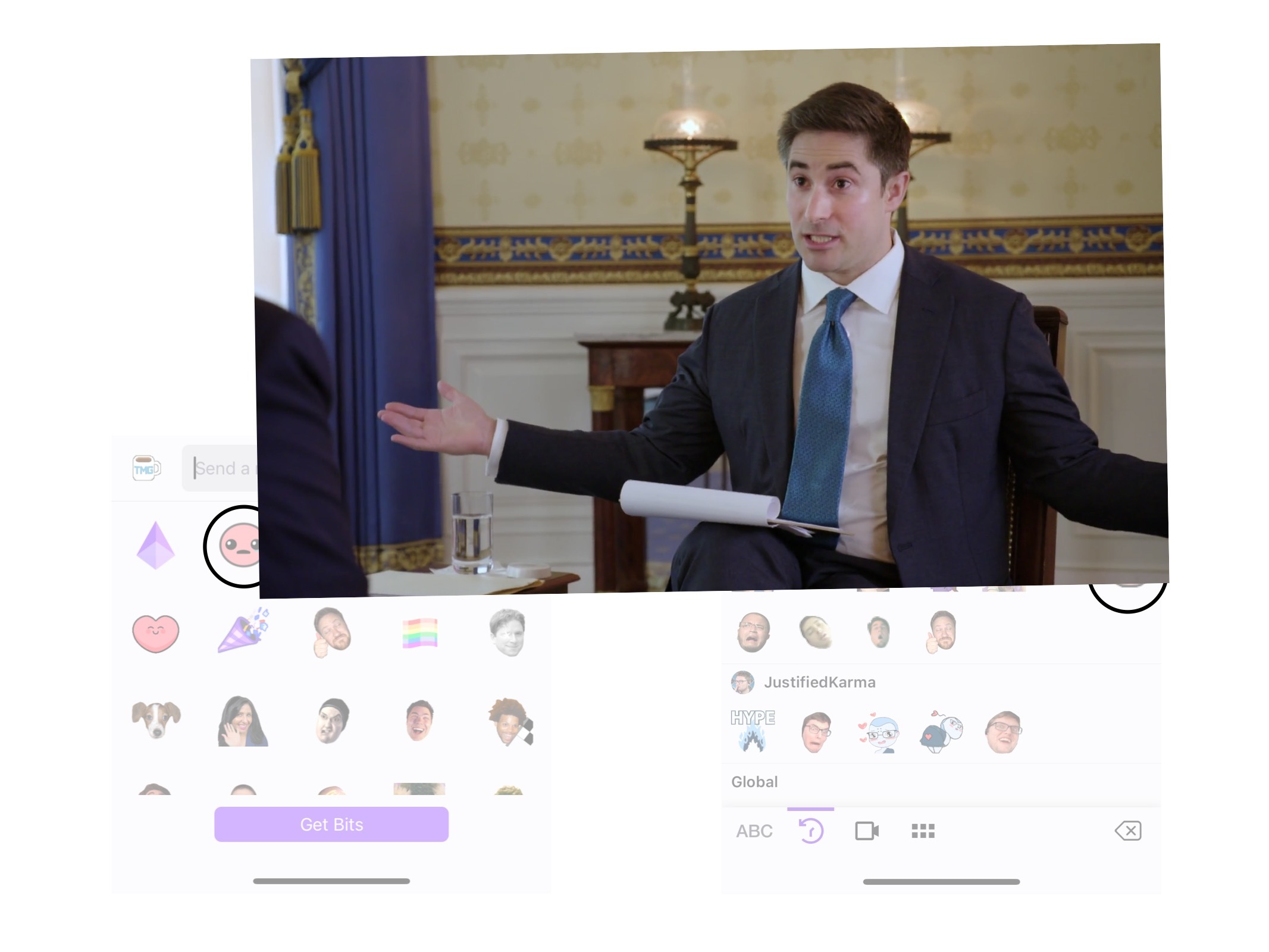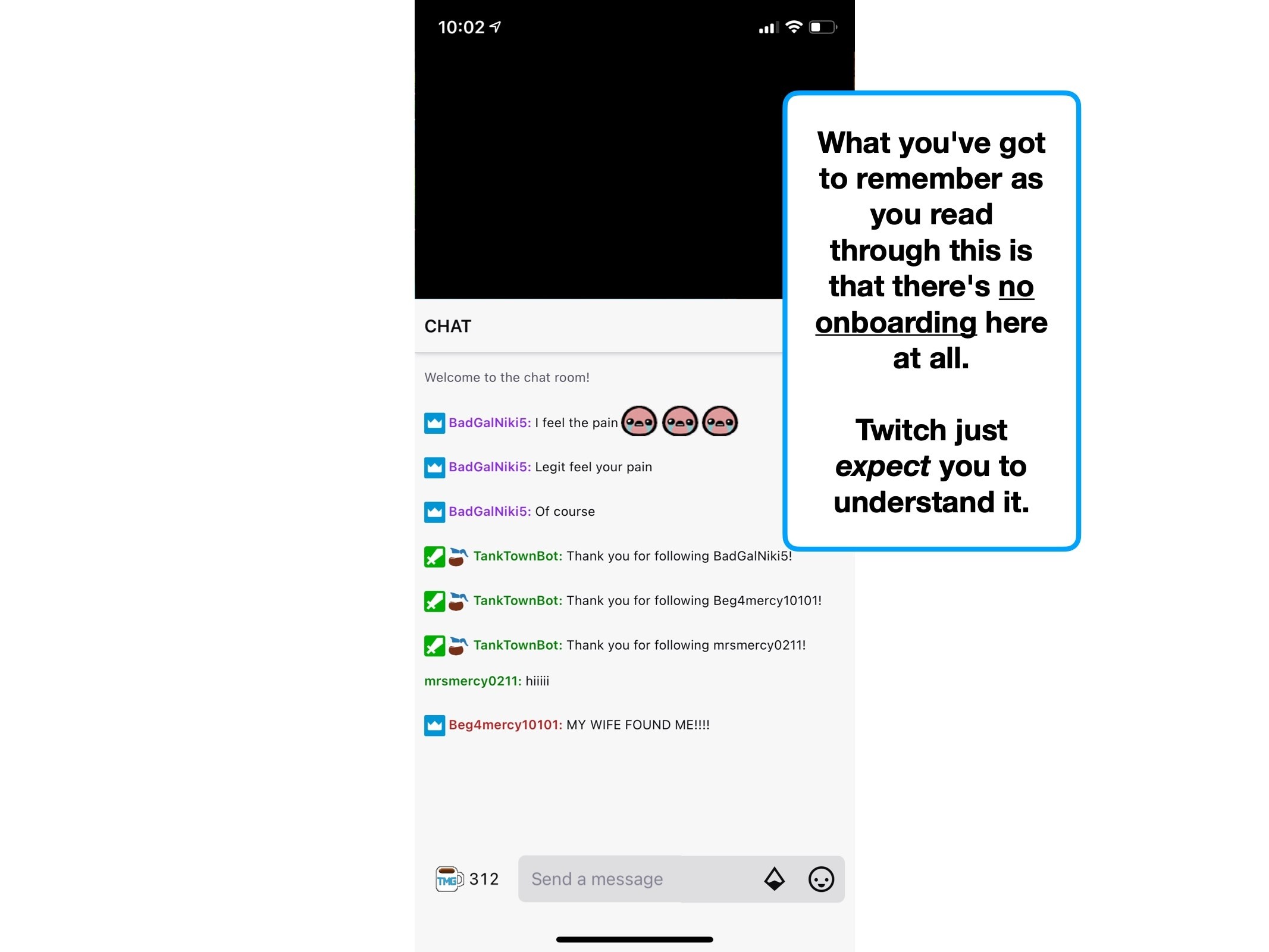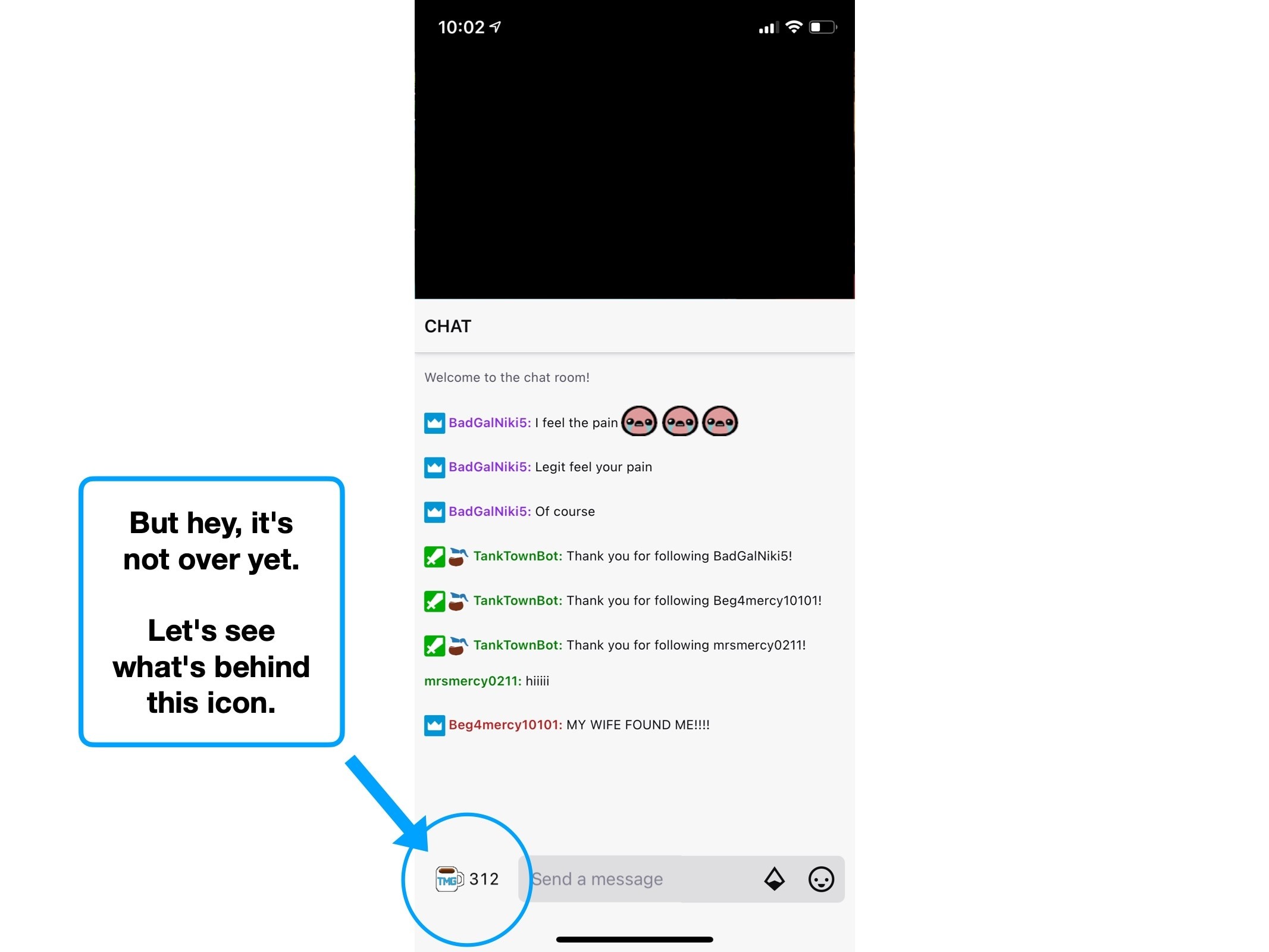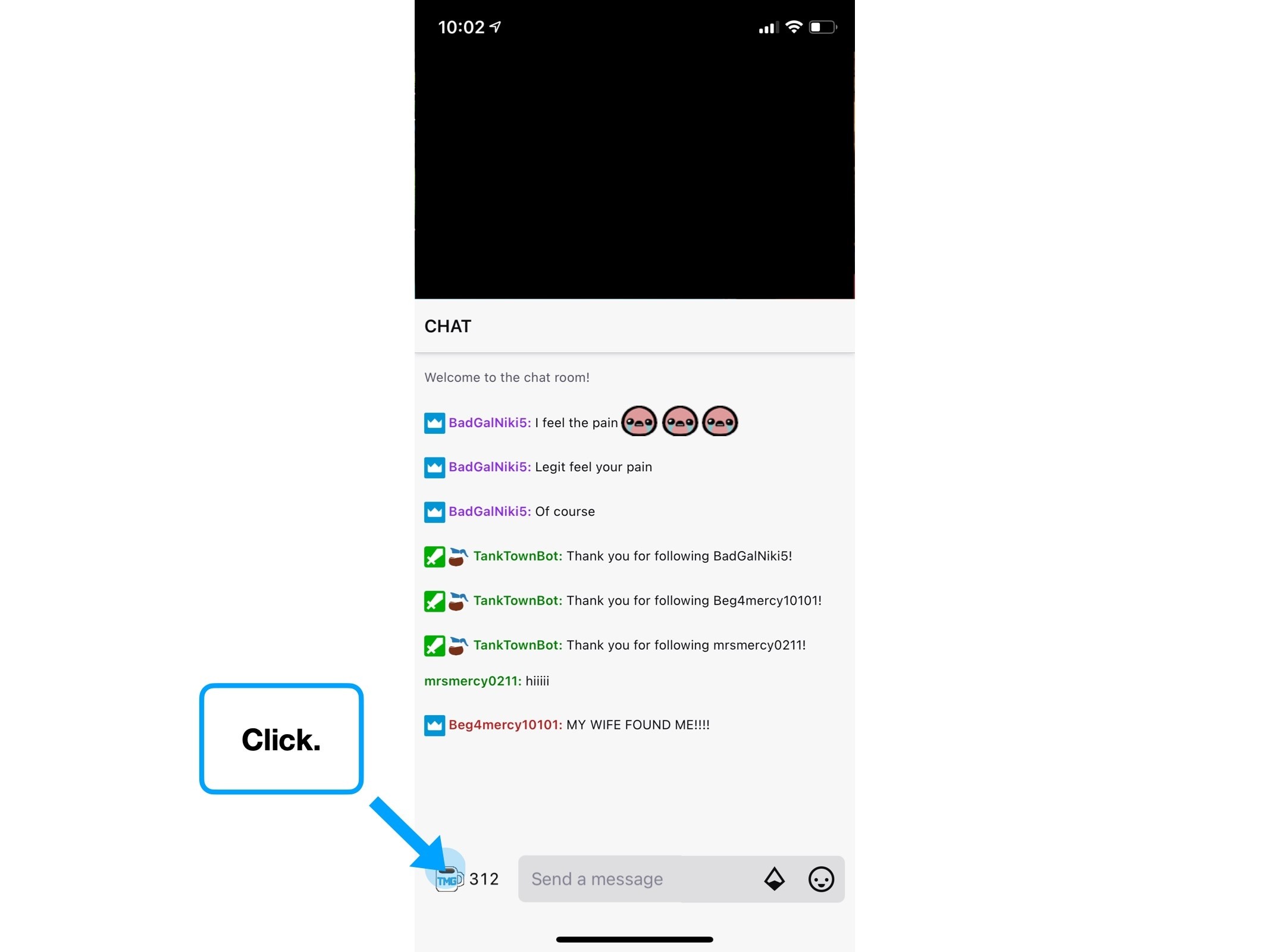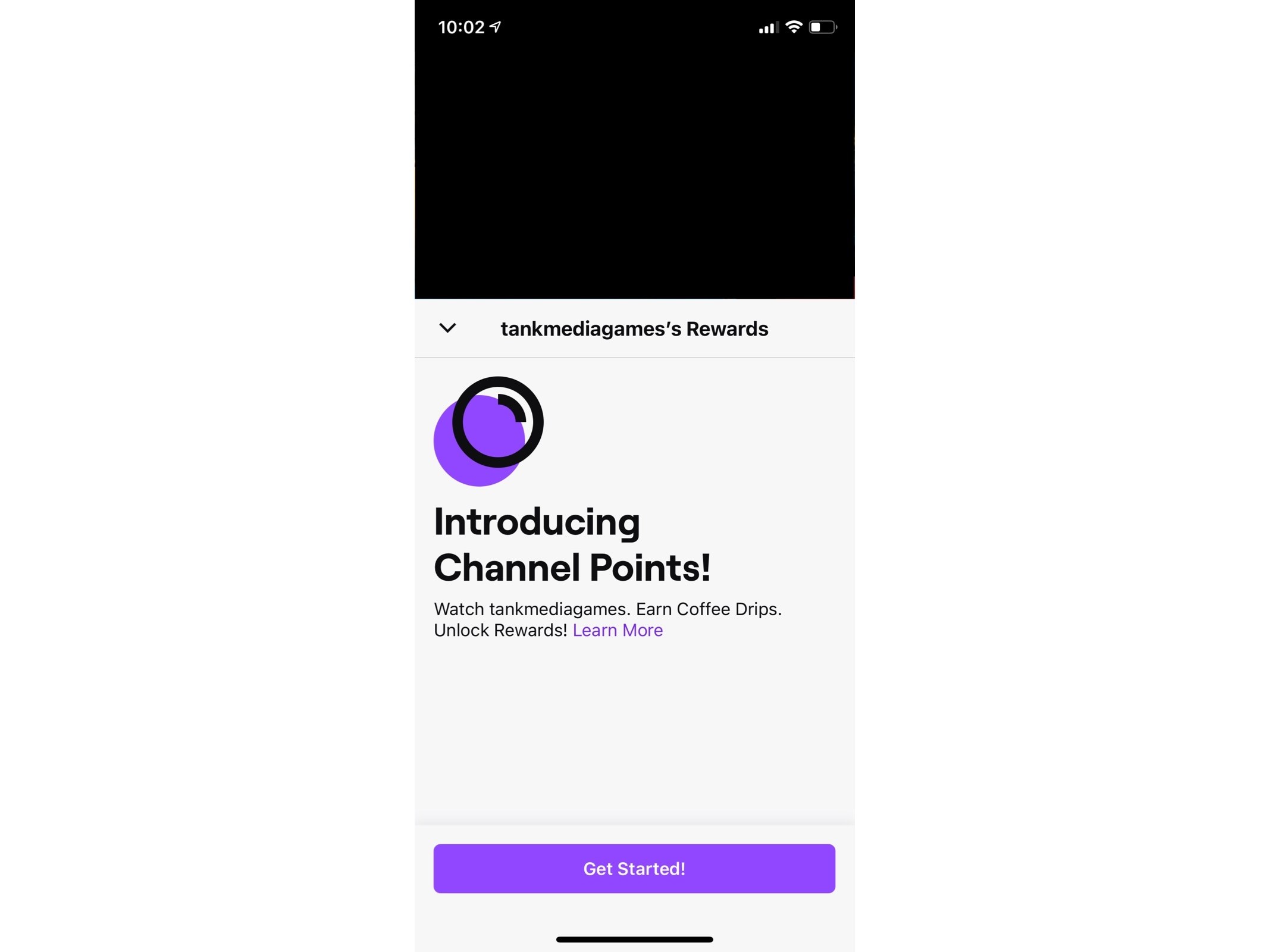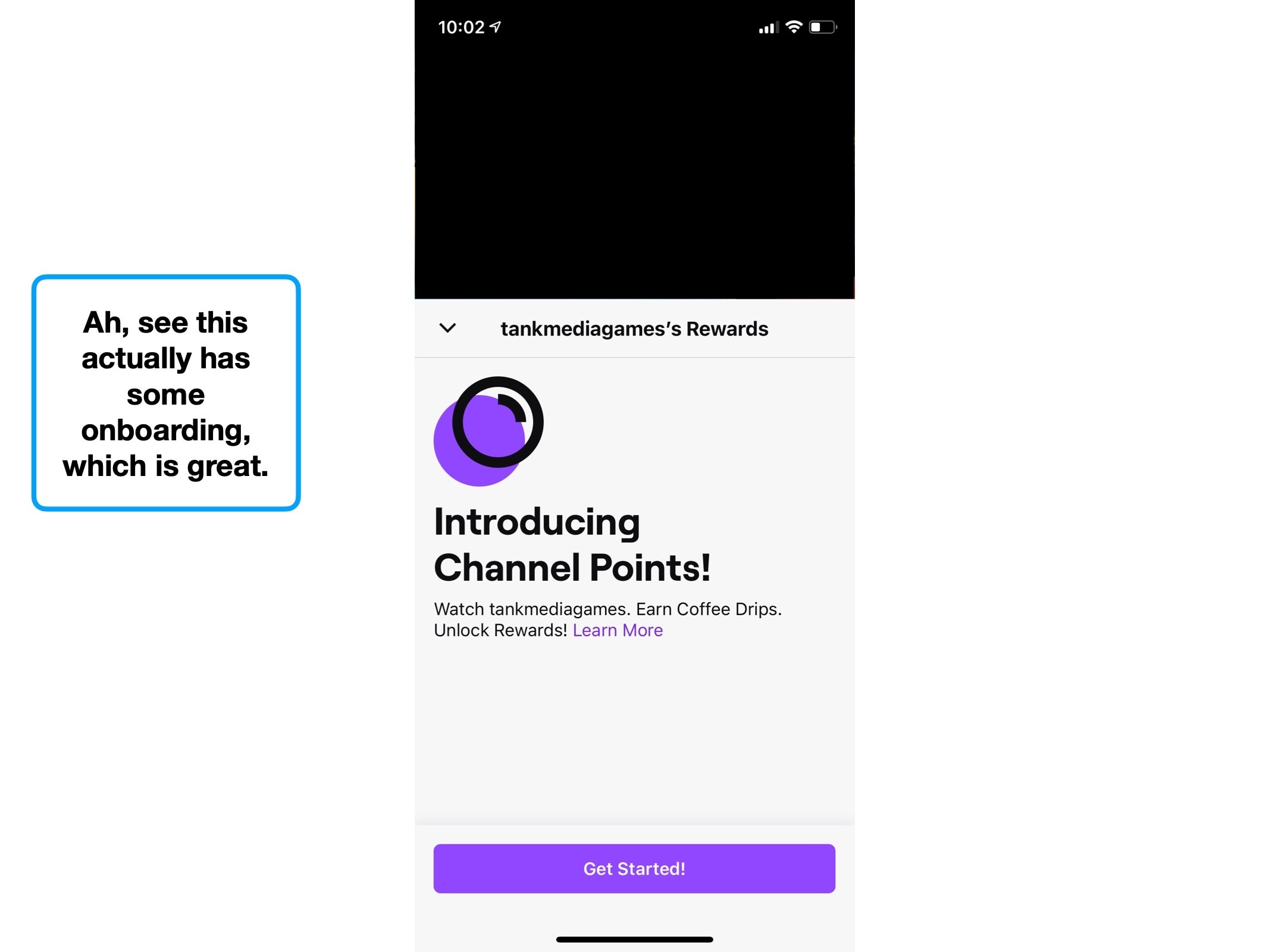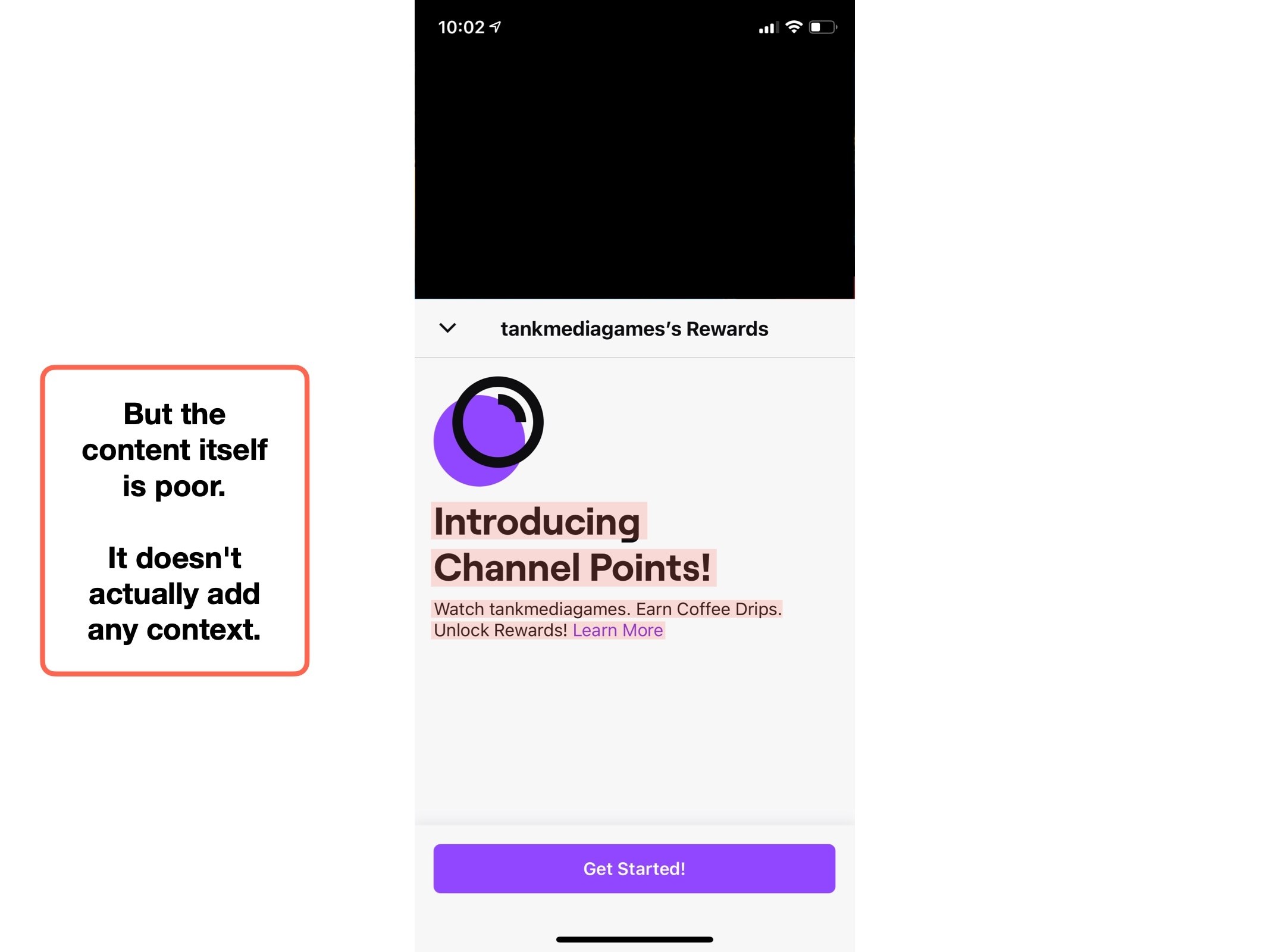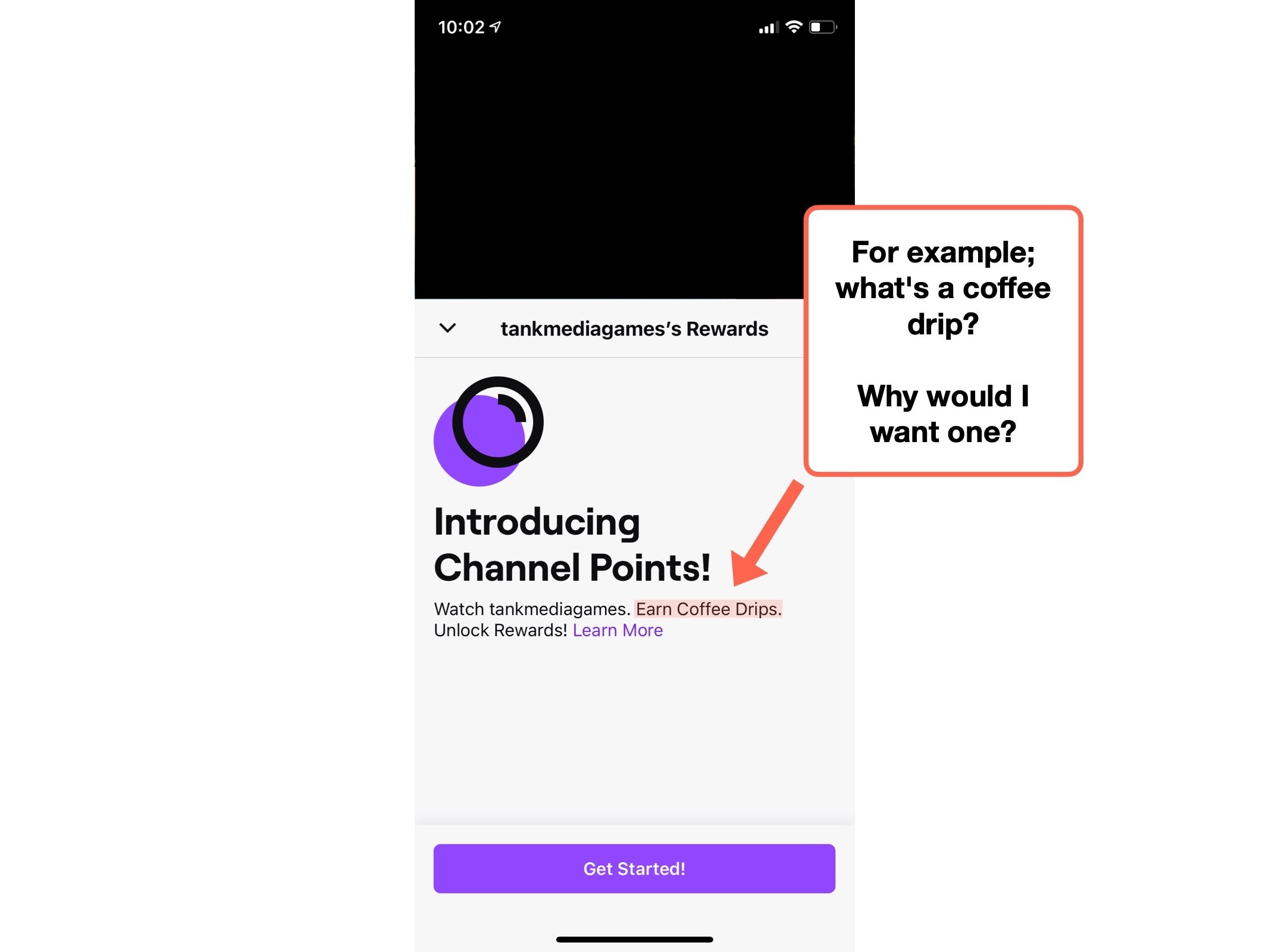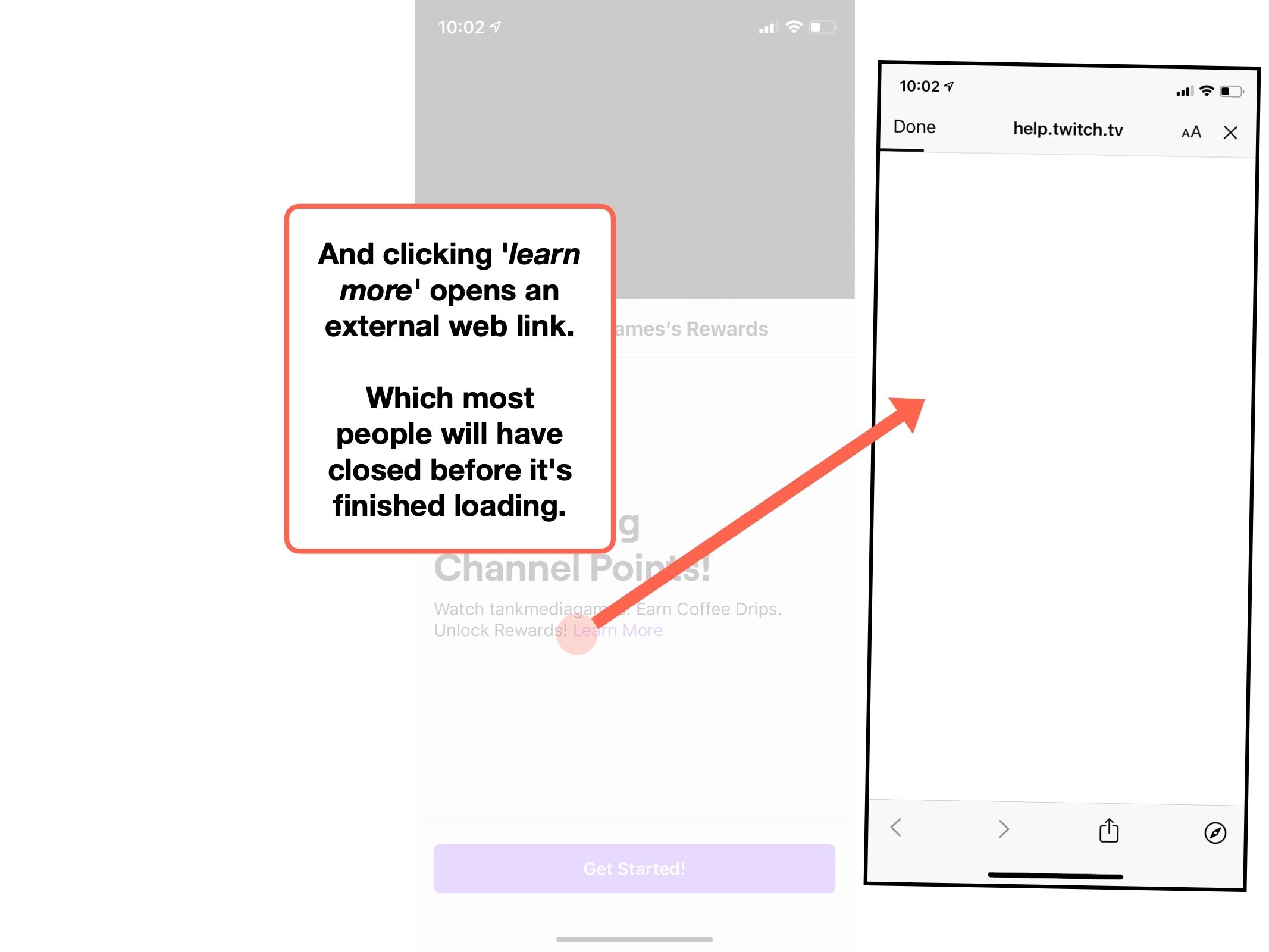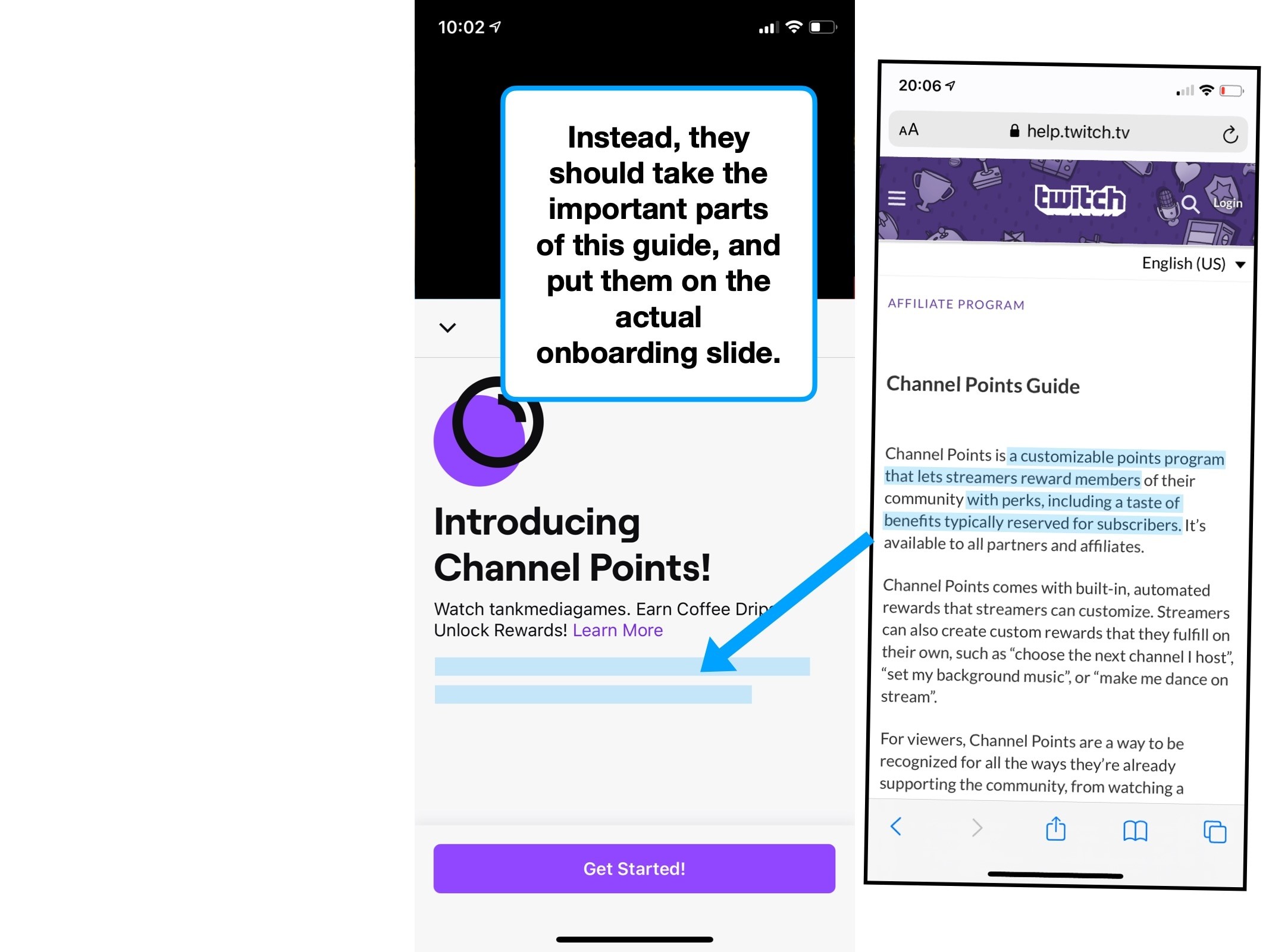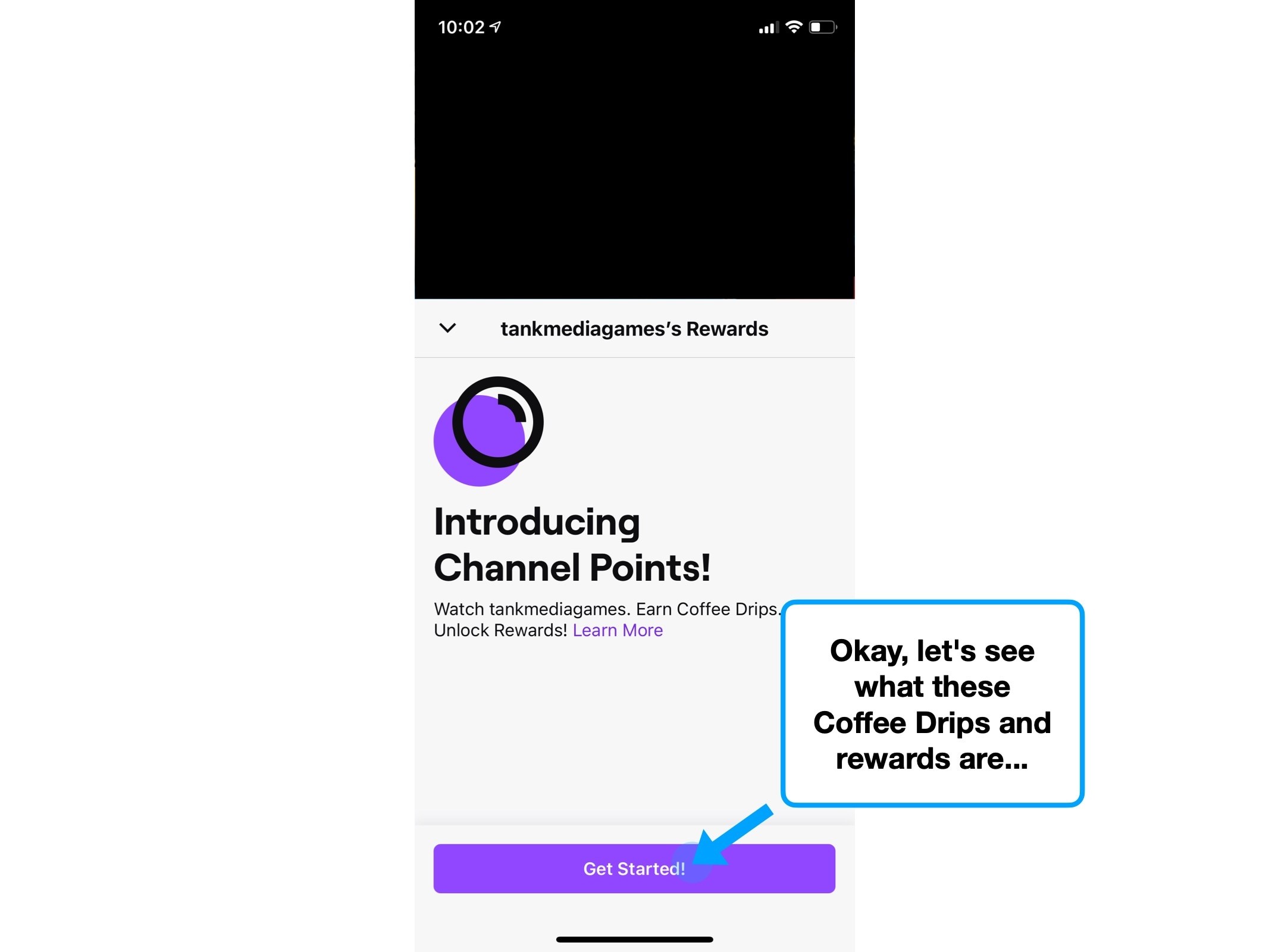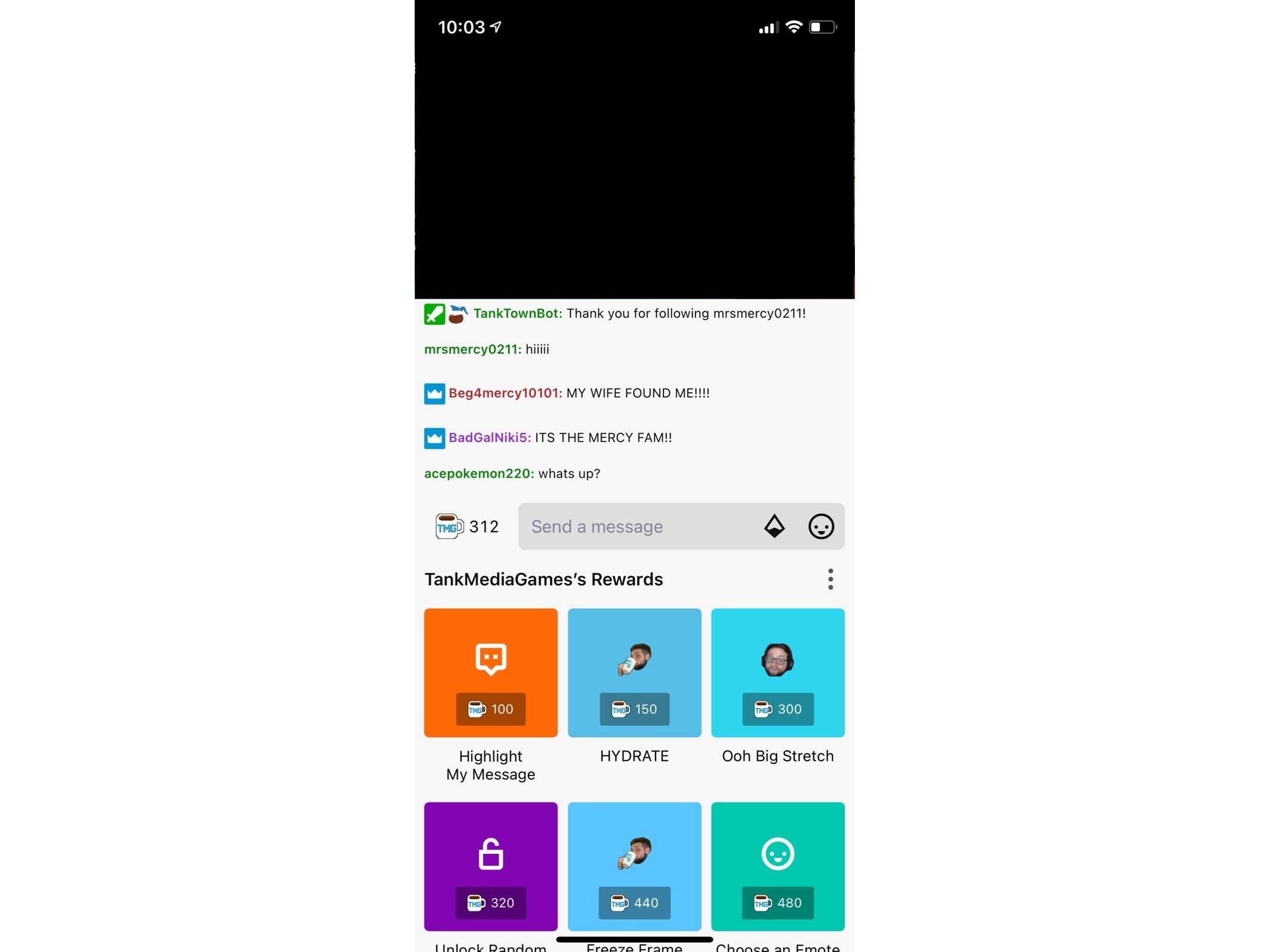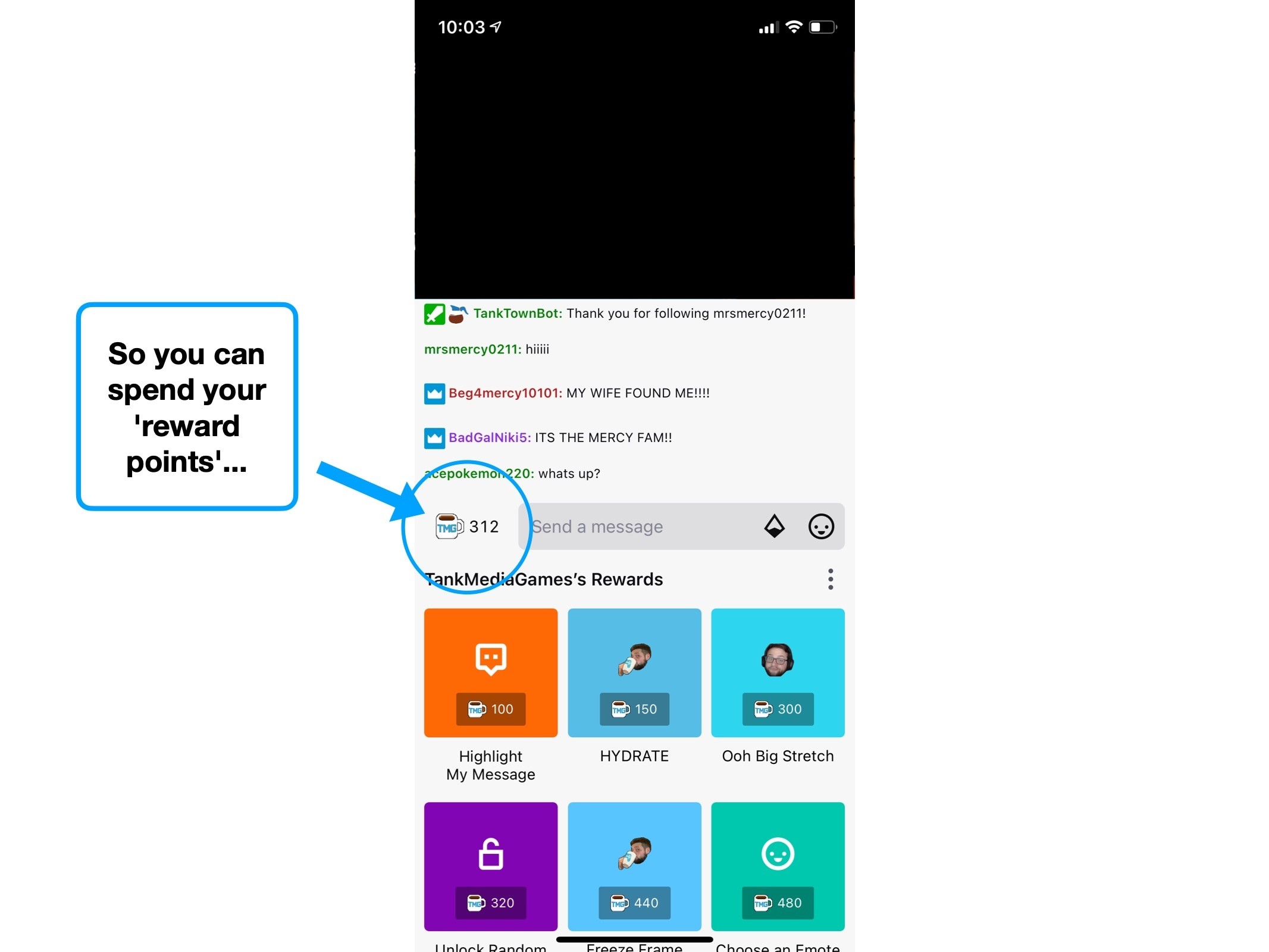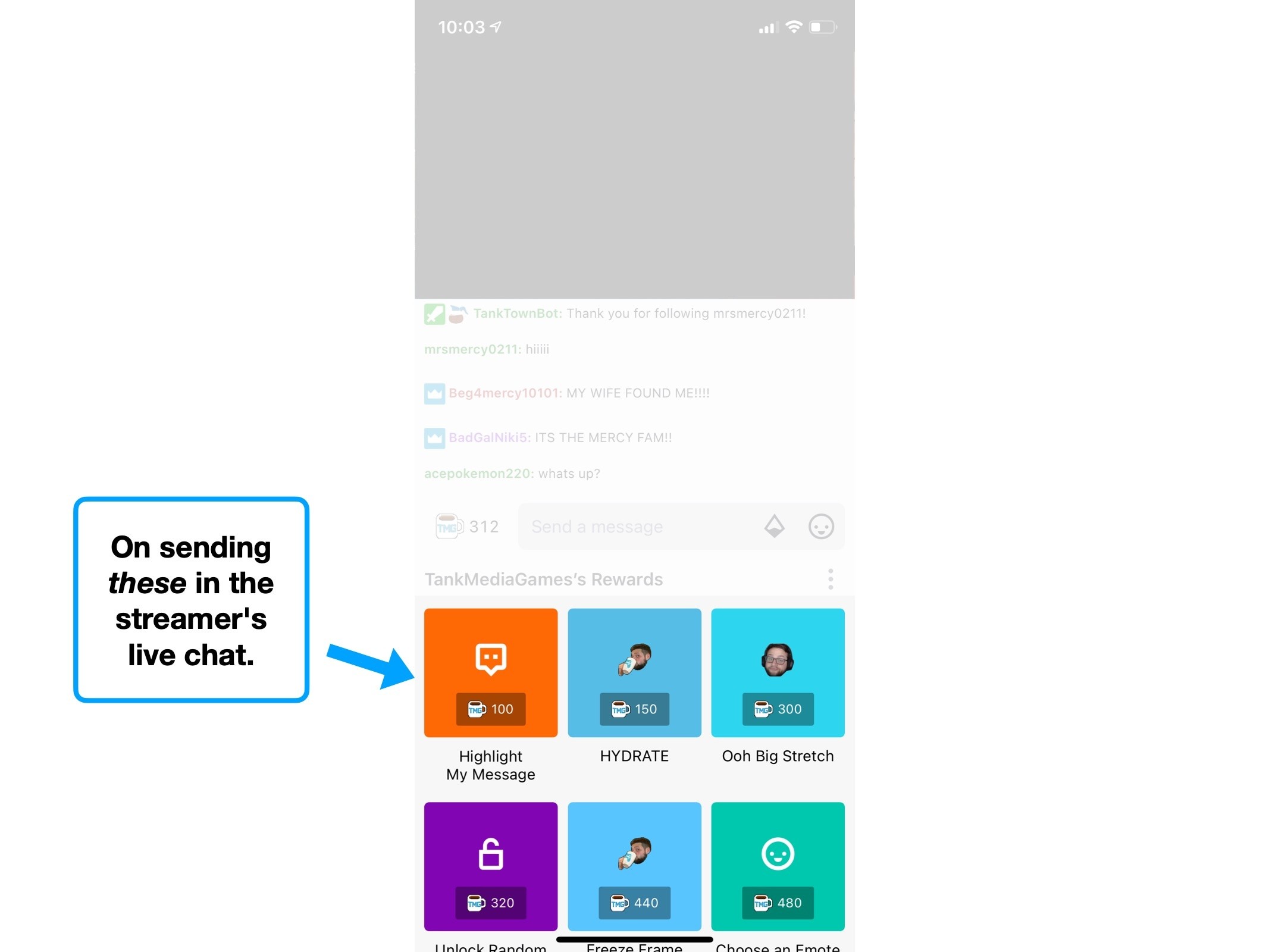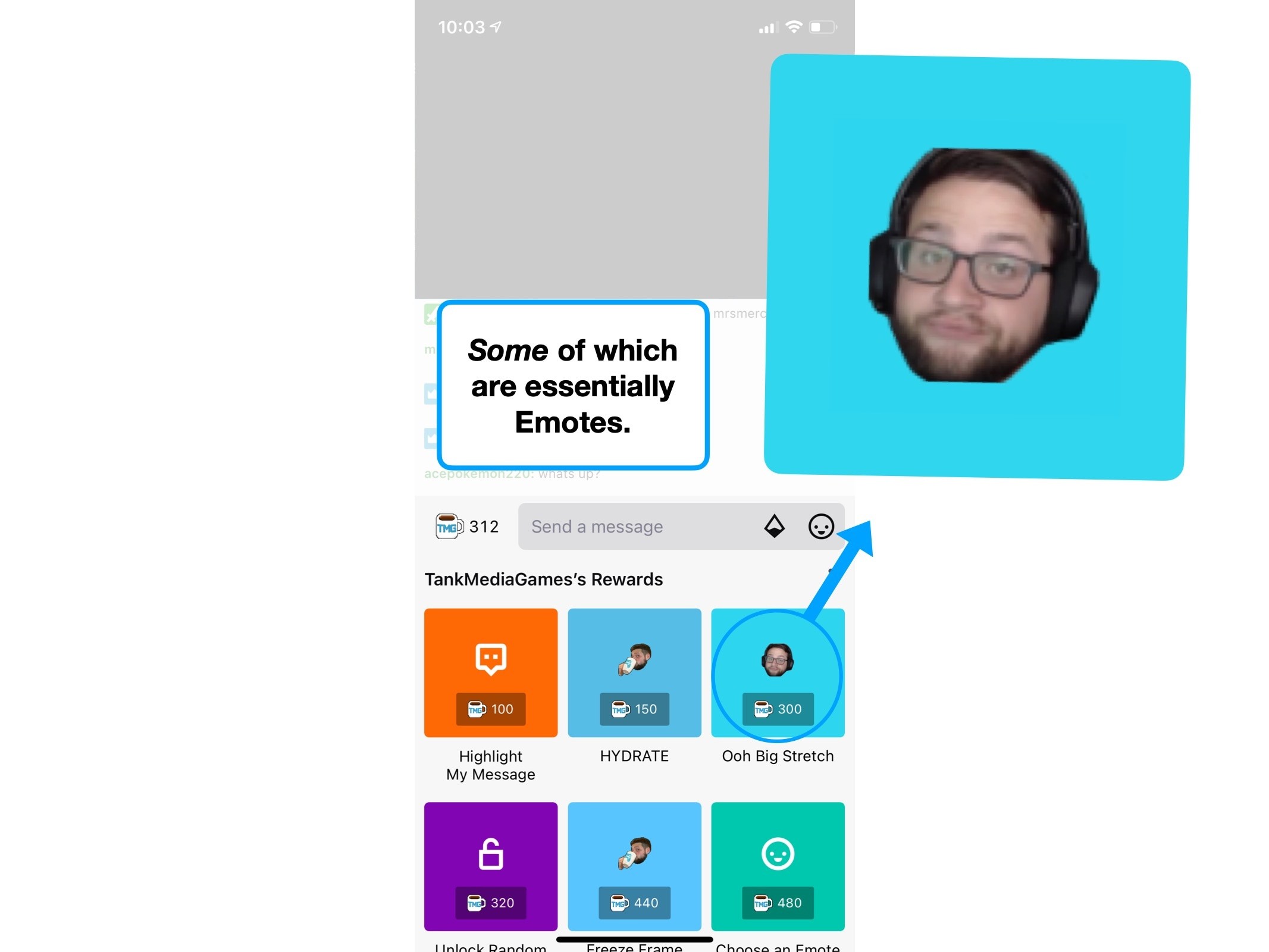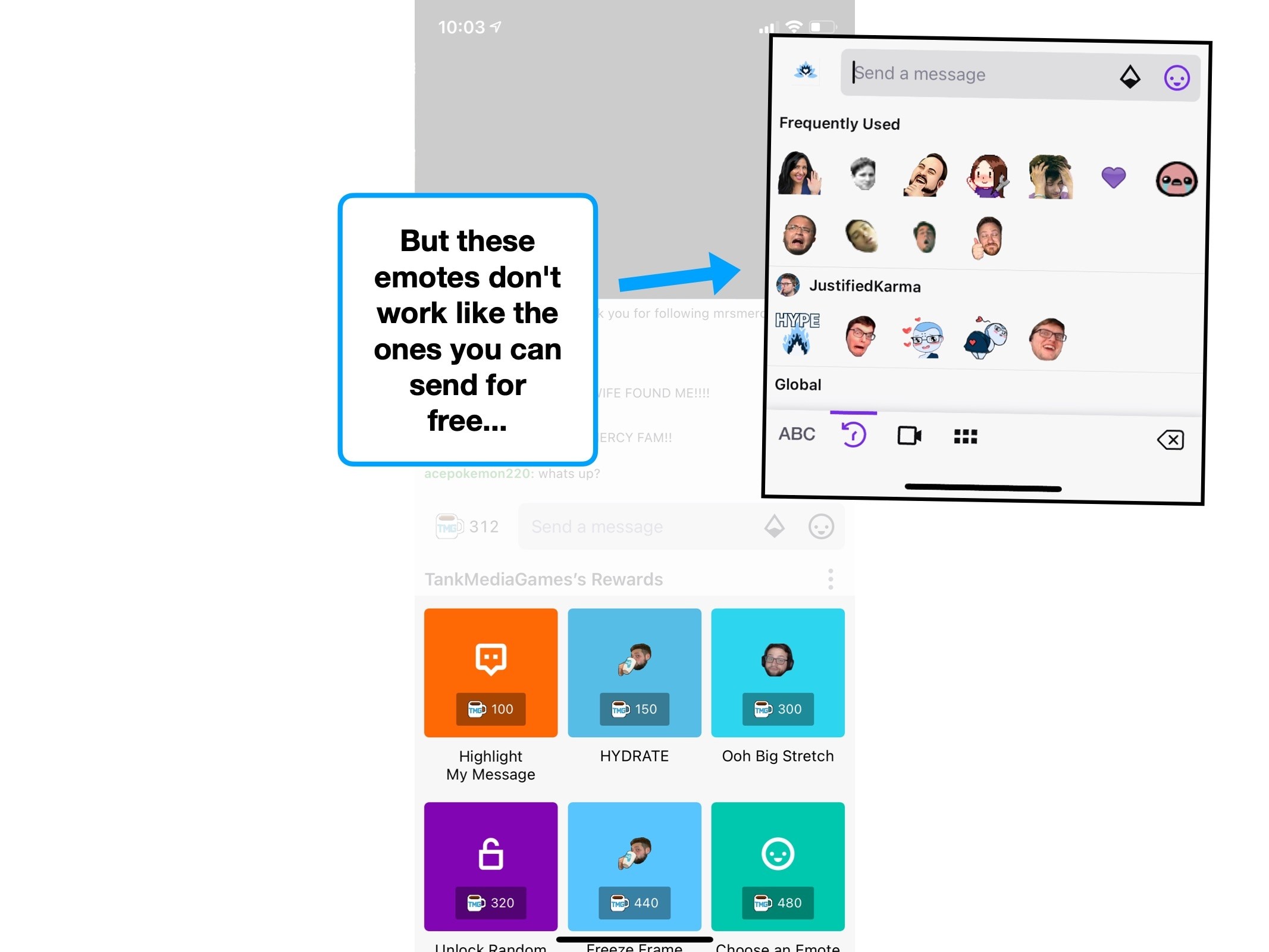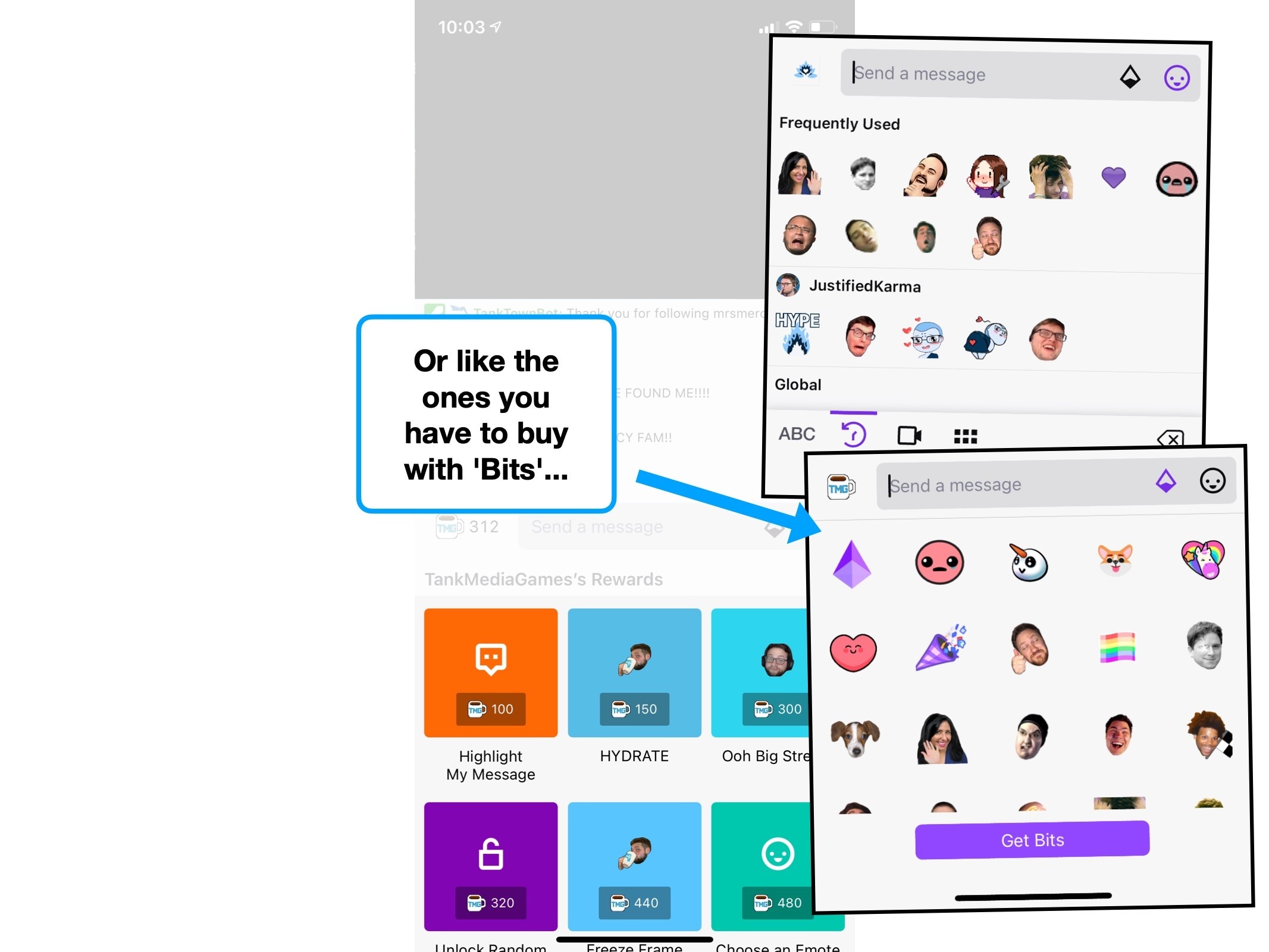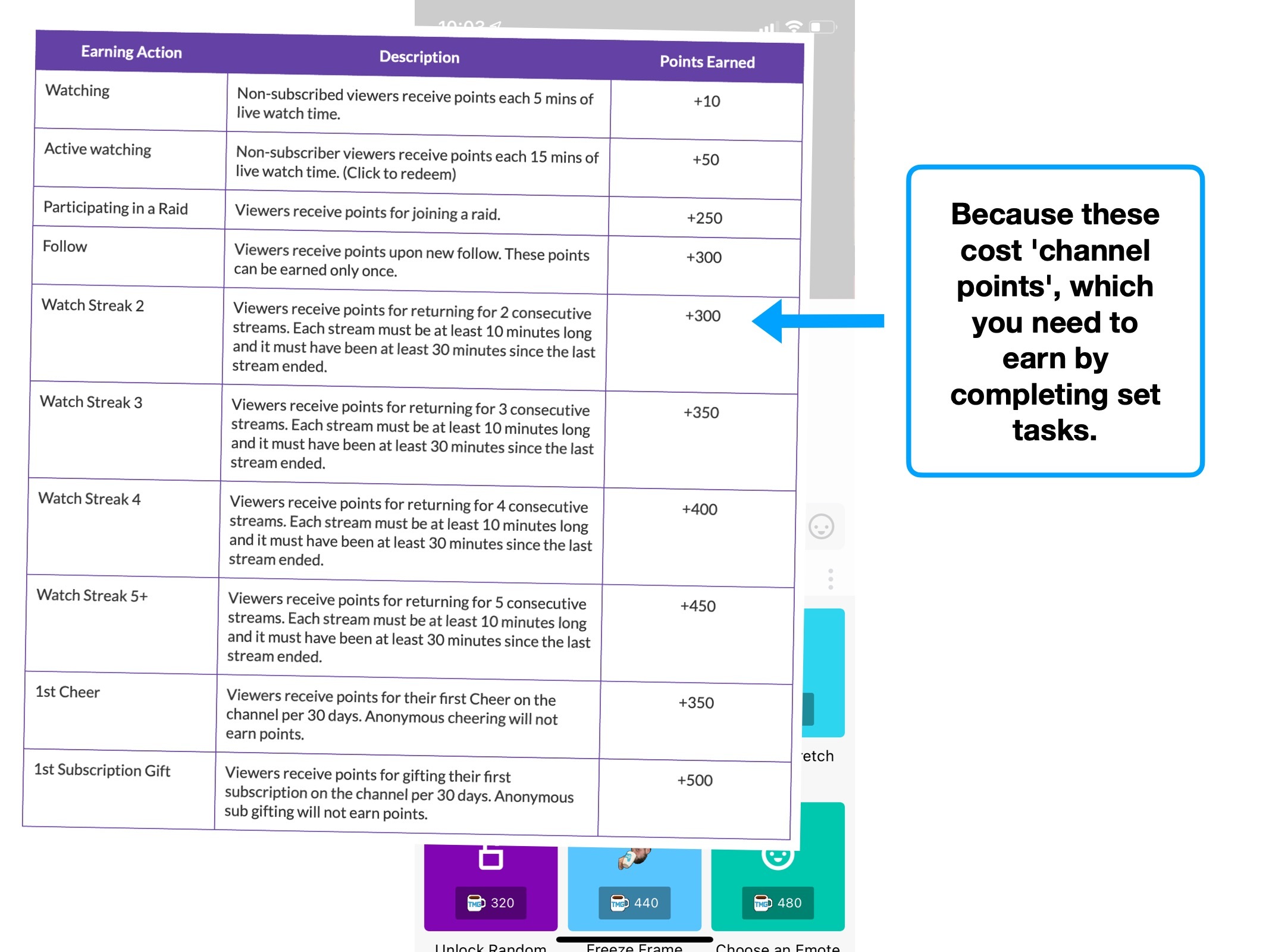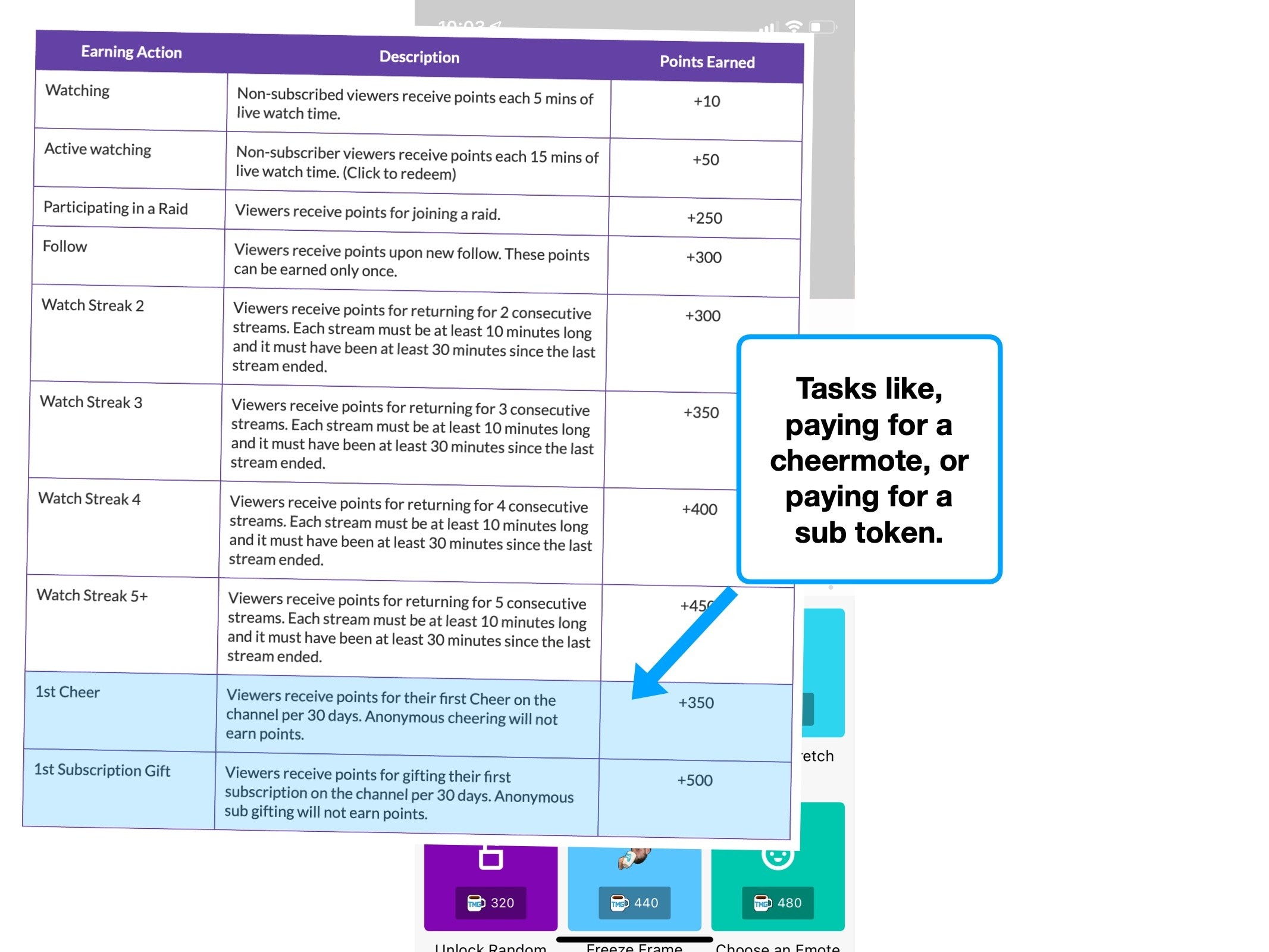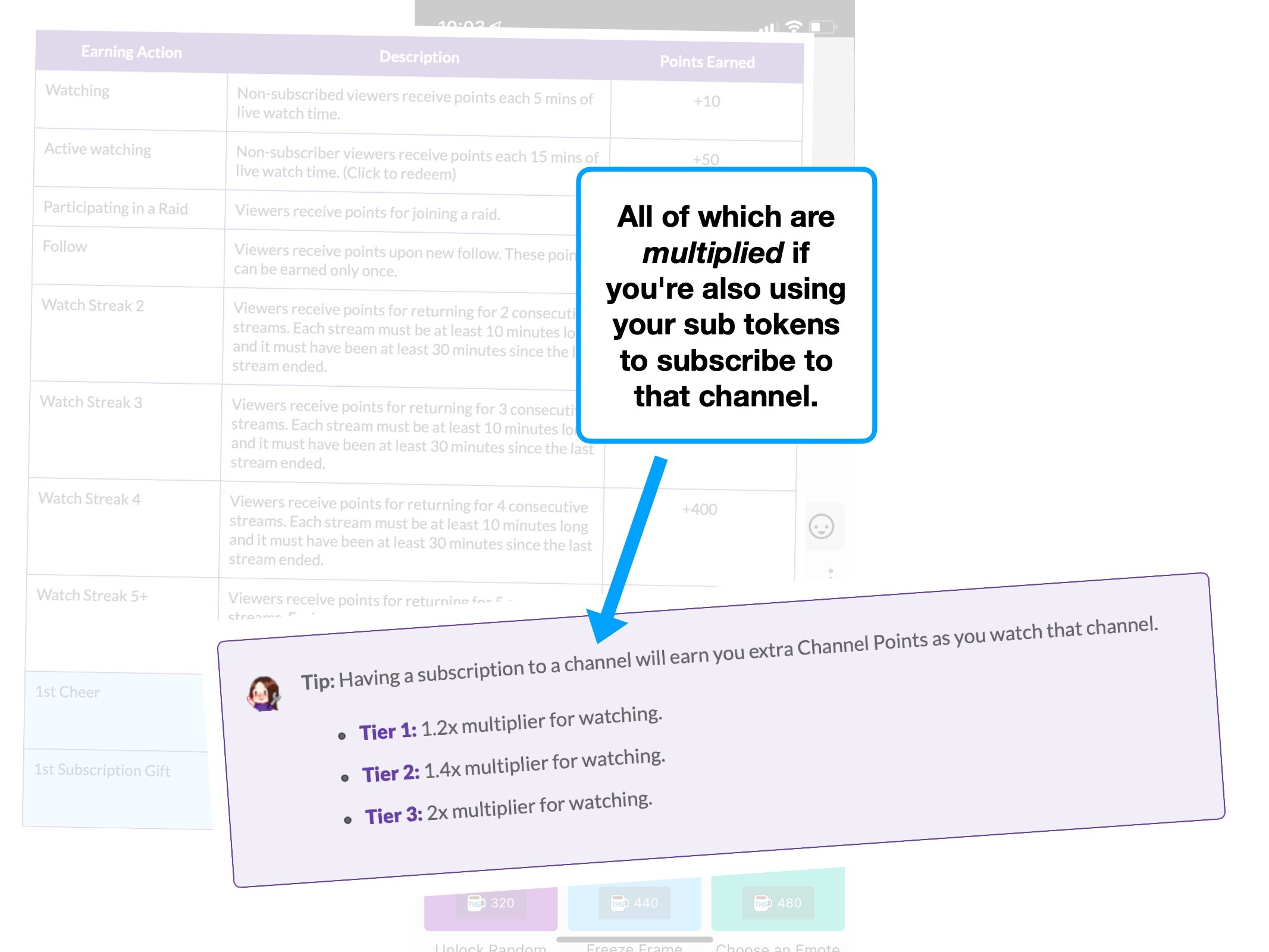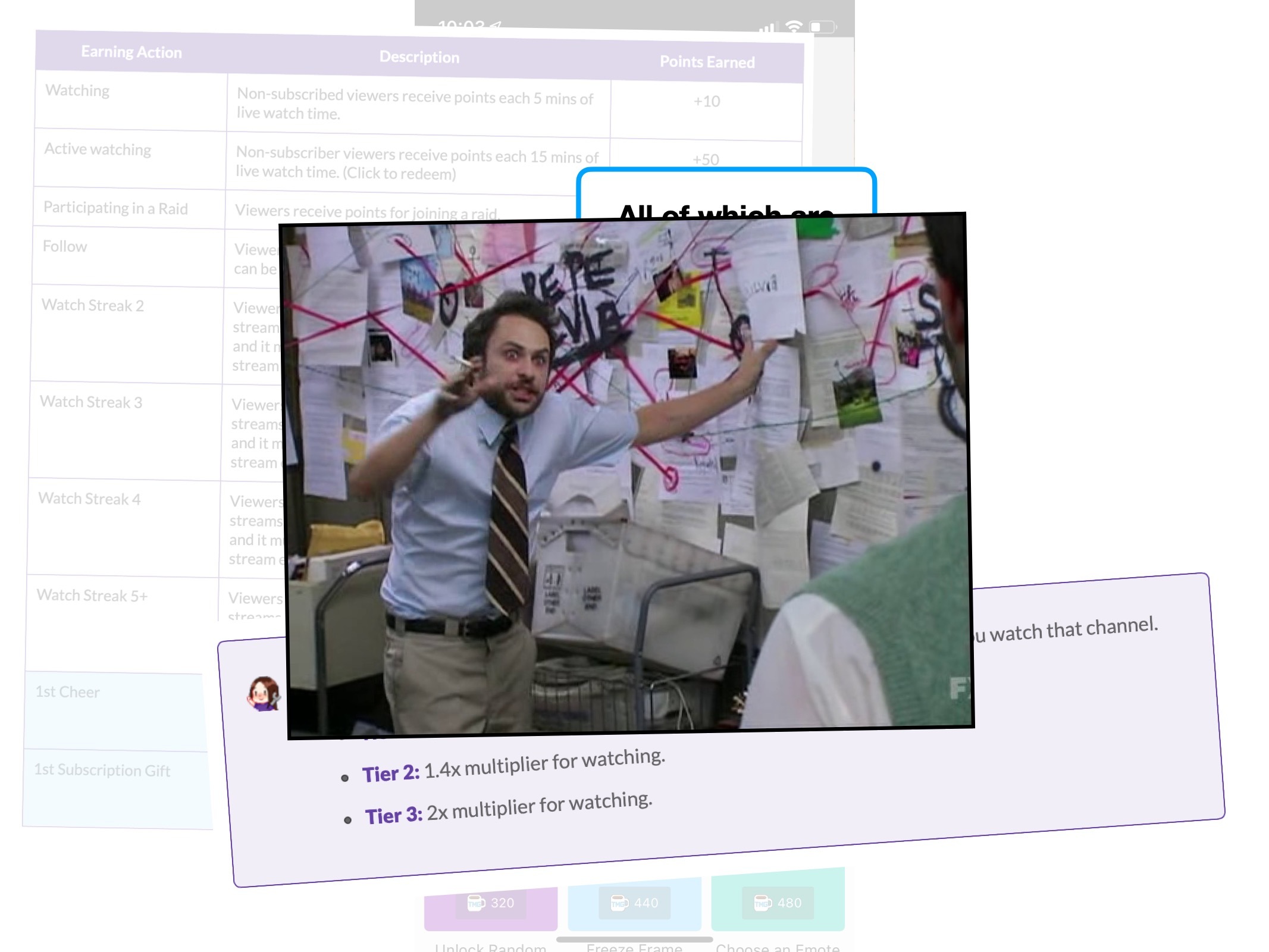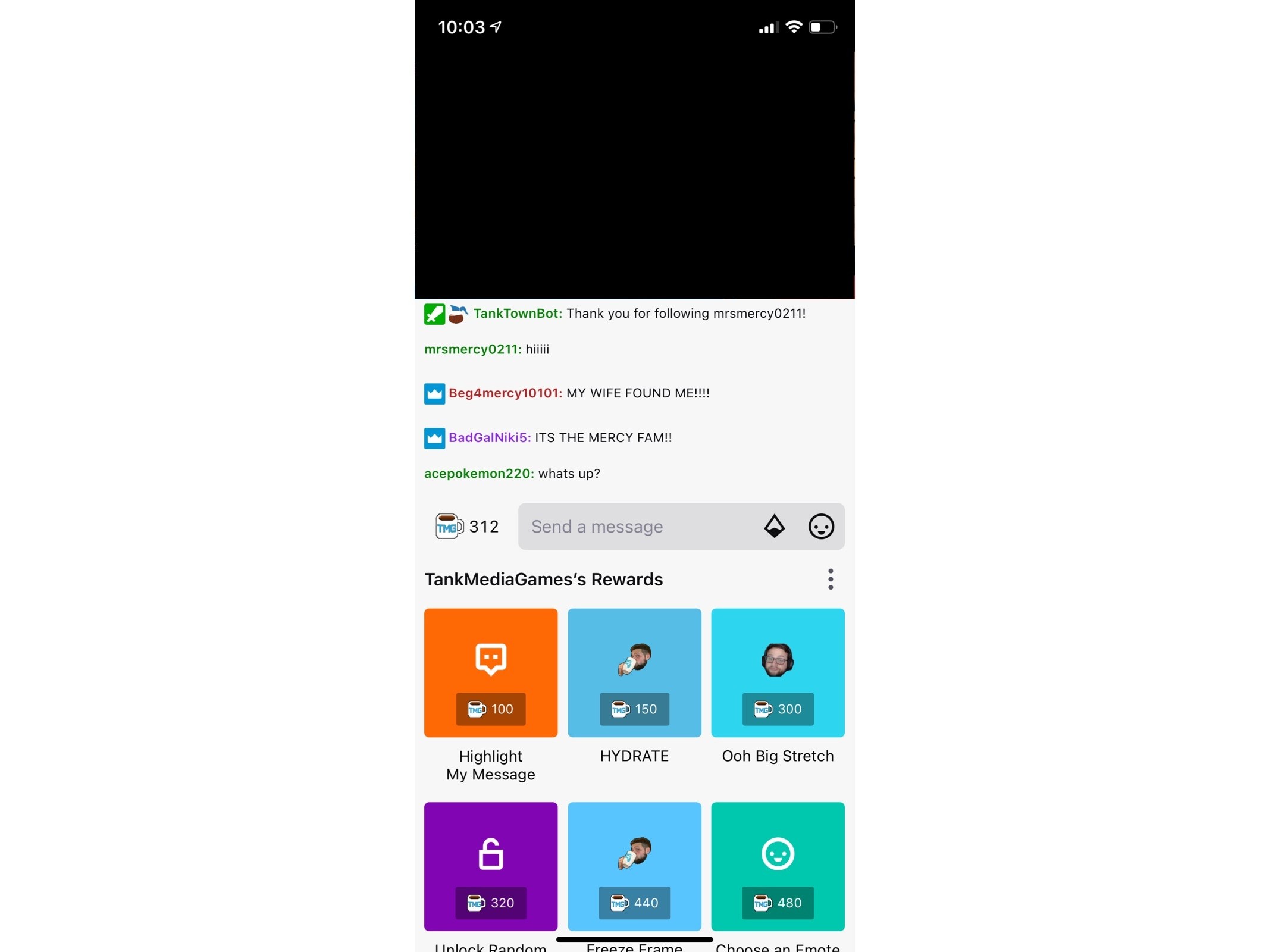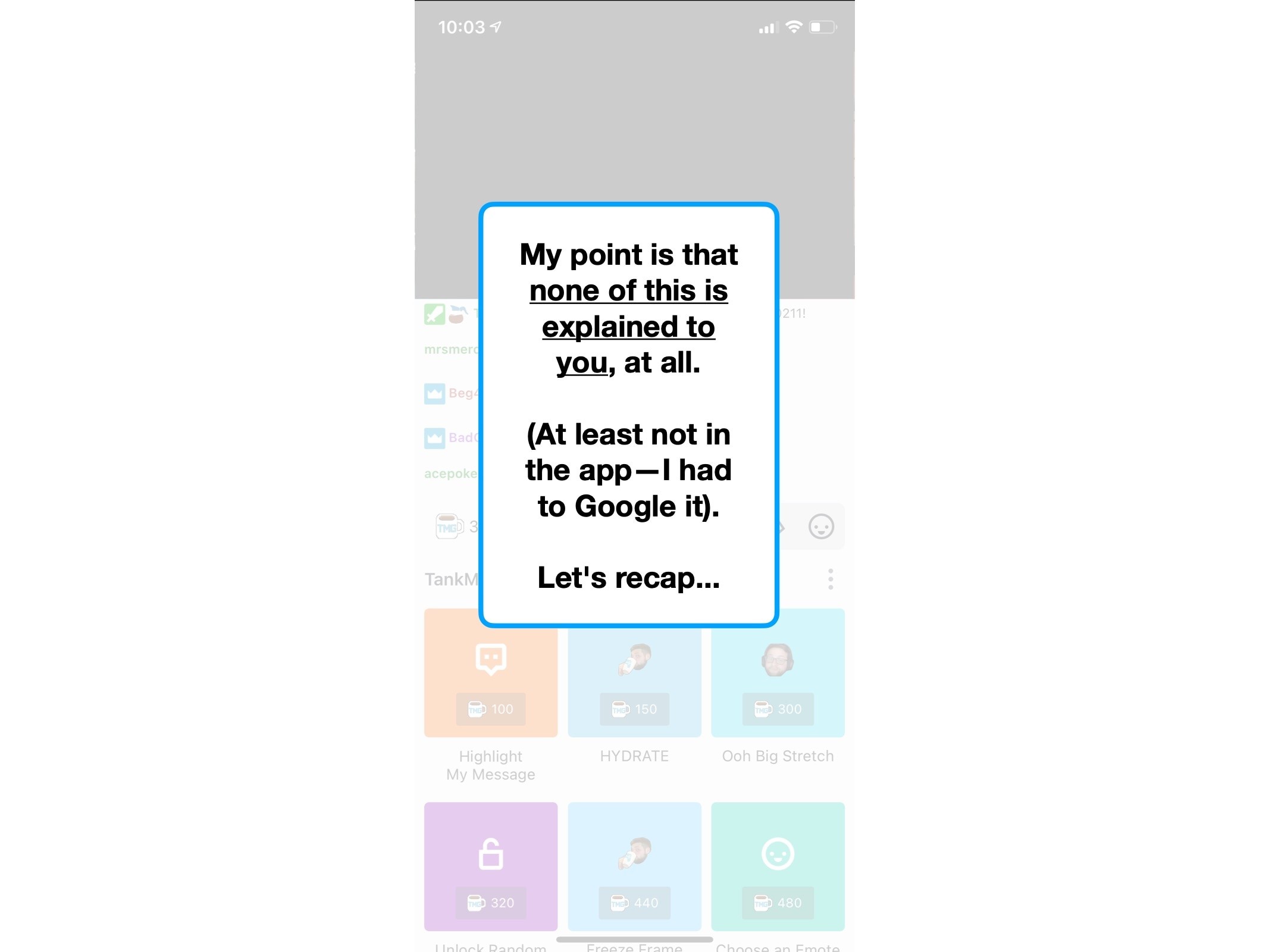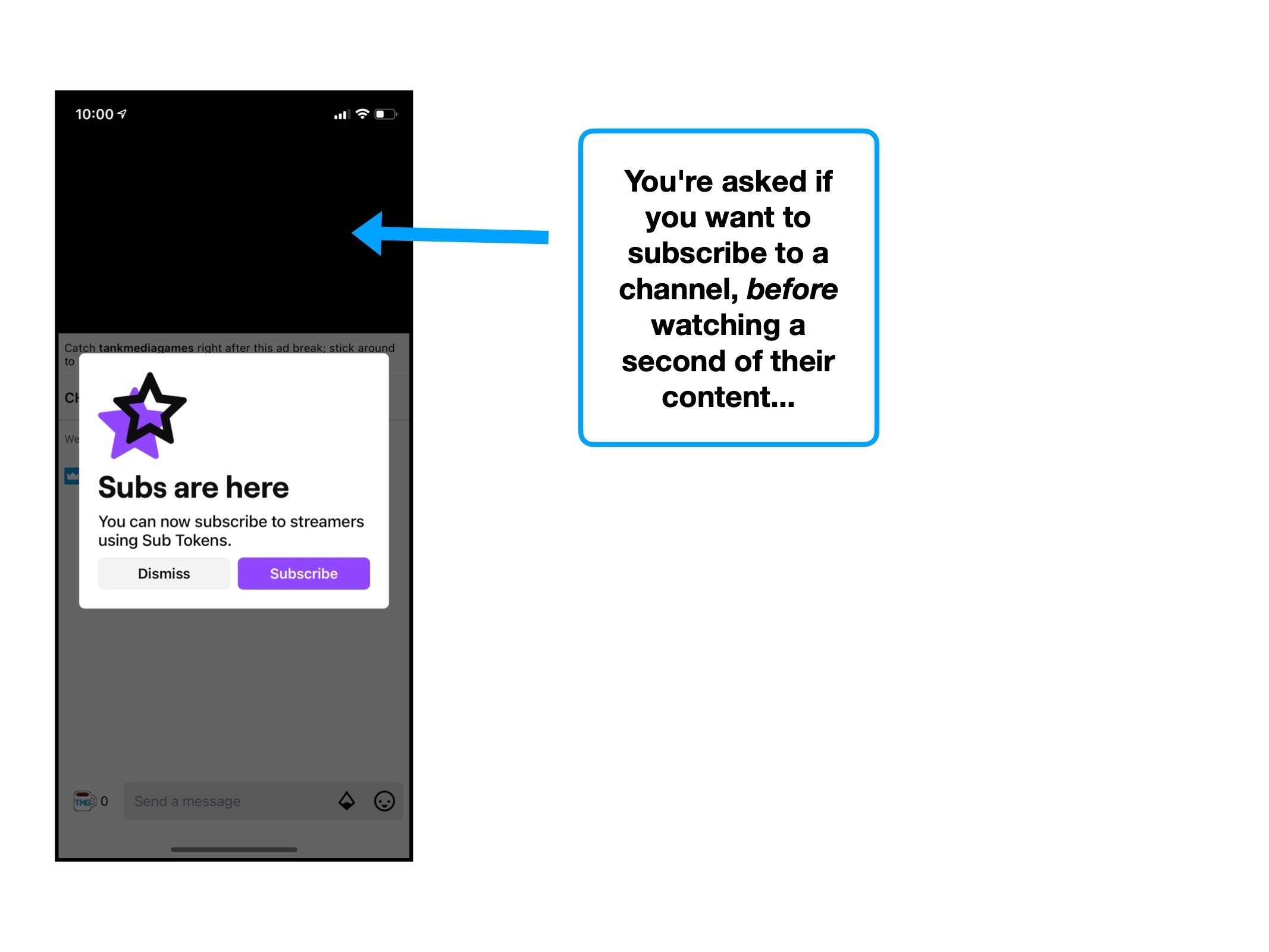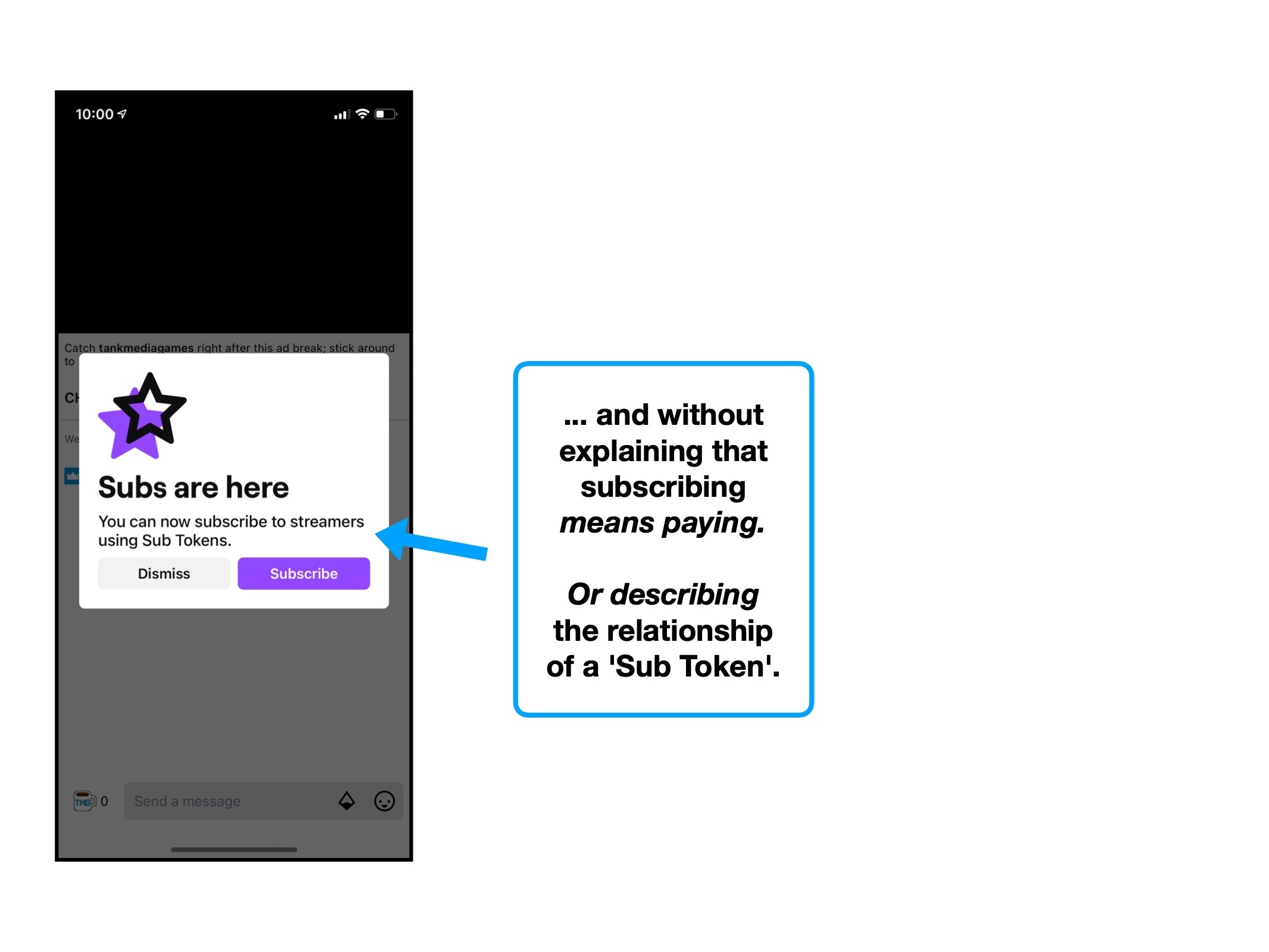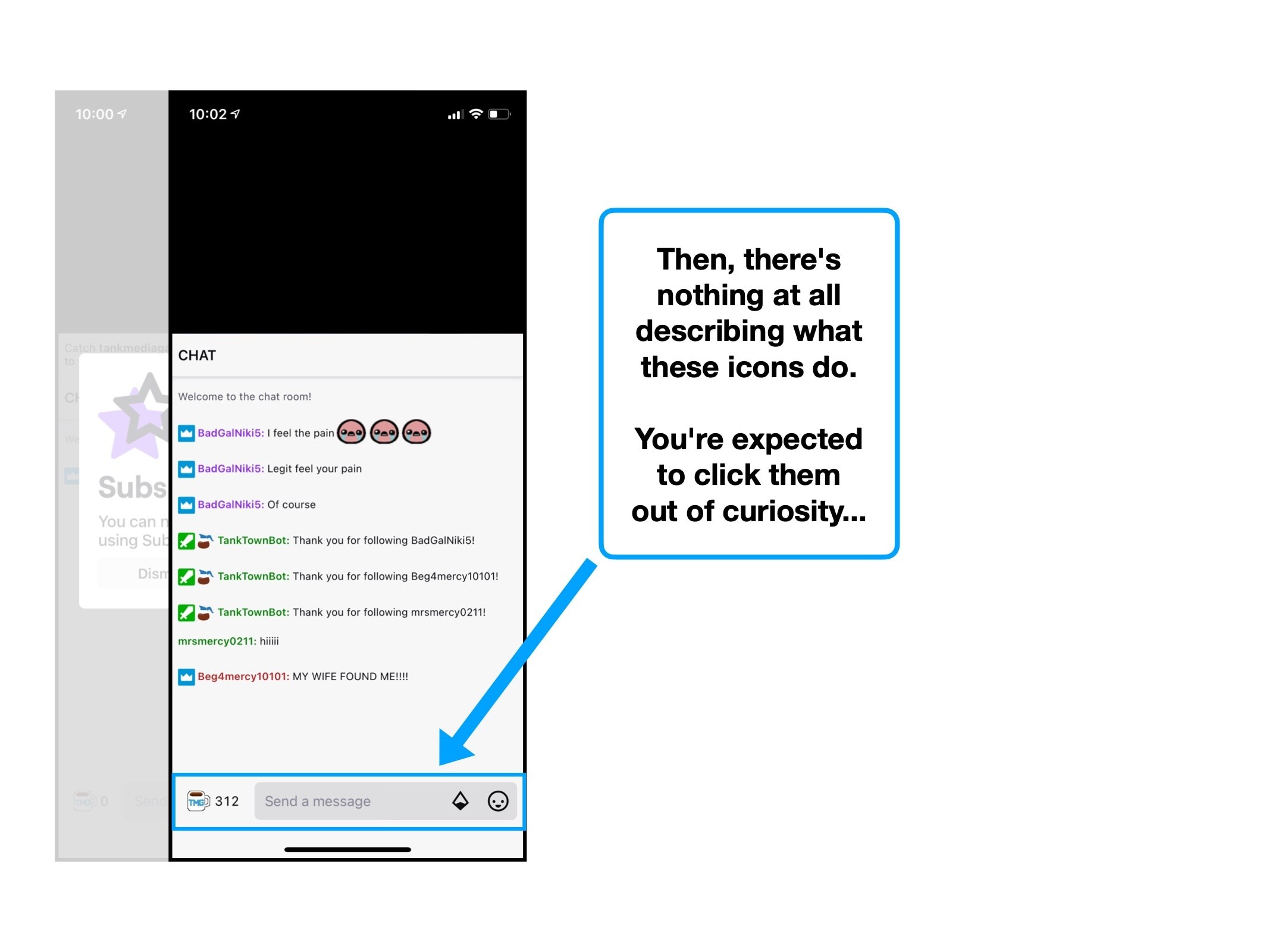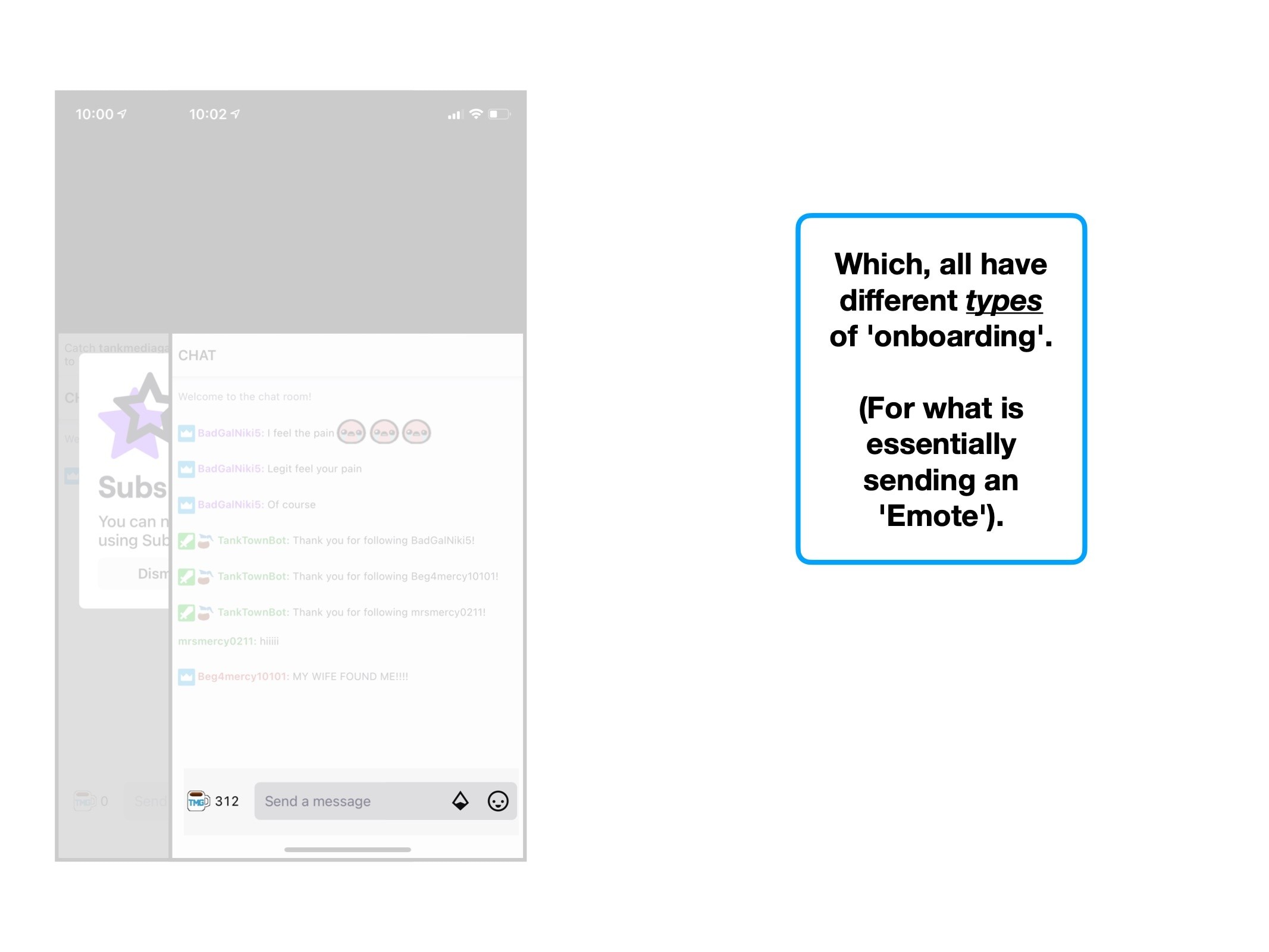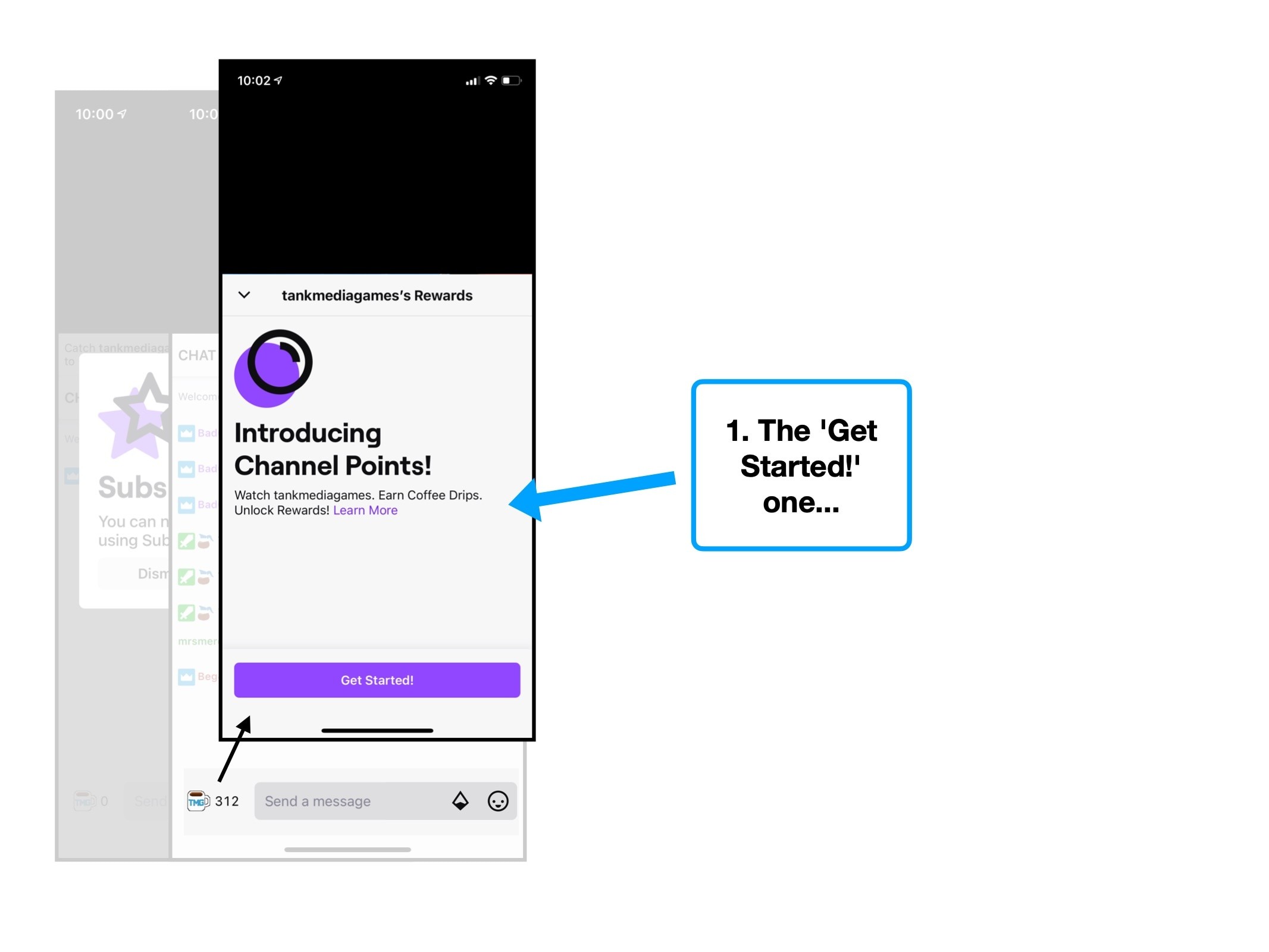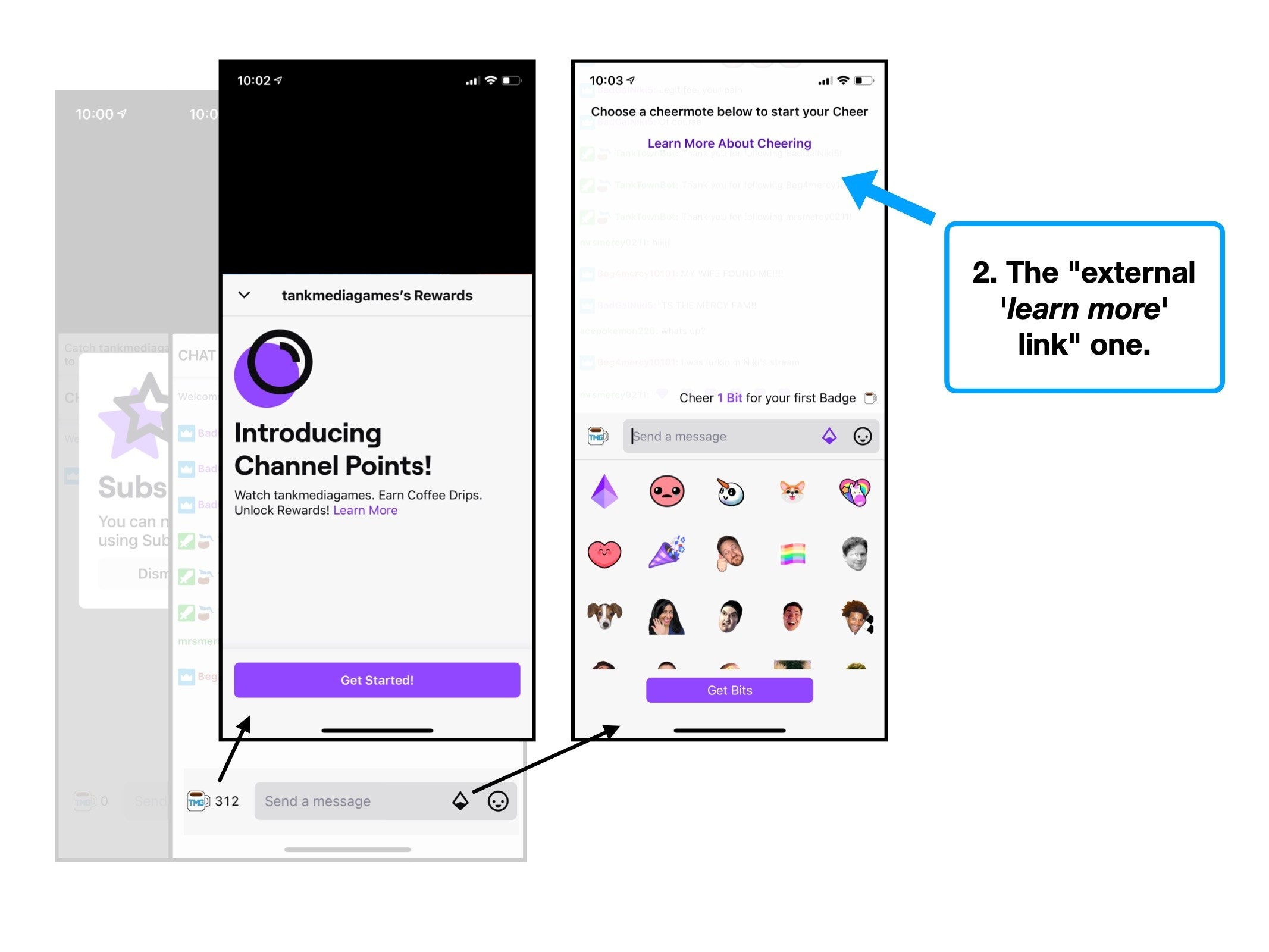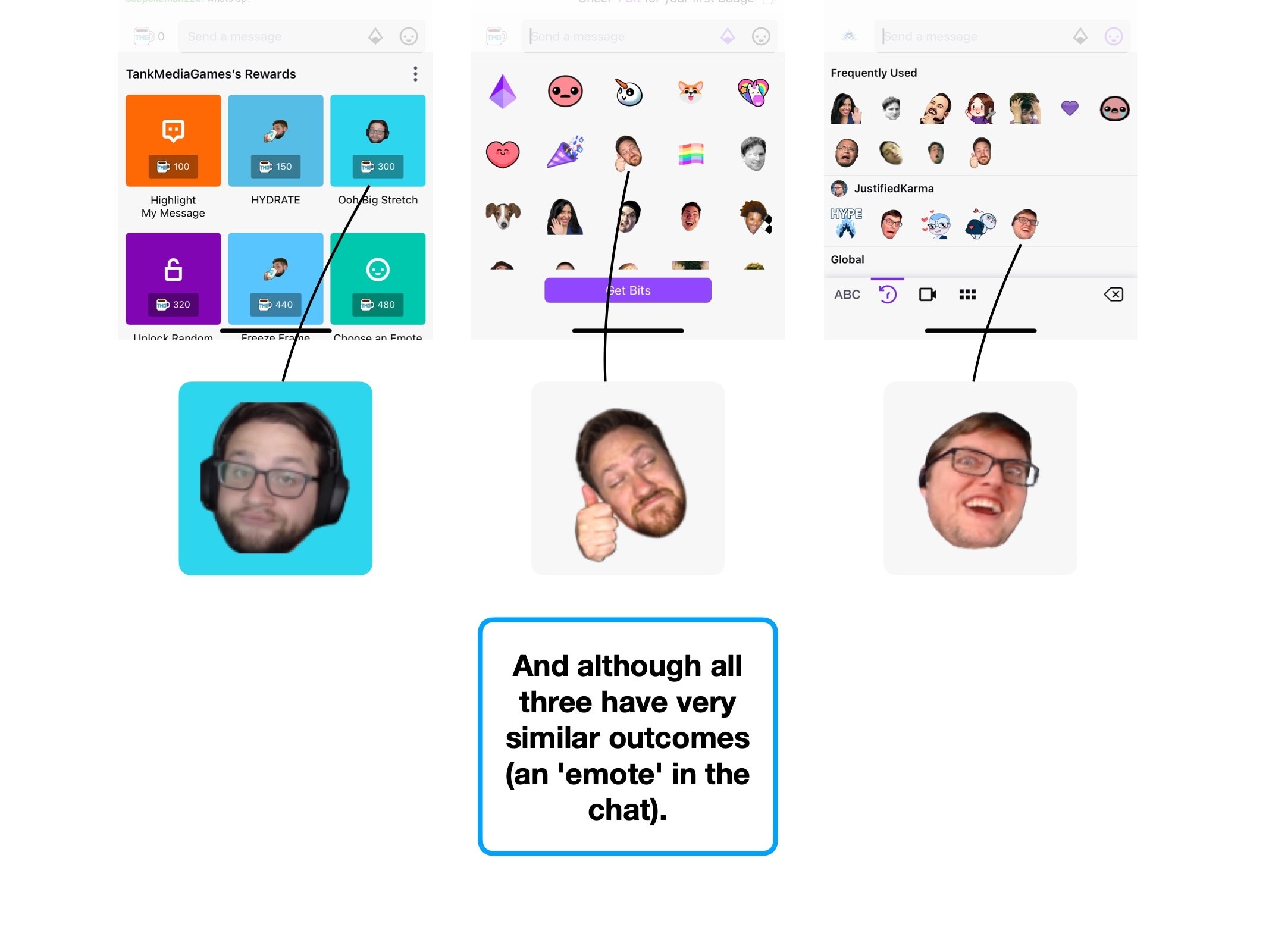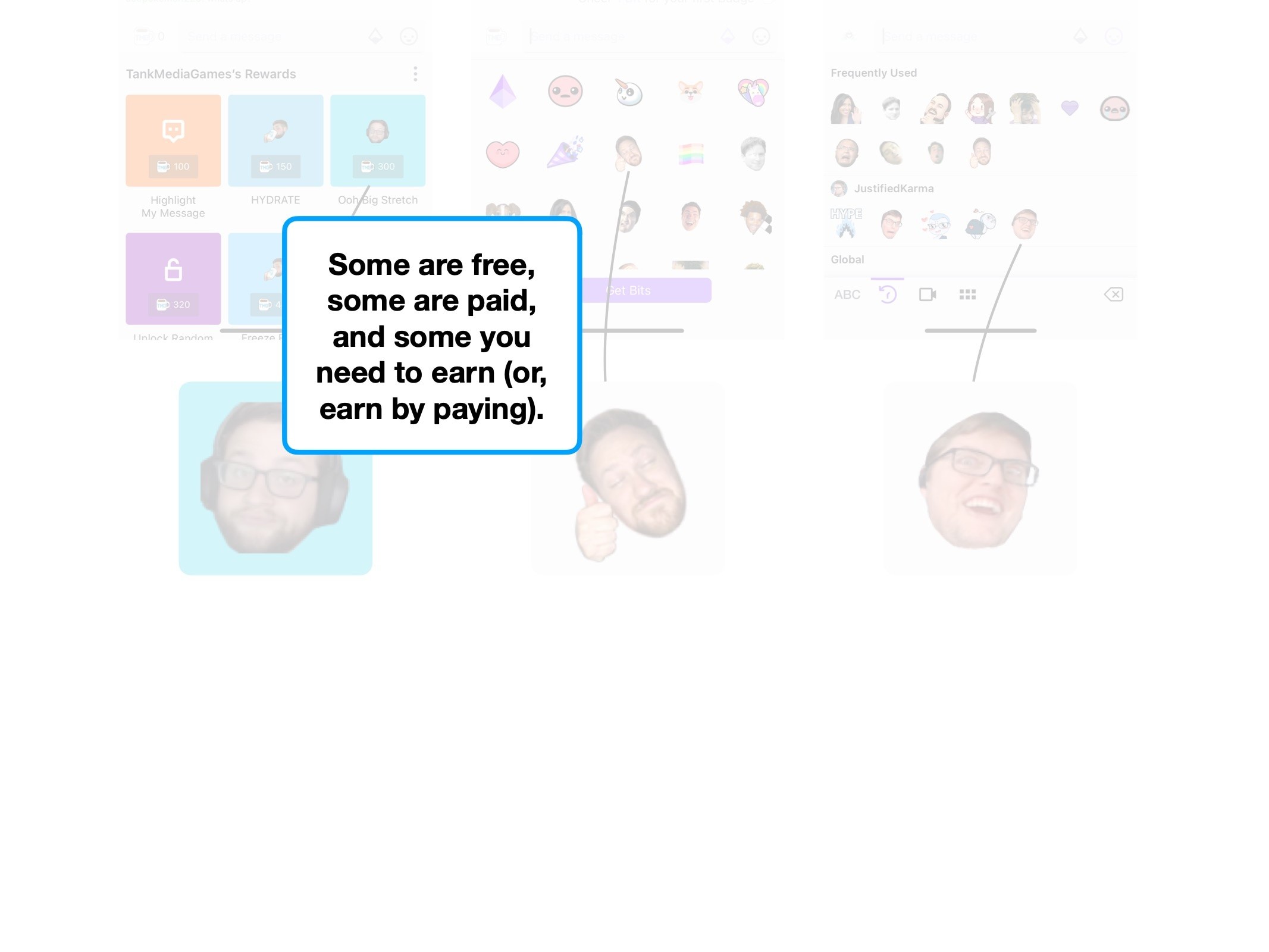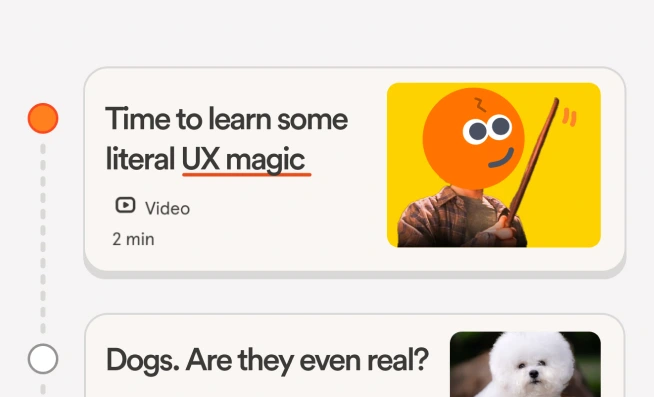Is monetisation killing Twitch?
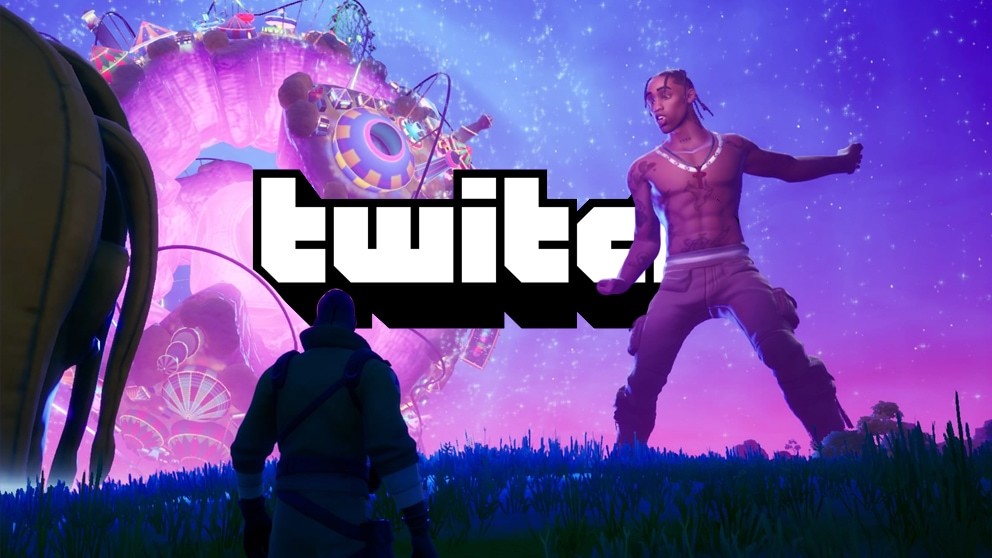
After Amazon acquired Twitch—the video game streaming service—for nearly a billion dollars in 2014, it was obvious how important monetising the service would be.
Because as YouTube have demonstrated, monetising video content can be tough. Particularly when people can install a free AdBlocker in a few clicks.
Often the pursuit of revenue comes at the cost of poor UX. For example, ads almost always worsen the user experience.
So how does Twitch make money? And more importantly, do these revenue streams make the experience worse?
Summary
💵
How Twitch is similar to a fairground operator
⚓️
An example of the Anchor Effect
🪴
De-risking decisions in CTAs
🗺
When to use self-discovery onboarding
4 key takeaways
1. A pocket full of change
Fairground operators want their attendees to have disposable income (coins) in their pockets, as it’s psychologically easier to spend coins of lower value, than notes of higher value.
i.e., how many people would break into a $100 bill to play a coconut shy?
One way to increase the amount of ‘spare change’ circulating in their park would be to price the admission at something like £10.50. Often people will need to break into a larger note, and then they’ll have a guaranteed £9.50 burning a hole in their pocket.
It’s a subtle trick which seldom works with digital payments, because spending money online—or via a debit card—doesn’t ever leave “change”.
But, it works brilliantly with platform-specific currencies, as those ‘coins’ are worthless in the outside world. i.e., you have to spend them in the ‘fairground’.
Twitch essentially does this on IOS, with their virtual currency ‘Bits’.
It’s unlikely a coincidence that the the second tier of Cheermote costs 100 bits, but you can only buy 95, or 245. This forces you to buy more ‘Bits’ than you need—creating a pocket full of digital change.
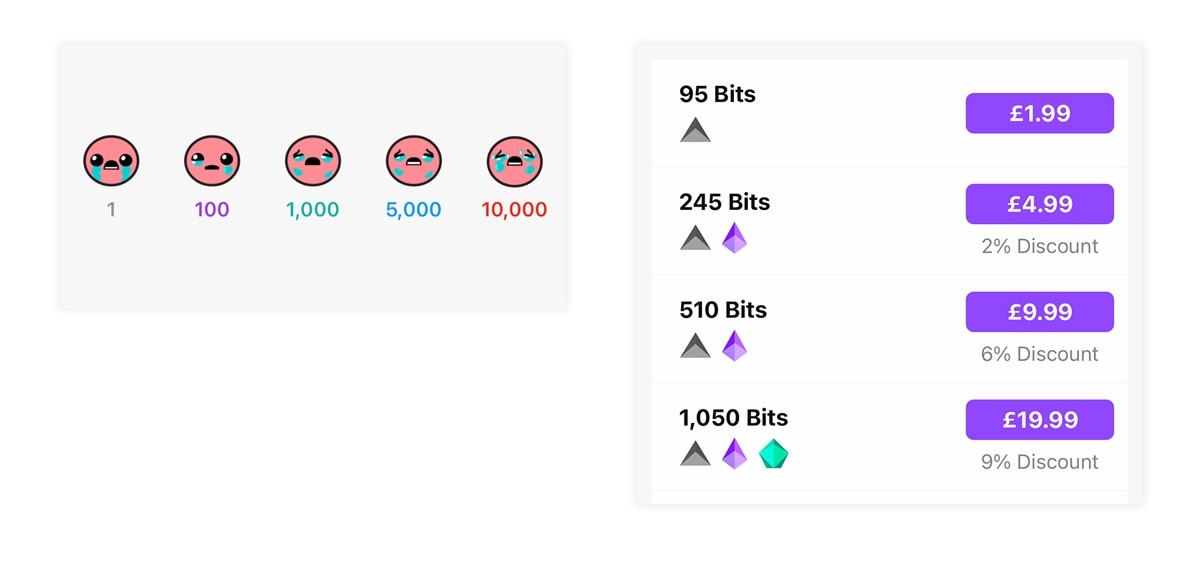
This is a system designed to increase how much you spend, not one that’s optimised for the best user experience.
On their desktop site you can buy ‘Bits’ in more convenient quantities, but it feels like on IOS they’re capitalising on the power of defaults—i.e., because buying through IOS is easier and can be done with Apple Pay.
So, here’s a quick way that Twitch could improve their UX: allowing people to be more efficient in purchasing Bits—i.e., increments of 10, 100 and 1000.
2. Anchor effect
If a group of people are asked to guess how many sweets there are in a jar, then you’ll likely find that whoever guesses first sets a price anchor.
⚓️ The Anchor Effect describes a bias that people have, where they’ll become attached to an initial piece of information. For example, it’d be unlikely for you to guess 50,000, if the person before you guessed 5,000.
This doesn’t only happen with price, but with almost anything. On Twitch, it happens when you’re asked to make a decision about how many months you want to subscribe for.
i.e., once the user has decided to subscribe for 6 months, they’re anchored to that amount of time, before they see the price.
When a new user subscribes to a channel for the first time, they’re shown the benefits of subscribing, and then asked how long they want those benefits for, before being shown a price.
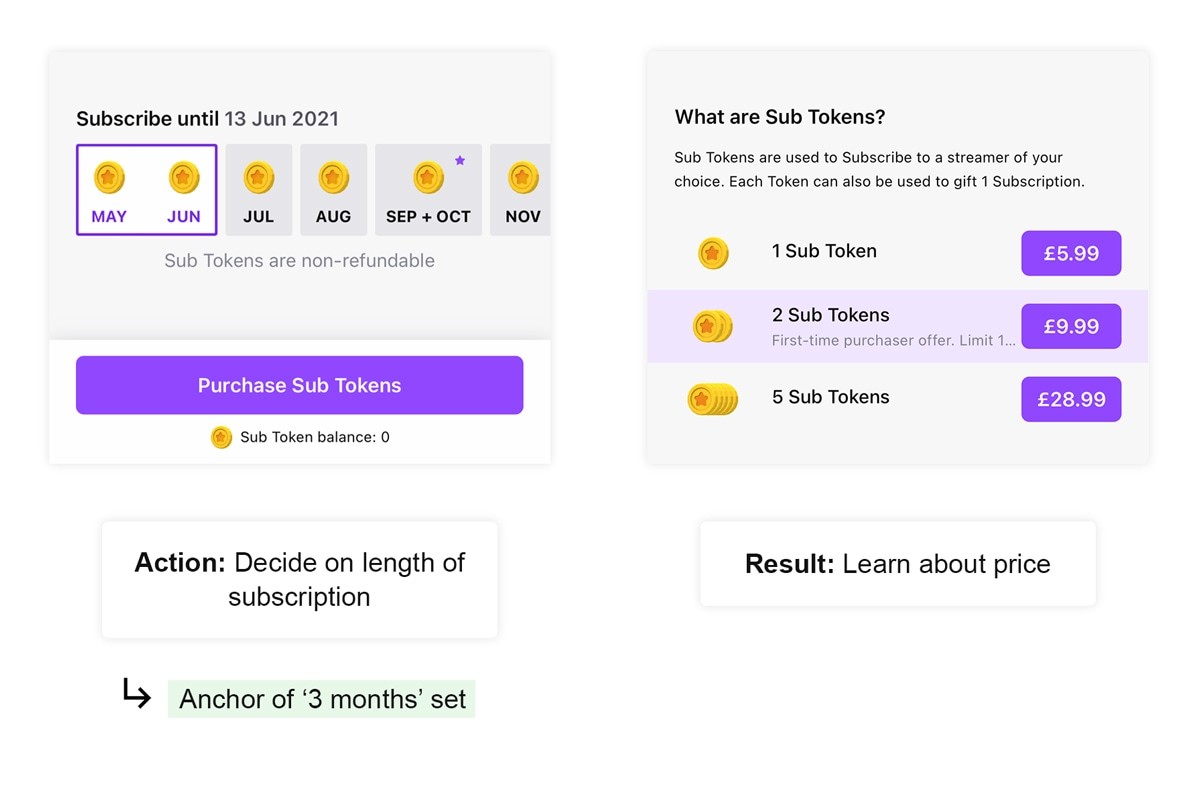
This is also what ultra-expensive watch shops do—they hide the price so you’re not anchored to a good ‘deal’, but rather the benefits of a nice (and probably expensive) watch.
To be clear, although this looks manipulative under a microscope, it may be unintentional.
One thing is for certain though: it’s terrible UX—if nothing else, because buying 3 months of membership required two separate transactions, and flicking back and forth between these two screens.
3. De-risking decisions
Most people don’t like admitting that they were wrong, or having their beliefs challenged. This is so prevalent, that people don’t even like challenging their own past decisions.
It even has a name: 😮💨 Cognitive Dissonance.
This means that once someone has decided to do something (e.g., to buy tickets to a show), they’re unlikely to challenge that decision unless faced with new information—as that would mean that they were wrong before.
The key is this: the decision-making process happens before clicking on a CTA, not at the end of the process.
For example, the self-commitment of clicking ‘Checkout now’ whilst looking at your basket actually makes you more likely to complete the checkout, even if there’s still 10 steps remaining.
When designing products, you need to be aware of where your key ‘decision-making’ moments are, and ensure that they’re orchestrated in the correct way.
In general, you should encourage the user to make the hard decision (i.e., to commit to subscribing), after understanding all the benefits.
Twitch’s ‘Subscribe’ modal is a great example of what not to do—they tell you nothing about what subscribing actually means, and then forces you into making a decision.
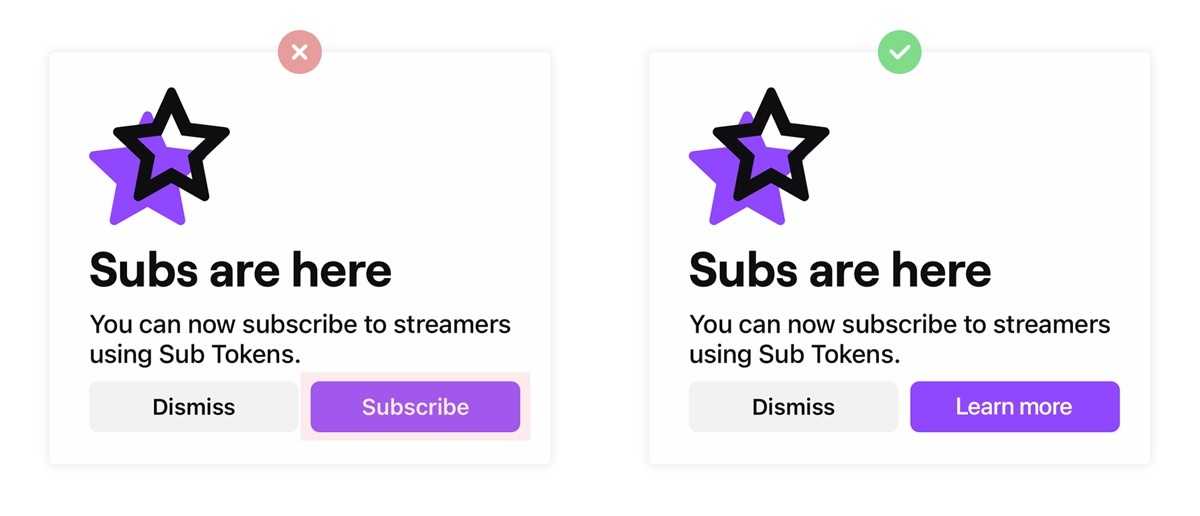
There’s no reason for this to be such a hard fork, and they’d likely increase their conversions through this funnel by de-risking the decision at this stage.
To clarify, the button would go to the same place—the user still needs to learn about what subscribing means—but their self-commitment will be challenged at a later point.
Or simply: you’re letting them learn about subscriptions, without the burden of committing too early.
4. Self-discovery onboarding
A popular type of onboarding is self-discovery—i.e., letting your users’ curiosity be the driving force behind learning.
It can be really effective when done properly. The feeling of independence can be liberating, and the reward loop of learning can feel more natural.
But, for this to be effective, people need to actually be able to teach themselves how things work—it needs to be obvious.
As you’ll see in the case study, there’s very little onboarding or context around Emotes, Cheermotes and Reward Emotes. And that’s a problem, because it’s not self-explanatory.
Part of the issue is that the output of each (essentially an animated emoji) is very similar, and Twitch have done very little to differentiate them conceptually.
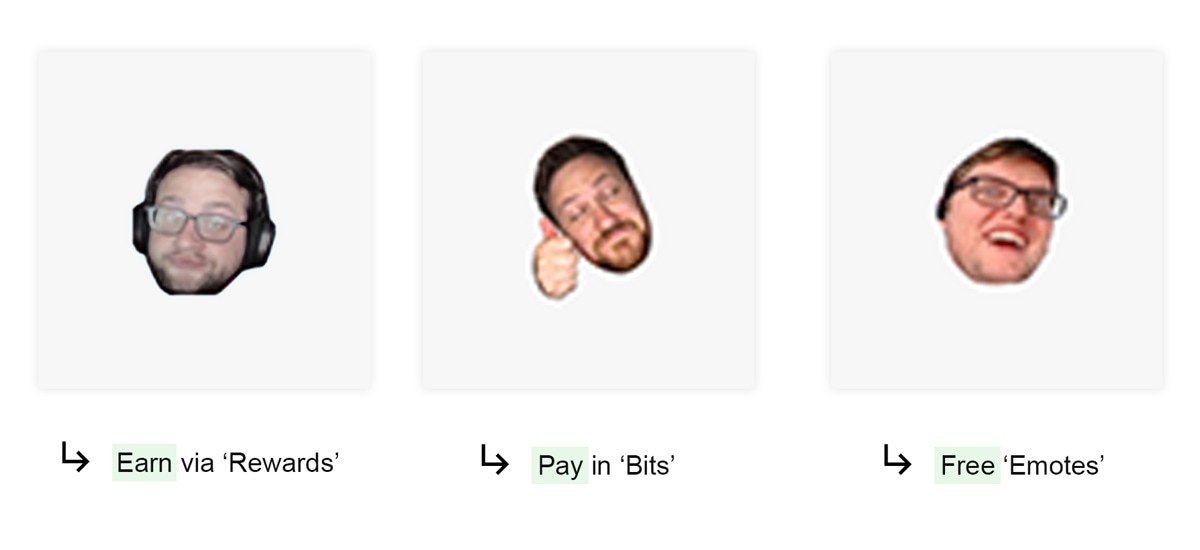
Differentiating between these may not be an issue for regular Twitch users, but it creates a steep learning curve for new users.
By taking more time to onboard users about these concepts, they would probably see an increase in spend—which benefits the streamers too.
In other words, investing time into their onboarding is a win / win.
You’ve finished this study
Become a BFM+ member to track your progress, create a library of content and share learnings within your team.

Other studies picked for you
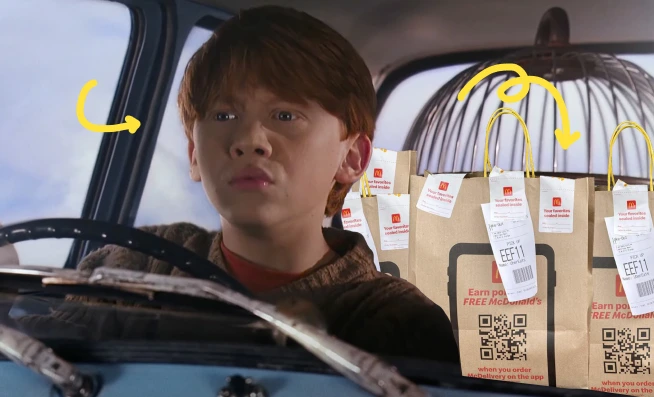
How Product Psychology Could Stop Uber Drivers From Stealing
How upstream thinking could reduce stolen orders, avoid tip-baiting and increase driver happiness.
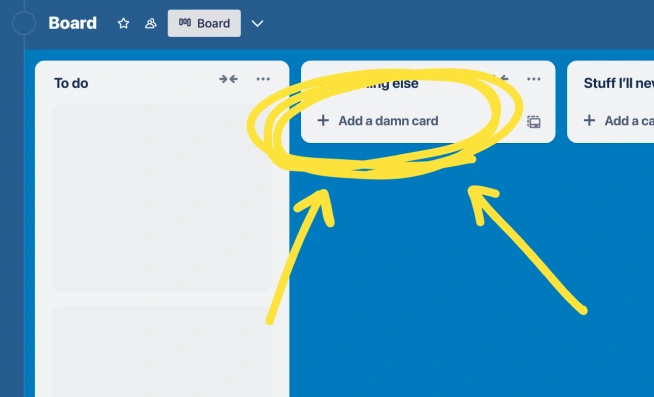
How to Reduce Churn by Doing Your "One Thing"
When it comes to onboarding, it's often more effective to do just one thing (really damn well).
A Masterclass in User Activation (96% of them)Preview this content
Discover the art of setting a goal and then using that to immediately create the perception of success.
